Sar Pass Trek

An ideal trek for beginners
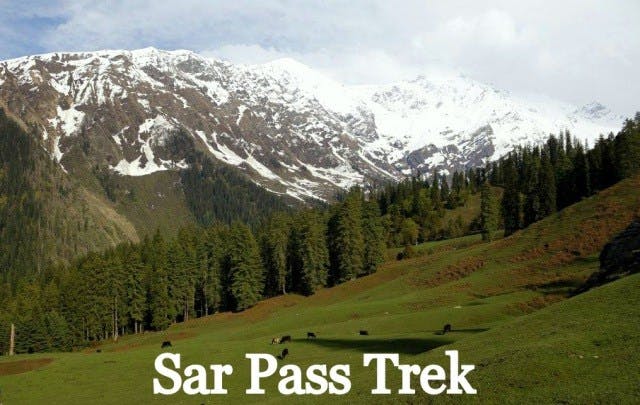
Can You Help Us With Photographs Of This Trek?
We are looking to enrich this documentation with more photos. Pictures go a long way in explaining the trail, more than words ever can. If you have done this trek, can you share your photos with us? We will include them on this page, with due credit to you. Click here to contribute .
The Complete Guide to Sar Pass Trek
Sar Pass is a perfect trek for beginners. It’s apt for those who want to experience all kinds of terrain. Forests, meadows, quaint villages, or snow-covered mountains, this trail offers a gamut of experiences to trekkers. Prashant Jha, a post-graduate from BITS Pilani shares details of this well-explored trek, which lies in the Parvati valley of Himachal Pradesh.
The trek starts from Kasol, which is a haven for backpackers from around the globe, and attracts large weekend crowds; many of which are the city youth, eager for a slice of the bohemian lifestyle. To cater to the tourists, the shops are well-stocked with both, necessities and luxuries.
There are plenty of stay options – both, pocket-friendly and high-end, and one can choose from Israeli, Continental, Indian, and Chinese cuisines.
➤ Short Itinerary
- Trek through forests, meadows and quaint villages.
- Climb to the summit of Sar Pass at 13,799 feet for stunning views of snow-capped mountains.
- The trek starts from Kasol, which is a haven for backpackers from around the globe.
- This trail attracts large weekend crowds.
➤ Trail Information
Day 1: kasol to grahan village.
- Altitude: 1,700 m to 2,350 m
- Distance: 10 km
- Time taken: 4-5 hours
The trail from Kasol to Grahan is a marked one through forests, following the Grahan nalah . It starts from the centre of Kasol and keeps to the true left of the nalah . The trail is easy to navigate and is frequently used by villagers. The gradient being gentle, one can effortlessly cover much distance in a matter of hours.
The trail crosses the nalah and continues before abruptly becoming rocky and climbing uphill, away from the right bank of the river. One may be led to believe that this is not the right path, but one must not go astray.
Soon, the trees will give way to grass and shrubs. One can see some fields as well and can spot bright-colored tarpaulins. These are makeshift stalls with vendors selling refreshments like tea, omelets, and rhododendron syrup! Rhododendrons (locally known as buras ) grow in forests that receive snowfall. Their bright red flowers bloom in spring and are collected to make syrup. Rhododendron petals can be eaten whole and the syrup can be mixed with water to make a refreshing drink (I discovered the benefits of rhododendron on my Har-ki-dun trip, where I happily chewed on a liberal amount of the tangy petals and felt energized immediately).
After a steep climb of about an hour, look out for the village of Grahan, situated on the top of a hill. Camp there for the night. Accommodation is available in guest houses and there is a camping ground after crossing the village. There is a satellite phone in the village, and one may also get network coverage on cell phones.
Day 2: Grahan to Min Thach
- Altitude: 2,350 m to 3,400 m
- Distance: 7 km
From the camping ground at Grahan, a trail goes north, climbing up gently. Villagers use this path often in the morning. This is the way to Min Thach.
After walking for a while, the view opens up and a guide can point to you Min Thach, Nagaru, and Sar Top on the mountain to the right. The trail also becomes steeper and leads into the woods.
After some time, you enter a dense forest; the thick canopy lets in very little sunlight. The slope becomes steeper still and the path is confusing in places.
After toiling for a few hours, the forest opens up to a grassy patch on a ridge. This is Min Thach (“Thach “ means meadow in the local language; much like ‘ Kanda ’ or ‘ Bughyal; ’ it is where the villagers bring their cattle to graze).
To the north-west, across the horizon, stretch Chanderkhani and other ranges. The ridge-line continues to the east and rises up to a cliff covered in snow, on which sits the camp site of Nagaru (a guide can point it out).
To the south-east of the ridge, lie forests. There is some cleared space to pitch a tent. A seasonal vendor’s hut may be found here; it sells tea, coffee and omelettes. Nearby is also a tap that supplies potable water. One can camp here for the night; the ridge will protect you from strong winds. A trench should be dug around the tents so as to allow the natural drainage of water in the event of rain, hail, or snow.
Keeping one day to cover the distance from Grahan to Min Thach. It allows time for the body to acclimatise and warm-up for the trek ahead. However, seasoned trekkers can also start early from Kasol, break for an early lunch at Grahan, and reach Min Thach post-noon.
Day 3: Min Thach to Nagaru
- Altitude: 3,400 m to 3,800 m
- Distance: 8 km
- Time taken: 4-6 hours
From Min Thach, as the crow flies, Nagaru seems not far, but the route doesn’t go straight up the ridge-line; instead, it veers up to the south (looking up at the cliffs, towards the right) and goes into the woods. Depending on the weather, one may find snow here. It is always advisable to start early, for the weather is generally favourable before noon and the snow becomes more slippery later into the day.
After walking for a while, one comes to another ridge-line – a rocky one overlooking a grassy meadow down in the distance. The ridge goes steeply up to the left (eastward), to the cliffs, atop which Nagaru sits. The path to Nagaru goes up this ridge and is well-marked for some hundred metres, after which the tree-line ends and gives way to patches of grass and shrubs.
If there is snow, then great caution has to be exercised, for this is the trickiest and riskiest part of the trek – the slope falls steeply to the valley below and may be slippery! The trail, even if marked, may not be visible in snow. Here, having a guide and a trekking pole is of paramount importance; waterproof gloves will also come in handy. An ice-axe may be used by the guide to chisel away snow for getting a foothold. The trekker would also need to employ proper technique – digging into the snow with his toes, and only once firm foothold is established, putting the other foot ahead in the same fashion.
After a couple of hours, you finally reach a welcoming patch of flatland on top of the hill – this is Nagaru camp site. It feels like a different world! Facing north, one can see magnificent mountains rising steeply across the Parvati valley – with the town of Manikaran also visible. In the di stance, to the north-west lie Chanderkhani and the ranges of the Beas valley. Down below, to the left, one can spot the campsite of Min Thach and the village of Grahan. To the south is a vast expanse of snow rolling up the hill. It is in this direction that one has to continue to reach Sar Pass. However, neither the pass nor the top of the mountain is visible yet.
Though erratic, network coverage is available in some spots. A water tap can be seen near the western edge of the cliff and it may or may not be running, which is why water has to be carried from Min Thach. Camp must be established soon as the winds are very strong and the temperature dips very quickly after sunset.
It gets very cold at night due to the wind chill factor and sometimes the winds are so strong that tents get blown away! It is advisable to retire early, to protect yourself from the cold. Besides, the next day involves an early start.
Day 4: Nagaru – Sar Pass – Biskeri Thach
- Altitude: 3,800 m – 4,200 m – 3,350 m
- Distance: 14 km
- Time taken: 6-8 hours
Wake up before dawn. The previous day’s trek would have acclimatised you for today’s long trek – the same techniques need to be employed. The climb to Sar Pass follows the ridge-line in a southward direction and is steep in some stretches. Feel free to keep up a slow but steady pace as you climb through snow at high altitude.
The snow is easier to walk on and the heavenly surroundings keep one’s spirits high. After climbing up the hill seen from Nagaru, a higher hill that has to be climbed comes into view. A third of the distance to Sar Pass has been covered. To one’s right falls the cliff steeply to the valley below, the ridge is sharper and the climb steeper; so one must be careful. If there has been good snow recently, the climb is similar to what mountaineers are shown doing using ice-axes and crampons!
After climbing for what seems like a long time, one reaches the top of the hill and a sigh of relief and joy escapes as one beholds the view ahead. From the image searches on the web, one would know that this is Sar Pass! Sar Pass derives its name from ‘ Sar, ’ which means ‘pond,’ but the ‘Sar’ is mostly frozen till late in summer. The pass is not the kind one would have in mind – there is no saddle in the mountain range to cross.
The view opens up eastward – the lofty peaks of the Tosh valley are now visible as well. To the south extends the white blanket of snow, flanked by snow-capped mountains – the highest of which seems to be within reach. However, it would take a couple of hours to summit and much distance has to be covered before the next camp.
The onward route moves away from high ground, to the south-east, following the contours of the hill. With deep valleys on the left, one has to walk carefully. After some time, the path climbs up to a ridge running across, and one can see a flag tied to a ‘Trishul’ at the top. The slope is very steep in the last stretch and buried in the snow, one may find a rope, which can be held on to while climbing. This is a pass in the truer sense.
As one reaches the top, the view is exhilarating. After a sharp drop of some hundred feet, unfolds a beautiful valley ahead (This was the highlight of my trek – I had braved snowfall and poor visibility, and my excitement reached a zenith when I reached the top and saw the surreal sight before me!). As one is soaking in the heavenly beauty of the place, a realisation suddenly hits – there is no way to get down the hundred feet drop but by sliding!
The slide is the most fun and completely harmless as long as some precautions are taken – loose belongings (phones, goggles) should be kept inside the bag and the legs should be kept tight together and not be dug in the snow if one wishes to slow down speed; for this, elbows kept firmly by the side of the trunk can be pushed back into the snow.
The slide takes one as far as a kilometre (depending on the snow conditions) to a gentler slope of the valley. After walking for some time, you come across another slope in the valley (not as steep as the first one) and depending upon the snow conditions, you can choose to slide again, for longer than a kilometre, till you reach a level ground. The third change in slope (steeper than the second) comes not long after, and can be covered by sliding again (if there is snow).
The slide will take you past snow covered trees, through a valley that has now narrowed, and bring into view to the left, a lovely meadow. This is the camp site of Biskeri Thach, which is reached after crossing a few streams.
Biskeri presents a sublime view of the pine forests, the majestic mountains and lovely grasslands. The villages of Tosh, Pulga-Tulga, Bursheni, and Nakthan can be seen in the valley below. The grassland of Bun-Buni lies atop a ridge to the north-east. Nearby is a waterfall that comes down from the mountains that form a backdrop behind Biskeri. There is no dearth of water as a stream runs beside the camp site and there also is a water tap. Network coverage is also available.
Day 5: Biskeri Thach to Bursheni
- Altitude: 3,350 m to 2,400 m
- Time taken: 4-5 hours
From Biskeri, a steep path goes down, keeping to the left of the stream. After some time, cross the stream and walk across a plot of land with fencing. The trail ends here, so one has to go through the plot (search for a breach in the fence) to find the trail again, which leads into the dense forest.
There are many trails here and only a guide can tell the right one, which keeps to the north-east. After descending in the dense forest for a good time, spot a crossing on a stream, with a camp site across. However, to get to the crossing is tricky! You have to rappel down twenty feet of rock with the help of a rope. After crossing the stream on wooden planks, climb up to the camp site that has a few vendor tents. The path to the village of Pulga goes to the left of the camp site.
Soon after, one comes to grassland fringed by trees, which is one of the most beautiful places in the entire trek. The path continues through a dry channel into the woods, the descent becoming steep again. In some time, one reaches a clearing in the forest where trees have been felled. The path continues to go down past a fenced property, and reaches a lumber yard belonging to the forest department. The track goes past, following a water pipeline that takes you to the village of Pulga.
The twin villages of Pulga and Tulga are separated by a stream. From Tulga, one crosses a bridge on the river Parvati, which has been dammed ahead for a hydroelectric power project, to reach the village of Bursheni. Bursheni is the last village in the Parvati valley connected by road (a bumpy one) and is used as the road head for treks to Kheerganga, Mantalai Lake, Pin Parvati Pass, and for treks in the Tosh valley. You can get buses or taxis to Kasol, Bhuntar and other places from here.
Thus comes to end a trek, the memories of which would be cherished for long.
➤ What to Take on Your Trek
Watch this instructional video about what to take and what not to take on a high-altitude trek.

- Backpack (40-60 litres): Backpack with sturdy straps and supporting frame. Rain cover for backpack is essential.
- Daypack (20 litres): It is mandatory to carry a daypack if you choose to offload your backpack. If you decide to carry your backpack, day pack is not required.
- Trekking shoes: No sports shoes. The shoes need to have soles with good grip and ankle support. Do not wear a new shoe to a trek. It might cause blisters. Before bringing them to trek, wear it for a week to make it softer. We recommend FORCLAZ 100, 500, and 600.
- Socks (3 pairs): 2 cotton pairs, 2 woolen pairs (mostly to be used on campsites and while sleeping. Keep them dry.)
CLOTHES – REGULAR
- Trek pants (3 pairs including the one you are wearing): We highly endorse synthetic quick-dry pants as they are light. Plus, when it’s cold you can wear one over the other. While trekking a pair is what you would carry apart from the worn. You could keep the third pair for your return journey. Alternative : Cotton pant with many pockets / Track pants are comfortable too. Please do not get Denim jeans, shorts or 3 quarters to trek.
- Collared t-shirts (3 pairs including the one you are wearing): Preferably light, full sleeve t-shirts. The collar and the sleeves prevent sun burns on the neck and arms. Avoid loud colors that would distract birds and animals.
- Full sleeve woolens (2 pairs including the one you are wearing): We endorse fleece over wool as it is light weight, compact and warm.
- Thick jacket: Carry 1 hollow full sleeve windproof jacket/down jacket
- Thermal inners: 1 pair of lightweight, upper and lower (optional)
ACCESSORIES
- Raincoat/poncho: A lightweight poncho is preferred as it covers your rucksack as well from top. Raincoat can also be used as wind proof when required. Enquire Indiahikes for availability of ponchos at the base camp.
- Balaclava: The cap must cover your ears and neck. You may also use scarves.
- Synthetic handgloves: Ensure that the gloves are waterproof.
- Suncap: 1 pair of nice warm gloves required, fleece or woolen. 1 pair of water proof/resistant, wind proof gloves. You get very thin inner gloves nowadays. You may get one of those to use layering.
- Sunglasses: Curved ones will cover your eyes well. No blue coloured sunglass — they don’t block UV. Blacks, greens, browns are fine. Avoid multi tone sunglasses. Sunglasses prevent snow blindness. Sunglasses are mandatory for this trek.People who wear spectacles, choose one of these – contact lenses, photo chromatic glasses, or if either of the above is not possible, wear your spectacles and carry a big sunglass that can be worn over your spectacles.
- Toiletries (Sunscreen – SPF 40+, moisturiser, light towel, lipbalm/chap stick, small soap, toilet paper, wet tissue)
- Repair kit (needle & thread)
- Headlamp/LED torch: Mandatory
- Camera: Carry all accessories – spare batteries, charger, etc.
- Cutlery: Carry a plate, spoon, coffee mug & a lunch box. We insist on trekkers getting their own cutlery for hygiene reasons. To save weight, you may use your lunch box to have food in it and also carry it.
- Water bottles: 2 bottles, 1 Litre each. Packaged drinking water bottles like Aquafina, Bisleri and others are not allowed.
- Trekking pole: Trekking pole is mandatory.
- Plastic covers: While packing, use plastic bags to compartmentalize things and carry few extra plastic bags for wet clothes.
PERSONAL MEDICAL KIT – Mandatory
- Diamox – 10 tablets (to prevent AMS)
- Crocin – 6 tablets (fever)
- Avomine – 4 tablets (motion sickness)
- Avil 25mg – 4 tablets (allergies)
- Combiflam – 4 tablets (Pain killer)
- Disprin – 6 tablets (headache)
- Norflox TZ & Lomofen– 6 tablets each (diarrhea)
- Digene – 10 tablets (acidity)
- Omez/ Rantadine – 10 tablets (antacids)
- Crepe bandage – 3 to 5 meters
- Gauze – 1 small roll
- Band aid – 10 strips
- Cotton – 1 small roll
- ORS – 10 packets
- Betadine or any antiseptic cream
- Moov spray (aches, & sprains)
MANDATORY DOCUMENTS
Carry original and photocopy of government photo identity cards with you (driving license, voters ID, etc.)
Tips & Advice
- Avoid sports shoes. They are ill suited for trekking. We recommened FORCLAZ 100, 500, and 600. Wear the shoes for a week prior to the trek to avoid shoe bites/blisters on slope.
- We highly endorse synthetic quick-dry pants. They are light and can be worn in layers when it gets cold. Cotton pants/track pants are an alternative.
- Jeans,shorts and 3/4 pants are not suitable for trekking.
- Light full sleeve collared t-shirts are the best option. Avoid round neck t-shirts which exposes the neck during cold weather and may cause sun burns during the day.
- We endorse fleece jackets over wool as it is light weight, compact and warm. It is better to layer your clothing with multiple light sweaters than to carry one thick heavy jacket.
- Thermal inners are optional for those who are more sensitive to the cold.
- You may use scarves as an alternative to balaclavas.
- People who wear spectacles, choose one of these – contact lenses, photo chromatic glasses, or if either of the above is not possible, wear your spectacles and carry a big sunglass that can be worn over your spectacles.
- We insist on trekkers getting their own cutlery for hygiene reasons.
- While packing, use plastic bags to compartmentalize things and carry few extra plastic bags for wet clothes.
➤ How to Get Fit for your Trek

Minimum Age:
Past experience in trekking:.
Useful but not essential.
How to get fit for the Sar Pass Trek:
Fitness required:.
You need to be in good physical condition before the start of the winter camp. You should be able to jog 4 kms in 30 minutes before commencement of the trekking expedition.
Your physical fitness is important for a successful completion of the trek. Training yourself to get to a jogging distance of 4 km under 30 minutes makes your lungs strong and gives it ability to process less air for more work.
Here’s a simple and highly effective fitness plan that will help you be better prepared.
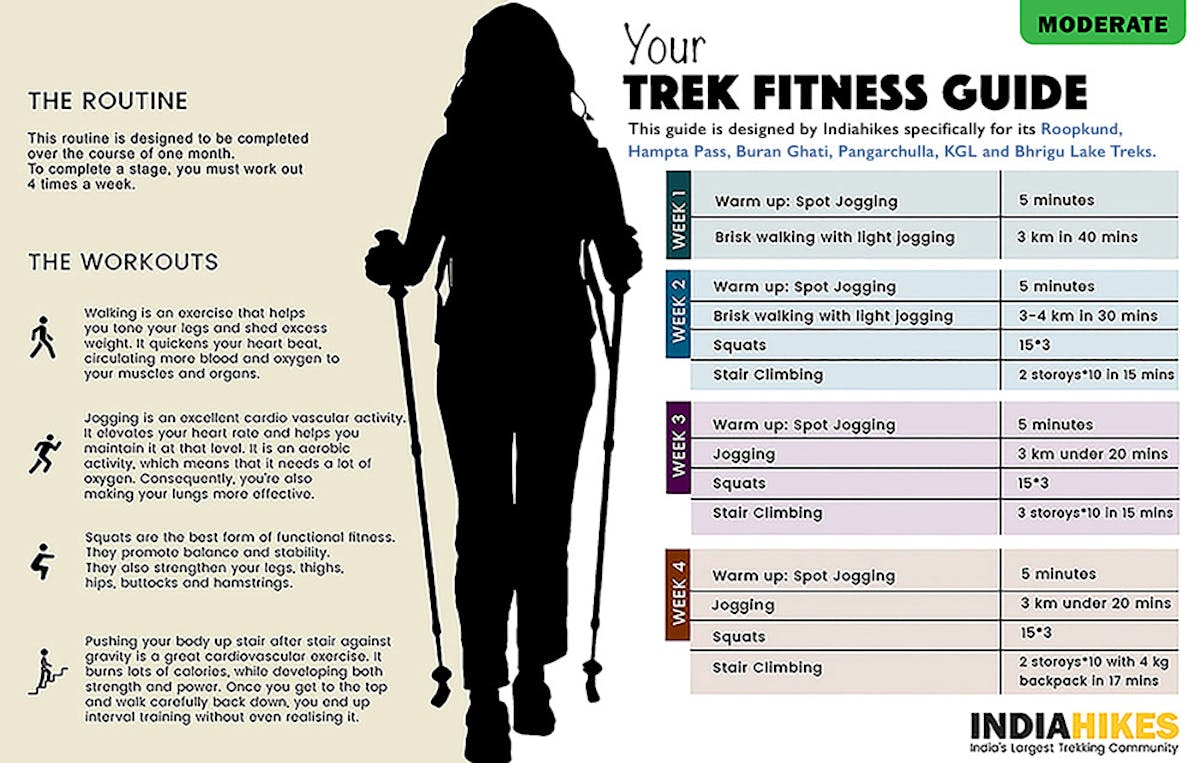
Flexibility Exercises
Flexibility is the ability of the muscles and tendons to relax and stretch easily. It determines the amount of movement your bones can make in any direction around joints such as shoulders, elbows, hips, and knees. Stretching improves your posture and helps to prevent low back pain. Stretching your hamstrings, quadriceps, hip flexors, and lower back muscles regularly promotes relaxation in the tissues, reducing the strain on your back. On your trek, it is important that you arrive on the slopes with your muscles relaxed. Carrying a backpack, however light, can become a strain after a while. These exercises will help you be in good shape before the trek.
Warm-up stretching exercises loosen tendons, increase blood circulation, and help prevent injuries during your workouts or any activity. Cool-down stretching helps relieve muscle soreness and tightness.
1. How difficult is the Sar Pass trek?
Sar Pass is an easy-moderate trek suitable for fit beginners.
2. Can Sar Pass be done in the winter?
Sar Pass is not recommended during the winter months (December to February) due to the presence of heavy snow along the route. This trek can be best experienced during the spring season when you get snow in the higher reaches.
3. What is the maximum altitude of the Sar Pass trek?
Sar Pass takes you up to 13800 feet in 3 days.
Author : Prashant Jha
Upcoming Treks

Bijli Mahadev Trek
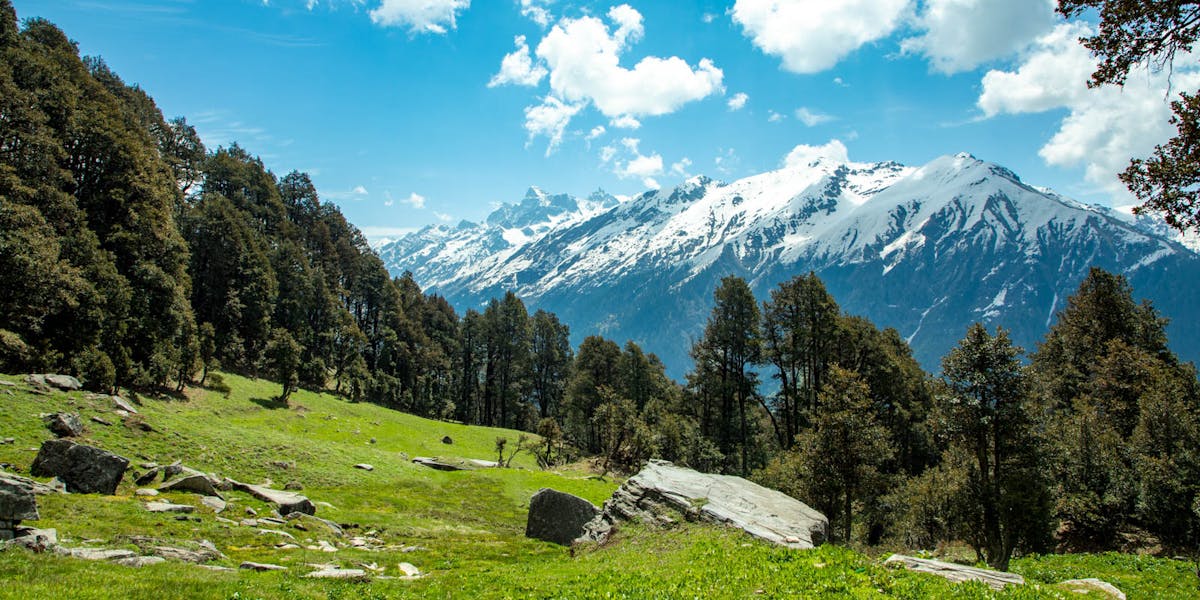
Chandrakhani Pass Trek
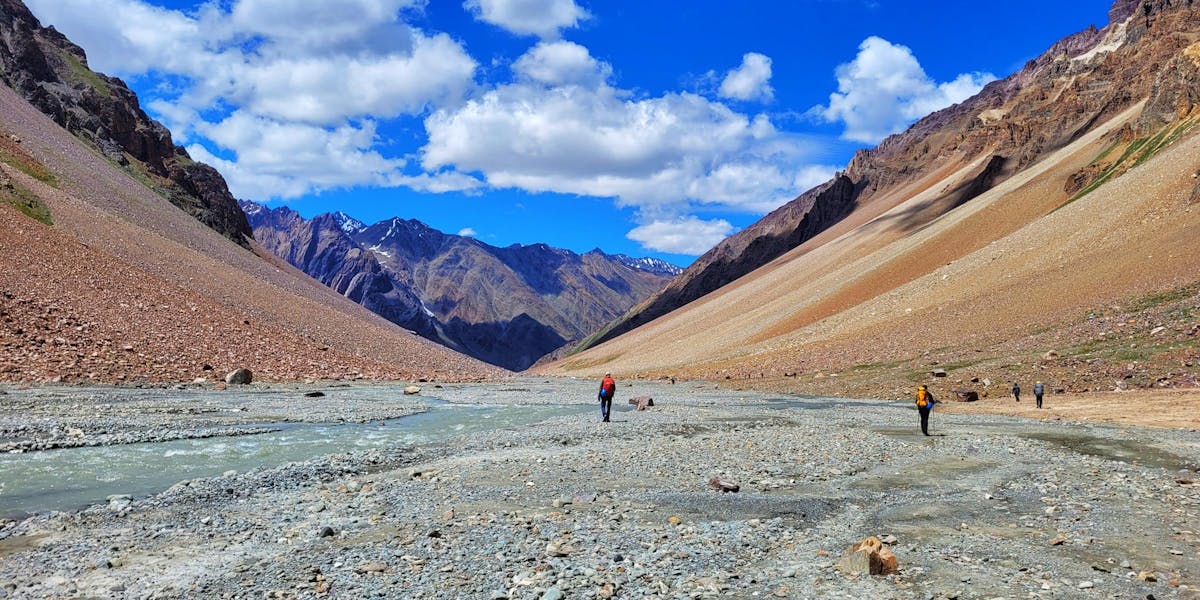
Pin Bhaba Pass
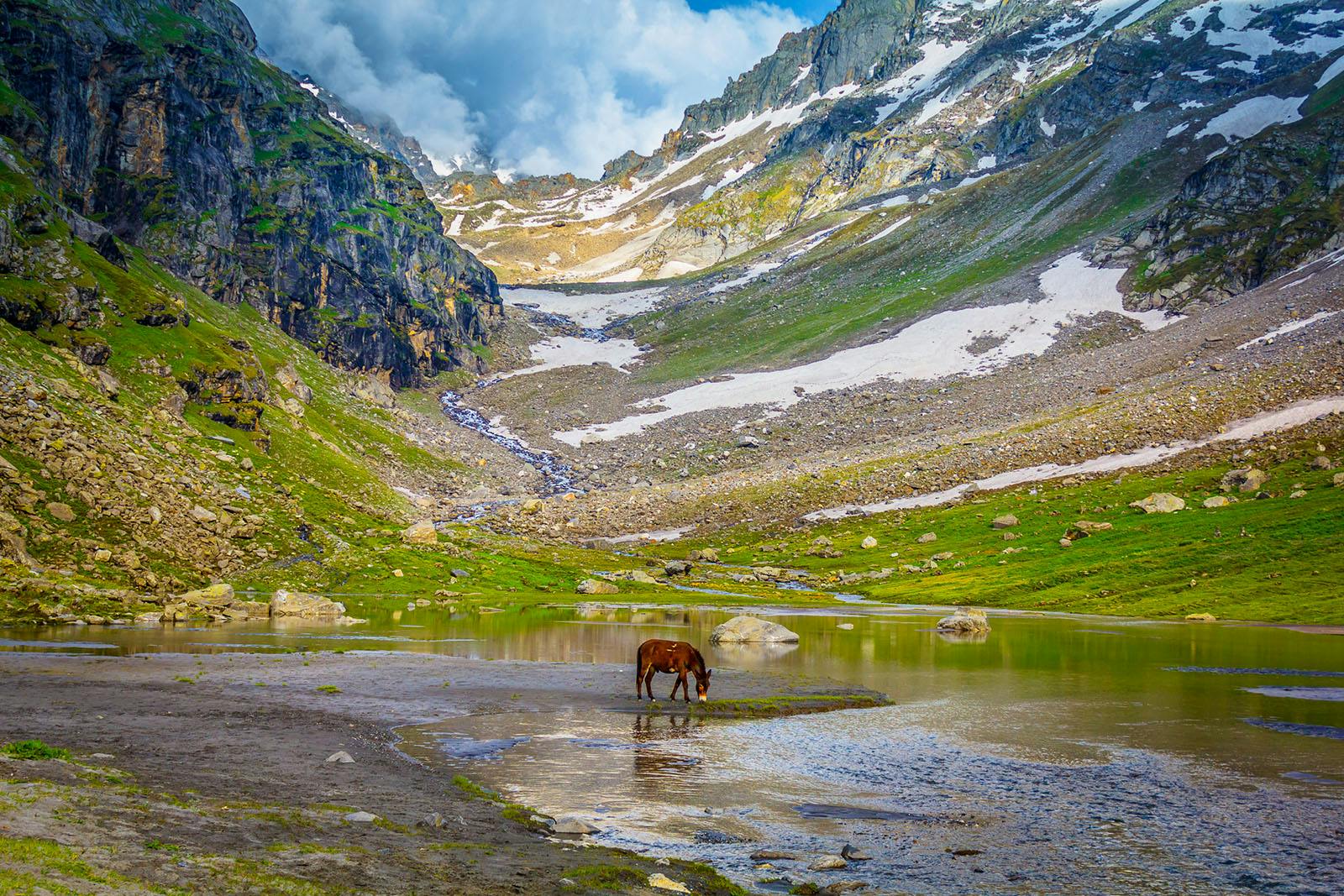
Hampta Pass
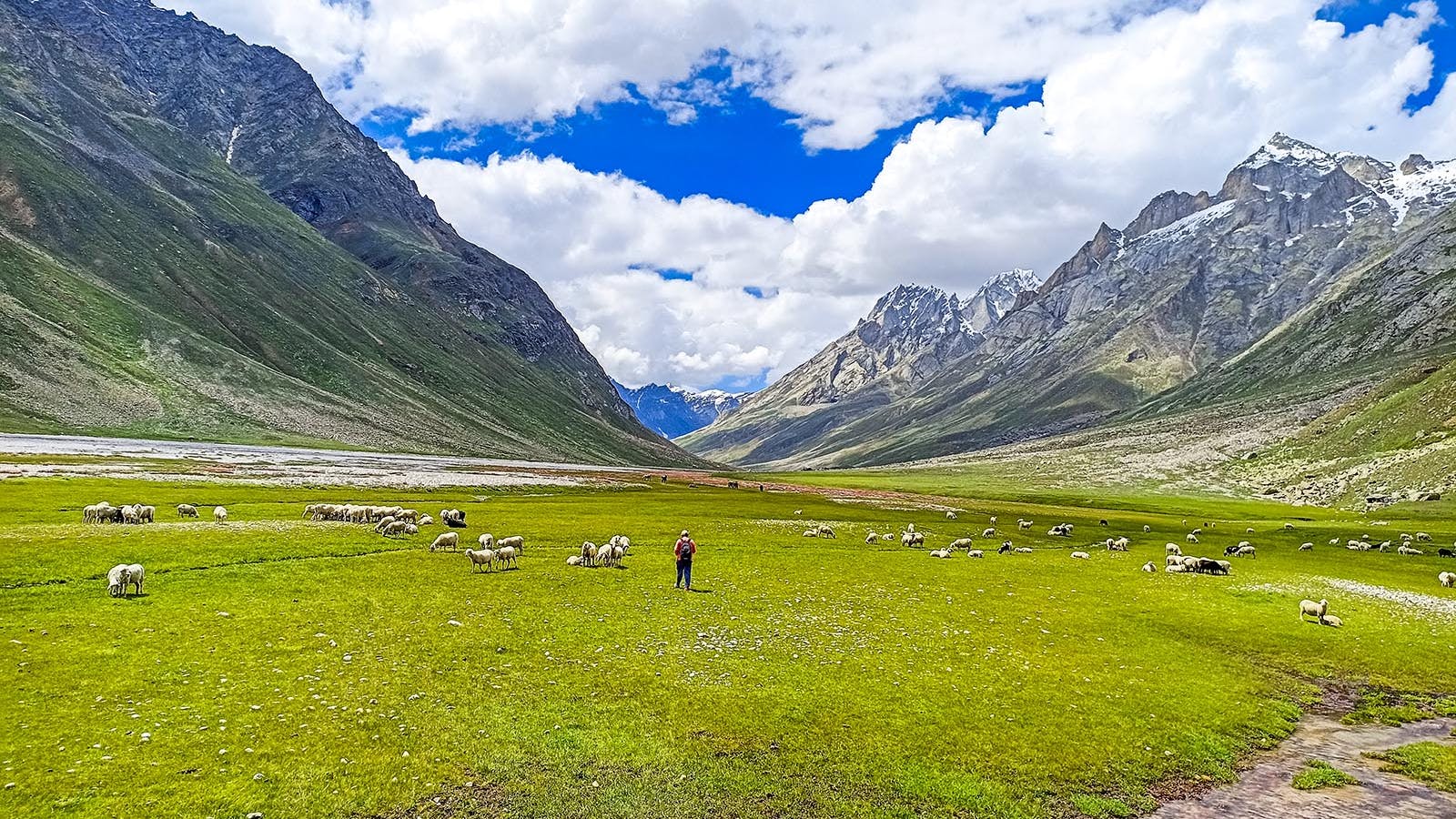
MIYAR VALLEY TREK
Sign up for our much loved Weekly Mailer
We have terrific trekking tips, trek updates and trek talks to look forward to
Treks by Categories
Treks by season, treks by month, treks by duration, treks by difficulty.
- Easy - Moderate
- Moderate - Difficult
Treks by Region
- Uttarakhand
- Himachal Pradesh
- Lahaul and Spiti
- Jammu & Kashmir
- West Bengal
- Chhattisgarh
Treks by Experience
- Family Treks
- Stargazing Treks
- Senior Treks
- Adventure Therapy
- Summer Camps
- Youth Camps
- Cancellation policy
- Work with us
- Our sustainability practices
- Privacy Policy
- Terms & Conditions
080 468 01269 Mon to Sat - 9.30 AM to 7.30 PM Sun - 9.30 AM to 6.30 PM
Bengaluru Office
139, Defence Colony Road, Defence Layout, Sahakar Nagar, Bengaluru, Karnataka 560092
Dehradun Office
Mohabbewala, Titan Road, Near Titan Factory, Chandramani Khalsa Dehradun - 248002
© 2024 Indiahikes Private Limited
All images are copyrighted by their respective authors.

Sar Pass Trek
Sar pass trek in himachal pradesh.
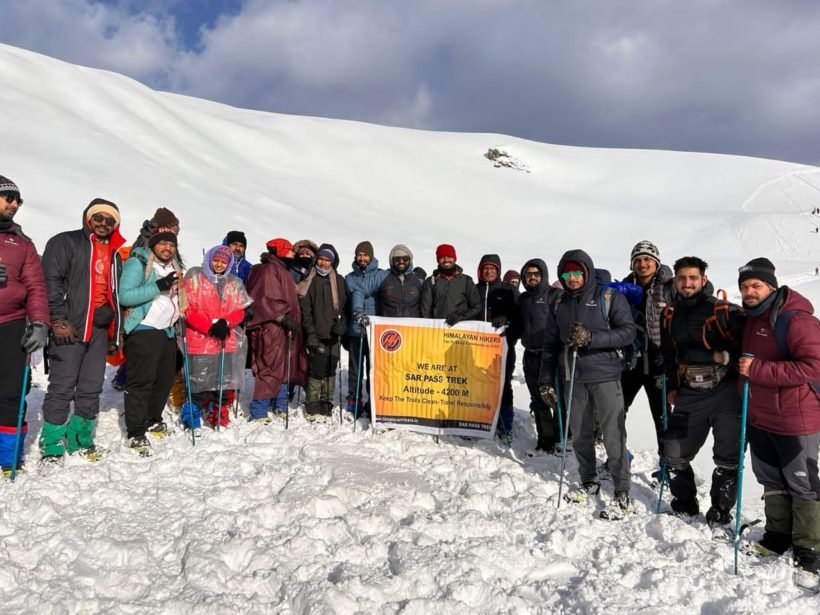
Description
Reviews (18), things to take, available dates, include / exclude, the sar pass trek is a popular trekking route in the parvati valley of himachal kasol – india. -2024- complete information, itinerary, route, map, best season.
Sar Pass Trek is a stunning trek from Grahan village ending in Barhseini in Kullu Valley . The trek is recommended for all those who love adventure, snowy landscapes, and high mountains.
The trek starts from Kasol where you will PASS through pine forests, magnificent meadows, snow-capped mountains, and some of the most jaw-dropping landscapes which make Sar Pass one of the best treks for beginners. You will also PASS by a frozen lake (Called Sar in the local dialect) from where it got its name.
The total trek distance is 37 km. Once you reach the PASS almost close to 14,000ft, the view from the PASS is absolutely breathtaking because of the majestic mountains of Parvati Valley.
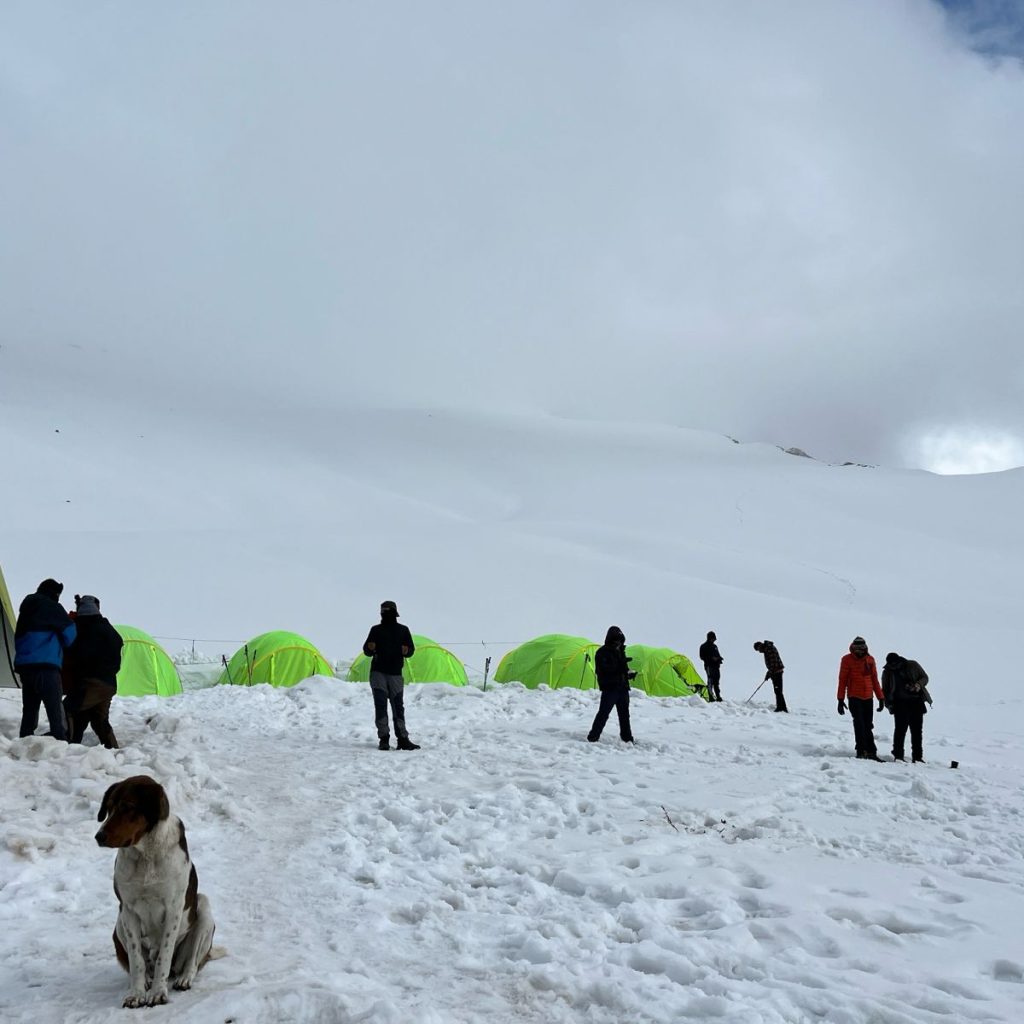
Here are some highlights of the Sar Pass Trek:
- Scenic Beauty: The trek takes you through beautiful forests of oak, pine, and deodar trees, offering stunning views of the surrounding Himalayan ranges. You’ll come across enchanting meadows, gushing streams, and charming villages, making it a visual treat for nature lovers.
- Sar Pass: The highlight of the trek is reaching the Sar Pass, which sits at an altitude of approximately 13,800 feet (4,200 meters). The pass offers panoramic views of the snow-clad peaks of the Parvati Valley, Tosh Valley, and the mighty Himalayas.
- Challenging Terrain: The Sar Pass Trek is considered moderately difficult, making it an ideal choice for trekkers looking for a challenge. The trail includes steep ascents, narrow ridges, and tricky descents, which add an adventurous element to the journey.
- Camping Experience: During the trek, you’ll get to experience camping in the serene Himalayan wilderness. Camping sites like Grahan, Min Thach, Nagaru, and Biskeri Thach offer stunning views and a chance to connect with nature.
- Cultural Interaction: The Sar Pass Trek takes you through traditional Himachali villages where you can interact with the locals and get a glimpse into their way of life. It’s an opportunity to learn about the local culture, traditions, and cuisine.
- Adventurous Activities: The Sar Pass Trek also offers opportunities for adventure activities like rappelling and rock climbing. These activities add an extra thrill to the overall trekking experience.
- Hot Springs: After completing the Sar Pass Trek, you have the option to visit the nearby Manikaran hot springs. These natural hot water springs are considered sacred and are believed to have medicinal properties. It’s a perfect way to relax and rejuvenate after the trek.
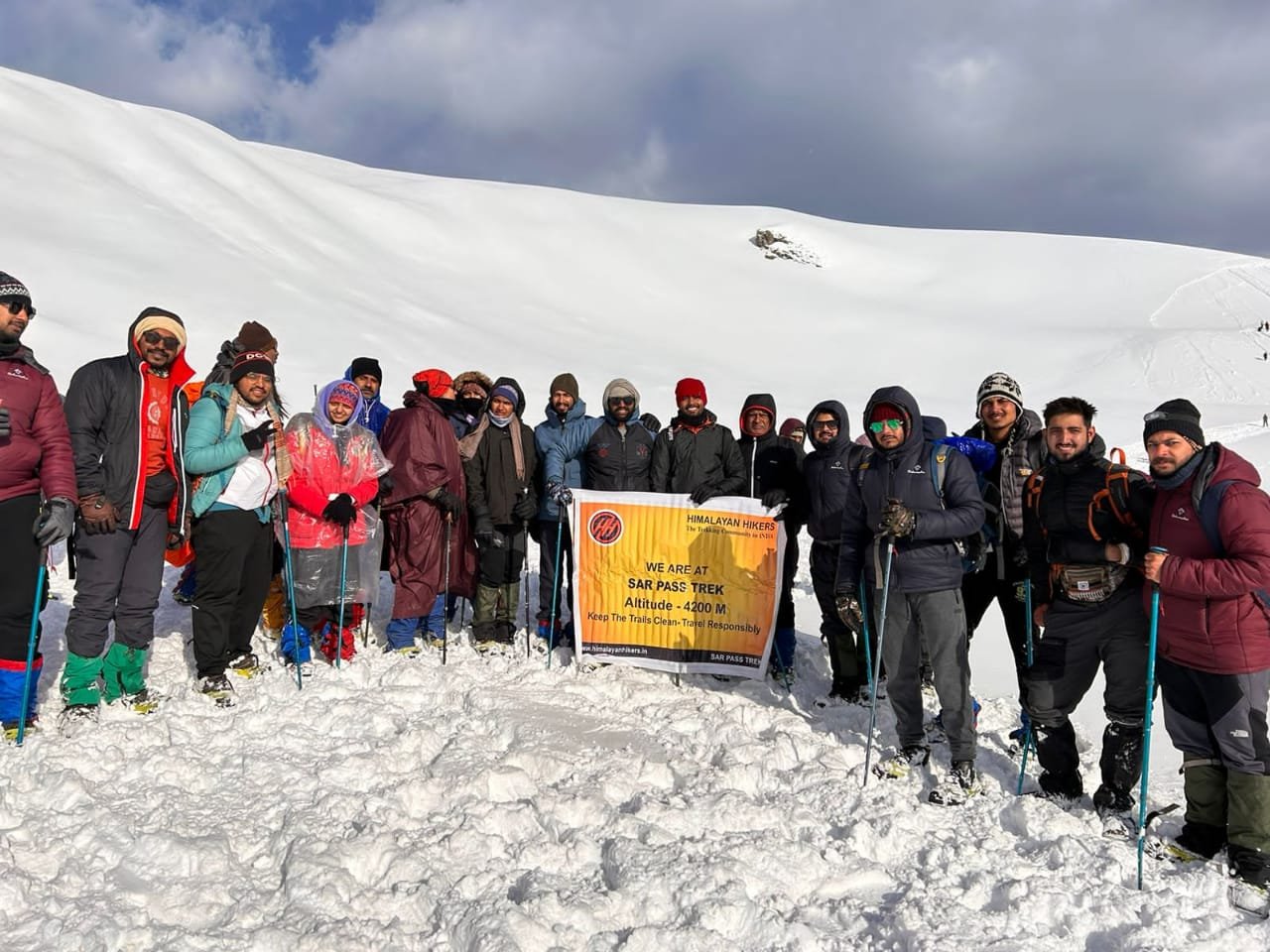
This trek will surely give an Adrenalin rush and thrilling experience adorned with alpine forests, wildflowers, and magical valleys.
Sir Pass Trek is a high-altitude mountain pass trek located in the state of Himachal Pradesh in India. It is considered to be one of the most challenging and scenic treks in the region. The trek begins from the village of Kasol and takes you through the lush green forests, meadows, and valleys of the Parvati Valley.
One of the unique features of Sir Pass Trek is the diverse landscapes and terrain it covers. The trek takes you through pine forests, river streams, and vast meadows, and also involves crossing high-altitude passes covered in snow and ice. This diversity in terrain and landscape makes the trek all the more challenging and exciting for adventure seekers.
Another special aspect of the Sir Pass Trek is the breathtaking views it offers. During the trek, you will get to witness stunning vistas of snow-capped peaks, glaciers, and valleys. The trek also takes you through remote villages and hamlets where you can experience the local culture and traditions.
Overall, the Sir Pass Trek is a unique and challenging adventure that offers a truly unforgettable experience for trekkers and nature lovers.
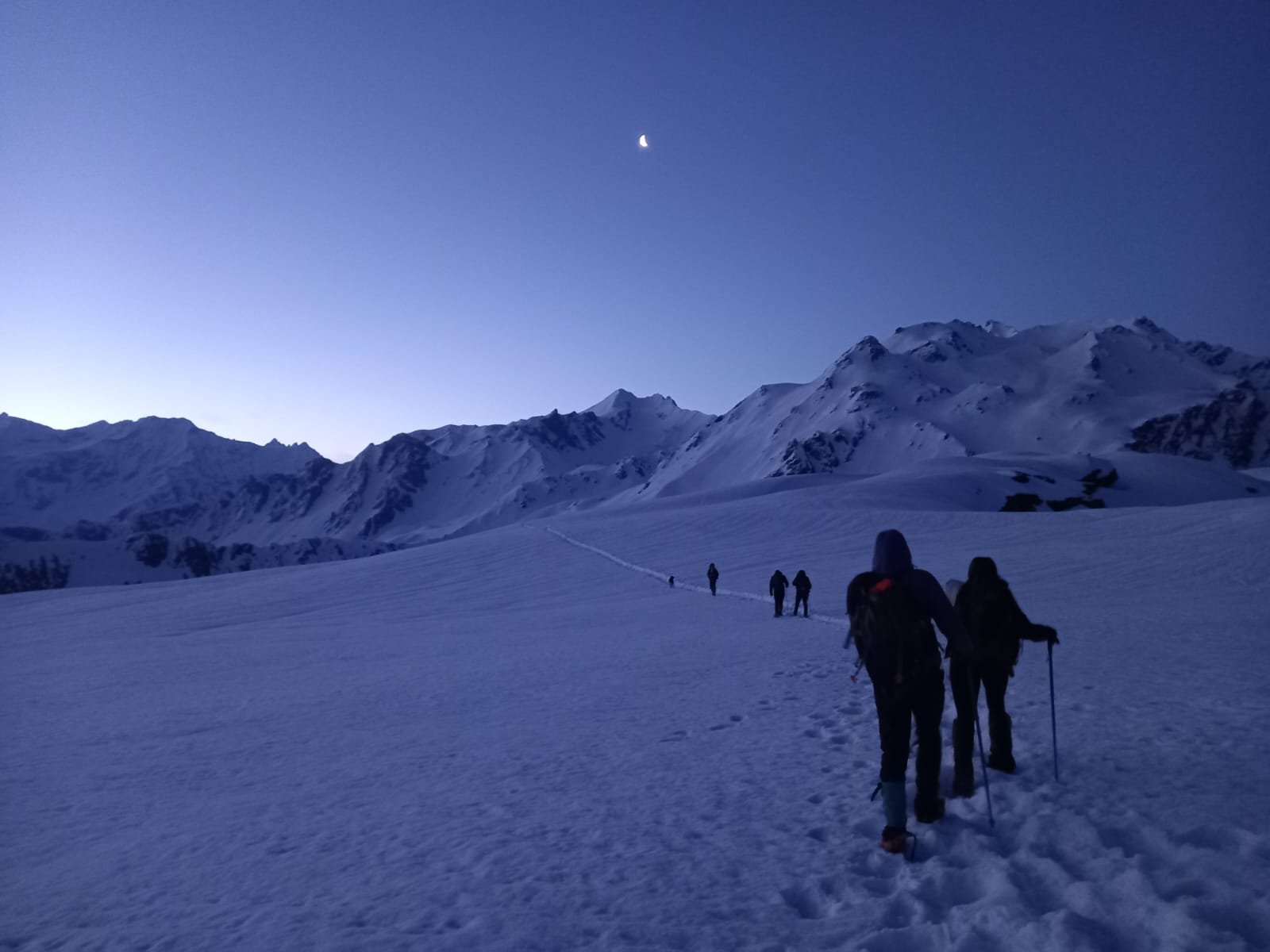
PASS by a glacial Lake SAR Himachal Pradesh
SAR means Lake in the local language, this trek which is at an altitude of 13,816 feet is named Sar Pass because you have to PASS by a glacial Lake “Sar”. It lies in the Parvati valley of Himachal Pradesh and the starting point of this trek is Kasol.
Because of its ease of difficulty, this trek is ideal for first-time trekkers. It’s a classic choice for those who want to explore a variety of terrain all in one trek. This trail provides trekkers with a range of experiences, including forests, meadows, quaint villages, and snow-covered mountains.
- Experience the majestic views and local legends of these spectacular snow-capped peaks.
- Get a chance to explore the wild and exotic vegetation of the Himalayas. Pink rhododendrons painting the trails at various points is a sight not to be missed
- Challenge yourself to explore the thrill of various ascends and descends.
- Immerse yourself in the breathtaking view from the top of Sar Pass.
- The lavish green meadows of Biskeri Thatch would exceptionally persuade you to yearn for more.
- Bring back a lot of souvenirs and memories from this journey.
Sar Pass Trek is an Ultimate Trek for Beginners
One can experience all kinds of trails, and go through Himalayan old fashioned and alluring villages, wide and narrow meadows and forests.
You get to experience terrain varieties on this trek and its starting point is Kasol , away from cities . The people from different areas visit this place and it’s a famous tourist destination.
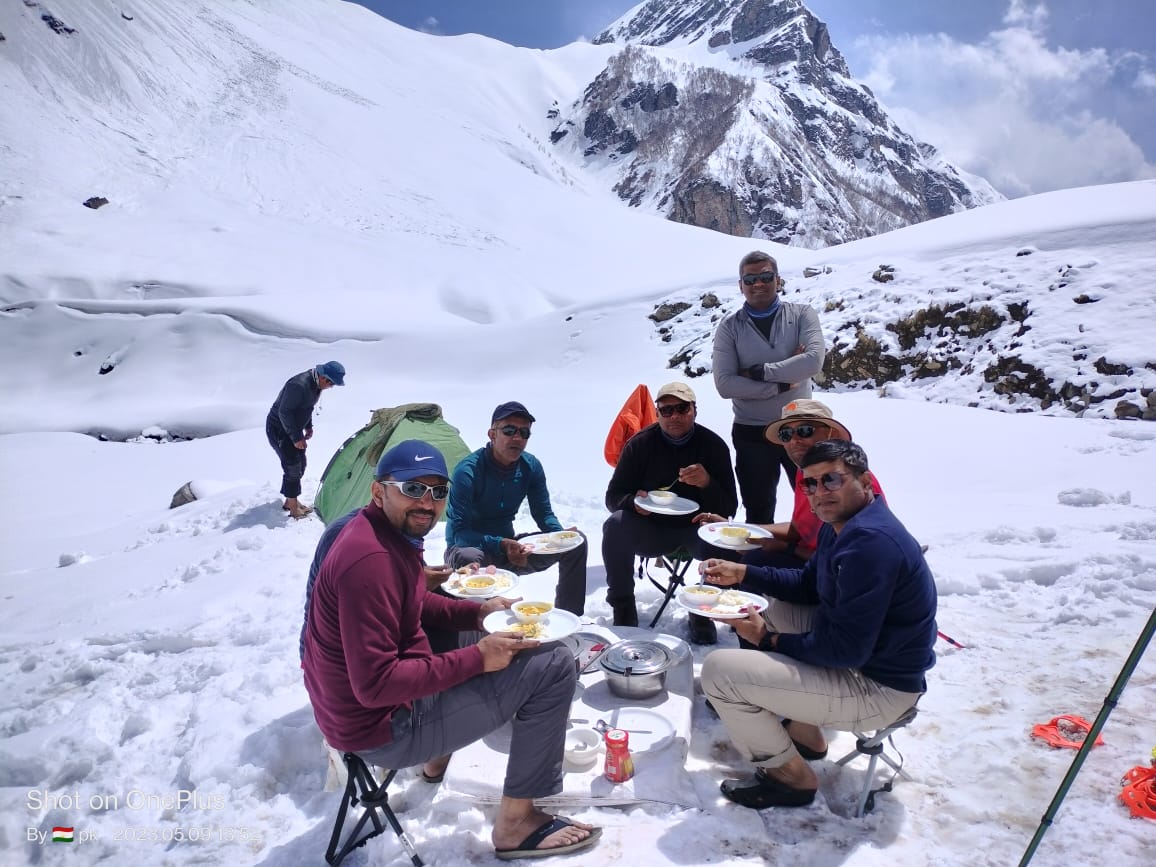
Beauty in Abundance in Sar Pass Trek
Sar Pass has got inherent beauty, peace and adventure, everything! Start from Kasol and trek through rich forest to reach Grahan village .
The views of Parvati valley are spell binding and will leave you speechless.
Trek through Biskeri Thach, a wide meadow and this trek will take you to the heavenly Sar Pass.
Some of the trek highlights
The base camp for this trek is Manali, which is located near the Parvatiriver’s banks in the Parvati valley. The trek to Sar officially begins in Kasol, a town well-known for its pretty coniferous forest and mountain streams. The trek trails through dense forests and progresses to a total snow-covered setting. The trail then further loops through pining forests, charming old-world villages, majestic snow-capped mountains, and some of the most breathtaking scenery.
Rhododendrons abound in the forest near the descent; trekkers can expect to be taken aback by the breathtaking scenery. The Nagaru campsite which is also the highest point during the entire trek is blessed with beautiful mountains across the Parvati valley. It arrives after the shepherds trail of Mung Thatch. During the trek, hikers pass through several small meadows, most of which are grazed by villagers with their livestock
Things to Look out for-
- The trek is certain to provide unrivalled feelings of accomplishment.
- Various villages with many opportunities to interact with the locals will keep you entertained throughout the journey.
- Explore the enthralling forest of rhododendrons.
- Various ascents and descents will encourage you to put your endurance to the test and eventually overcome them.
- The panoramic view of snow-covered trails and peaks from the top is well worth the effort trekkers will expend on their journey.
- Camping under the clear night sky filled with stars is an experience in and of itself
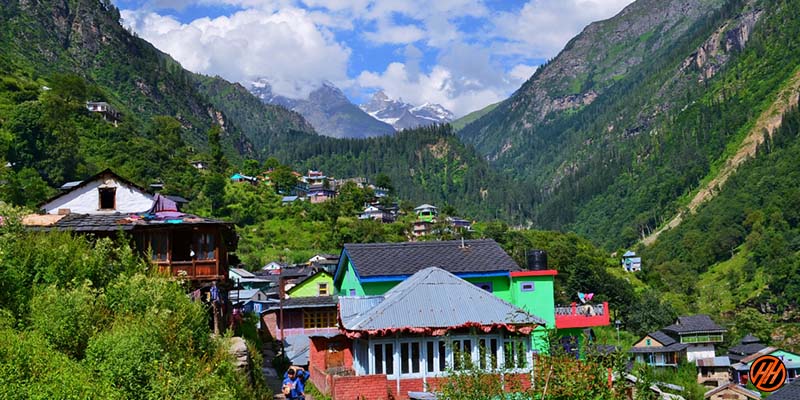
Before heading towards the itinerary, it is really essential to perceive the reason behind choosing the Sar Pass
Sar Pass trek is a high-altitude mountain trek Altitudes is 4200 Meters
The Starting trail is easy to moderate as compare to other treks this is an easy to moderate trek. So, this trek is for beginners, or family or school tour. First time can easily do this trek.
Need proper gear & clothing for sub-zero temperature?
You got to see so many heavenly bodies at one place like the panoramic view of the mountains of Parvati Valley, you can see pine forests, different variety of flora and fauna
I think Do spare time in Interaction with our local’s team, and you will get to know about some of the ancient tales of Indian mythology and our local cultures, this is good ideas for trekkers
Beautiful landscapes so carry proper photo gear & Extra battery backup.
The backpack should not exceed 12 kg only
For Himalayan Hikers or trekkers, it’s crucial to have some emergency medical support available, given the remote and rugged terrain they often traverse. Here are some essential medical supplies to consider carrying:
- First Aid Kit : Include bandages, antiseptic wipes, adhesive tape, gauze pads, scissors, tweezers, and a CPR mask.
- Oxygen cylinder- Oxygen can be beneficial in alleviating symptoms of altitude sickness, such as headache, dizziness, nausea, and shortness of breath. Administering oxygen can provide relief and help prevent the condition from worsening.
- Personal Medications : Any prescribed medications should be carried in sufficient quantities.
- Pain Relief : Ibuprofen or acetaminophen for pain relief in case of minor injuries or headaches.
- Antihistamines : For allergic reactions and insect bites.
- Anti-diarrheal Medication : Such as loperamide, in case of gastrointestinal issues.
- Water Purification Tablets : In areas where clean water may not be readily available.
- Blister Treatment : Moleskin or blister pads for foot care.
- Tweezers : For removing splinters or ticks.
- Emergency Blanket : To keep warm in case of exposure.
- Whistle and Signal Mirror : For attracting attention in emergencies.
- Flashlight or Headlamp : Essential for navigating in the dark or signaling for help.
- Emergency Communication Device : Such as a satellite phone, PLB (Personal Locator Beacon), or a two-way radio for calling for help if needed.
- Basic Wilderness First Aid Guide : To assist in treating common injuries or illnesses.
- Sun Protection : Sunscreen, sunglasses, and a wide-brimmed hat to protect against sunburn.
- Emergency Shelter : Lightweight emergency shelter or tarp for protection from the elements.
It’s also essential for hikers to have basic knowledge of first aid and wilderness survival skills. Additionally, informing someone of your hiking plans and expected return time can be crucial in case of emergencies. Always be prepared and stay safe while exploring the beautiful but challenging Himalayan terrain.
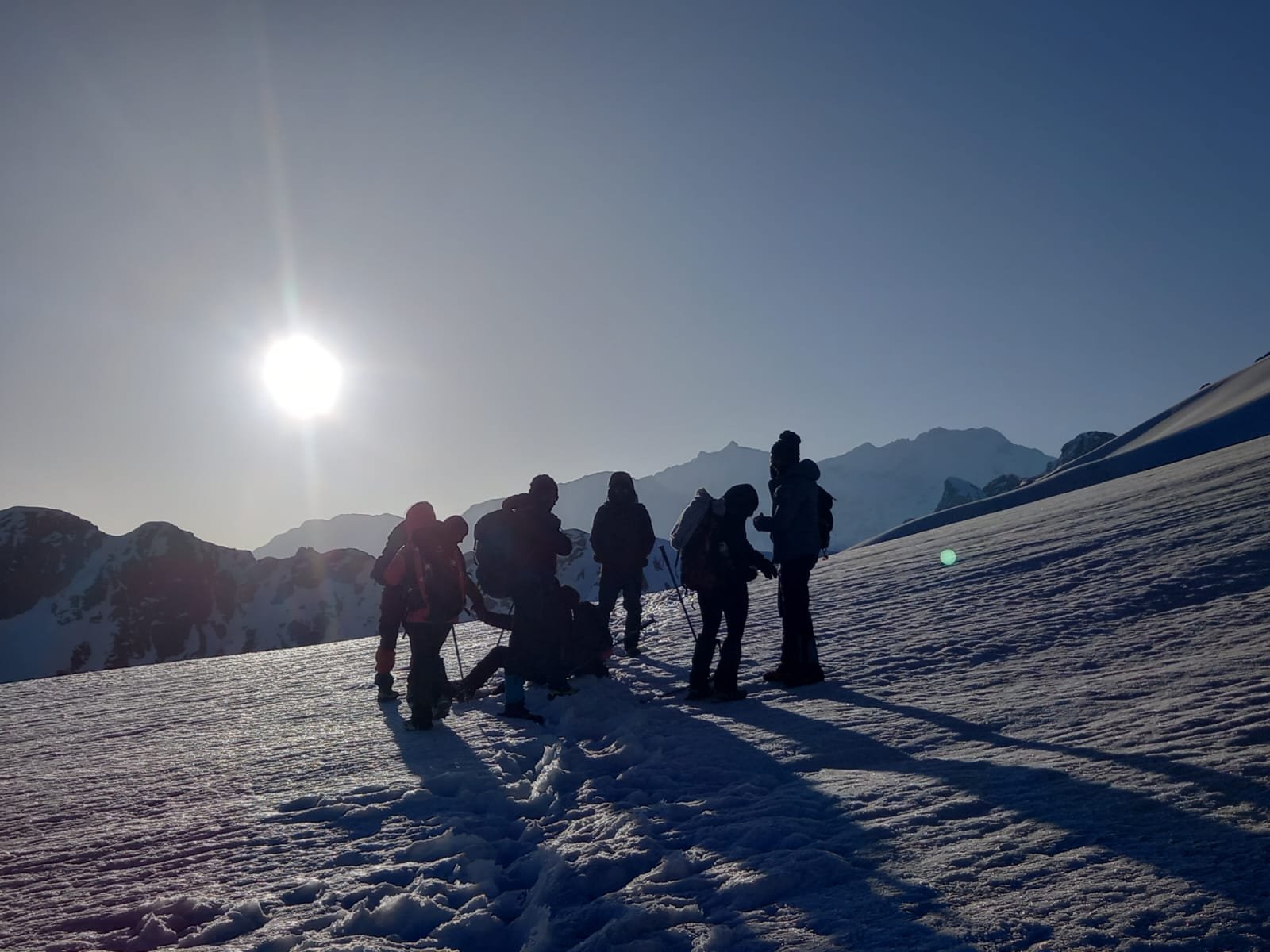
Key Points of Sar Pass Trek
Duration: – 4 Nights 05 days from Kasol to Kasol
Base camp: – Grahan base camp
Summer Temperature: – 13°C to 17°C and Night: 0°C to 7°C
Sar Pass Altitude – 4200 m
Best Time: – April, May, June, 2024
Trek Level: – Moderate
Trek distance: – On foot 37 km – By taxi km by Taxi
Group Size: – A maximum 25 people
The altitude covered in the Sar Pass trek
Grahan base Camp- 2350 m
Mini Thatch- 3400 m
Naguru-3800 m
Sar Pass- 4200 m
Biskeri Thatch- 3350 m
Barsheini- 2400 m
Short Itinerary of Sar Pass Trek
Day 1 : Pickup from Kasol Bus stand Same day Trek Kasol camp to Grahan village (07 km) (5/6 Hours) uphill (2350m)- overnight stay at Grahan village
Day 2 : Trek from Grahan to Mini Thach (07 km) ( 4/5 hours) (3400 m) overnight stay at Camp
Day 3 : Trek from Mini Thatch to Naguru (05 km) (4/5 hours) (3800 m) overnight stay at Camp
Day 4 : Trek from Naguru – Sar Pass- 13875 ft) to Biskeri Thatch (12 km) (6/8hours) (6 hours) (3350 m) overnight stay at Camp
Day 5 : Trek from Biskeri Thatch to Pulga (06 km) (4/5 hours) (2400 m) same day drive to Kasol 22 km by taxi
Best Time to Visit Sar Pass Trek
The best time to undertake the Sar Pass Trek is during the summer and post-monsoon seasons, which typically fall between May and October. Here’s a breakdown of the different seasons and their characteristics:
- Summer Season (May to June): This is the ideal time for the Sar Pass Trek, as the weather is pleasant with mild temperatures during the day and cool nights. The trails are usually clear of snow, allowing for a relatively easier trek. The meadows are in full bloom, offering vibrant landscapes and picturesque views.
- Monsoon Season (July to August): The monsoon season brings heavy rainfall to the region, making the trekking trails slippery and risky. It is not recommended to undertake the Sar Pass Trek during this time, as the chances of landslides and flash floods increase.
- Post-Monsoon Season (September to October): After the monsoon season, the weather starts to clear up, and the landscapes become lush green again. This period is considered the shoulder season for the Sar Pass Trek. The crowds are thinner compared to the summer season, and the weather remains favorable for trekking. However, towards October, temperatures start to drop, especially during the nights, so you should be prepared for colder conditions.
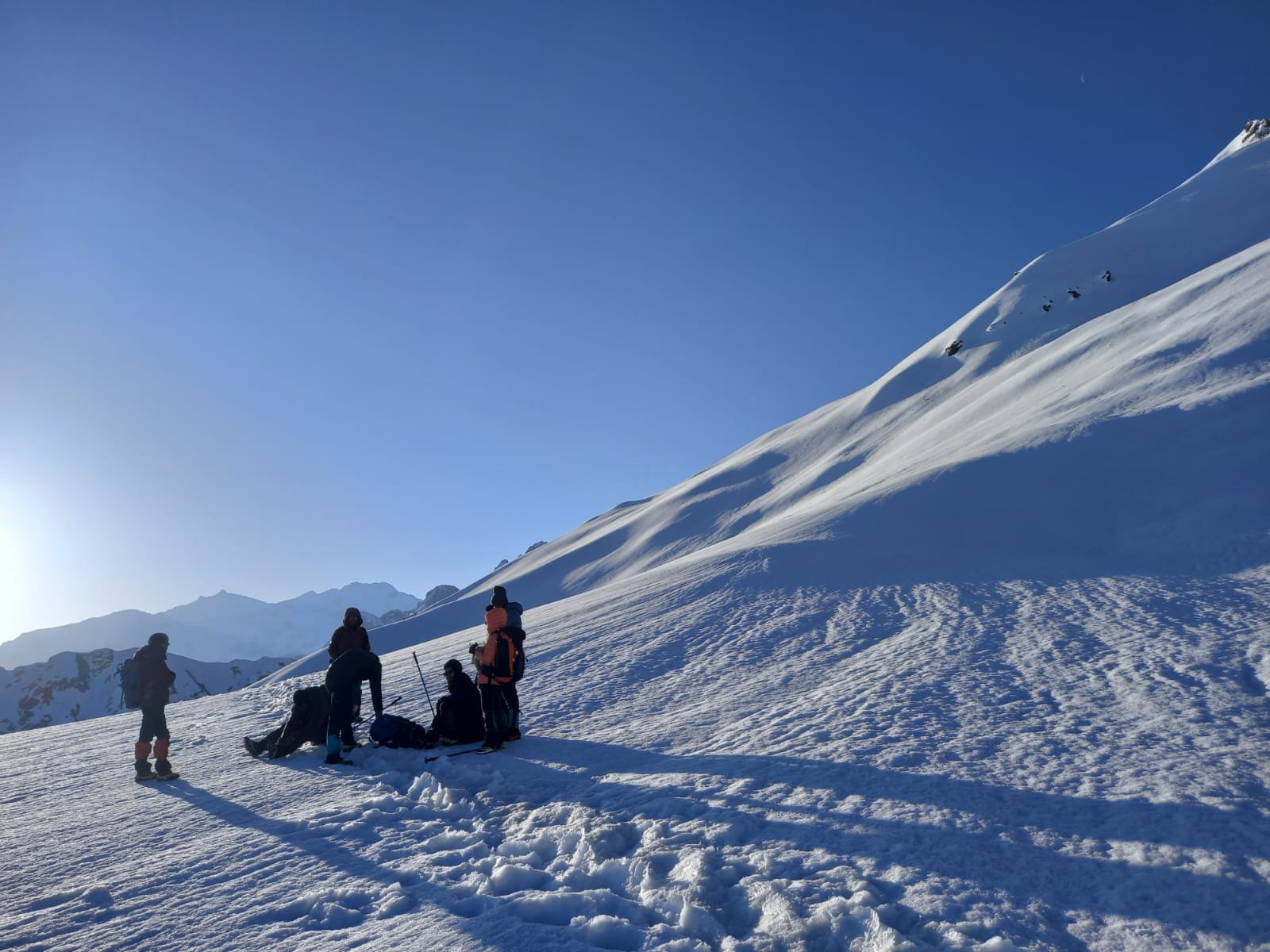
1) Detailed Itinerary
2)Is it safe
3)Difficulty level
4)Weather conditions
5)Things to carry
6)Connectivity and transaction
7)includes and excludes
8)How to reach
Is it safe Trek?
Set amidst the high altitude ranges, concerns regarding Sar Pass trek safety are indeed very valid questions. We have all the possible probabilities calculated if anything goes off the schedule.
At every stop point of the journey, trekkers will be going through a properly guided session informing them about the upcoming terrains. All our professionals strive their best to provide trekkers with the best experience possible.
Difficulty level
The Sar Pass Trek is considered a moderate trek, suitable for trekkers with some prior trekking experience. Here are some factors that contribute to its level of Moderate or difficulty:
- Altitude: The trek reaches an altitude of approximately 13,800 feet (4,200 meters) at Sar Pass. As you ascend to higher altitudes, the air becomes thinner, and the oxygen levels decrease. This can cause altitude-related challenges such as shortness of breath, fatigue, and altitude sickness. It is essential to acclimatize properly, stay hydrated, and listen to your body’s signals.
- Terrain: The trail consists of various terrains, including steep ascents, narrow ridges, rocky sections, and snow patches, especially in the early summer months. You will encounter steep climbs and descents, requiring good physical fitness, balance, and endurance. The terrain can be challenging and demanding at times, requiring careful footing and cautious navigation.
- Weather Conditions: Weather conditions in the mountains can be unpredictable, even during the best trekking seasons. You may encounter rain, snow, and cold temperatures, especially at higher altitudes. It is important to pack appropriate clothing and gear to withstand changing weather conditions.
- Duration and Distance: The Sar Pass Trek usually takes around 04 nights 05 Days days to complete, covering a distance of approximately 37 kilometers Each day involves trekking for several hours, covering varying distances and altitude gains. It requires a good level of stamina and endurance to sustain the trekking duration and distances.
- Camping and Facilities: The trek involves camping in tents at designated campsites along the route. Basic facilities like toilet tents and a limited water supply are available, but you should be prepared for rustic camping conditions.
Weather conditions
Weather conditions depend on the time of the year trekkers are traveling. Months from May to October experience moderate temperatures during the day with substantially colder nights
What to Pack for Sar pass trek clothes?
When packing for the Sar Pass Trek, it’s important to consider the varying weather conditions and the duration of the trek. Here’s a suggested list of clothing items you should pack:
- Moisture-wicking T-shirts: Lightweight and quick-drying shirts to keep you comfortable during the trek.
- Thermal tops: For colder days or nights at higher altitudes.
- Fleece jacket or lightweight down jacket: Provides warmth during chilly mornings and evenings.
- Insulated trousers: To keep your legs warm in colder temperatures.
- Waterproof and windproof jacket: Protects you from rain, snow, and chilly winds. Look for a jacket with a hood for added protection.
- Waterproof and windproof trousers: To keep your legs dry during wet or snowy conditions.
- Quick-drying and comfortable trekking pants or trousers. It’s recommended to carry at least two pairs.
- Sun hat or cap: Provides shade and protects from the sun’s rays.
- Beanie or warm hat: Keeps your head warm during colder days or at higher altitudes.
- Buff or neck gaiter: Versatile accessory that can be used as a neck warmer, face cover, or headband.
- Lightweight gloves: Protects your hands from cold temperatures and wind. Carry an extra pair in case one gets wet.
- Sturdy trekking boots: Waterproof and ankle-supporting boots with good traction.
- Comfortable trekking socks: Carry multiple pairs of moisture-wicking socks to keep your feet dry and blister-free.
- Rain cover for your backpack: Keeps your gear dry during rainy or snowy conditions.
- Sunglasses: Protects your eyes from harsh sunlight and glare from snow.
- Trekking poles: Provide stability and support, especially during steep ascents and descents.
- Thermal innerwear: Optional but helpful for colder temperatures.
Remember to pack lightweight and moisture-wicking clothing to ensure comfort during the trek. Layering is key to adjust to changing temperatures throughout the day. Additionally, carry a small backpack for daily essentials like water bottles, snacks, sunscreen, and a first aid kit.
It’s important to pack according to the season and weather conditions at the time of your trek. Consider checking with local trekking agencies or experienced trekkers for any specific recommendations based on the current conditions.
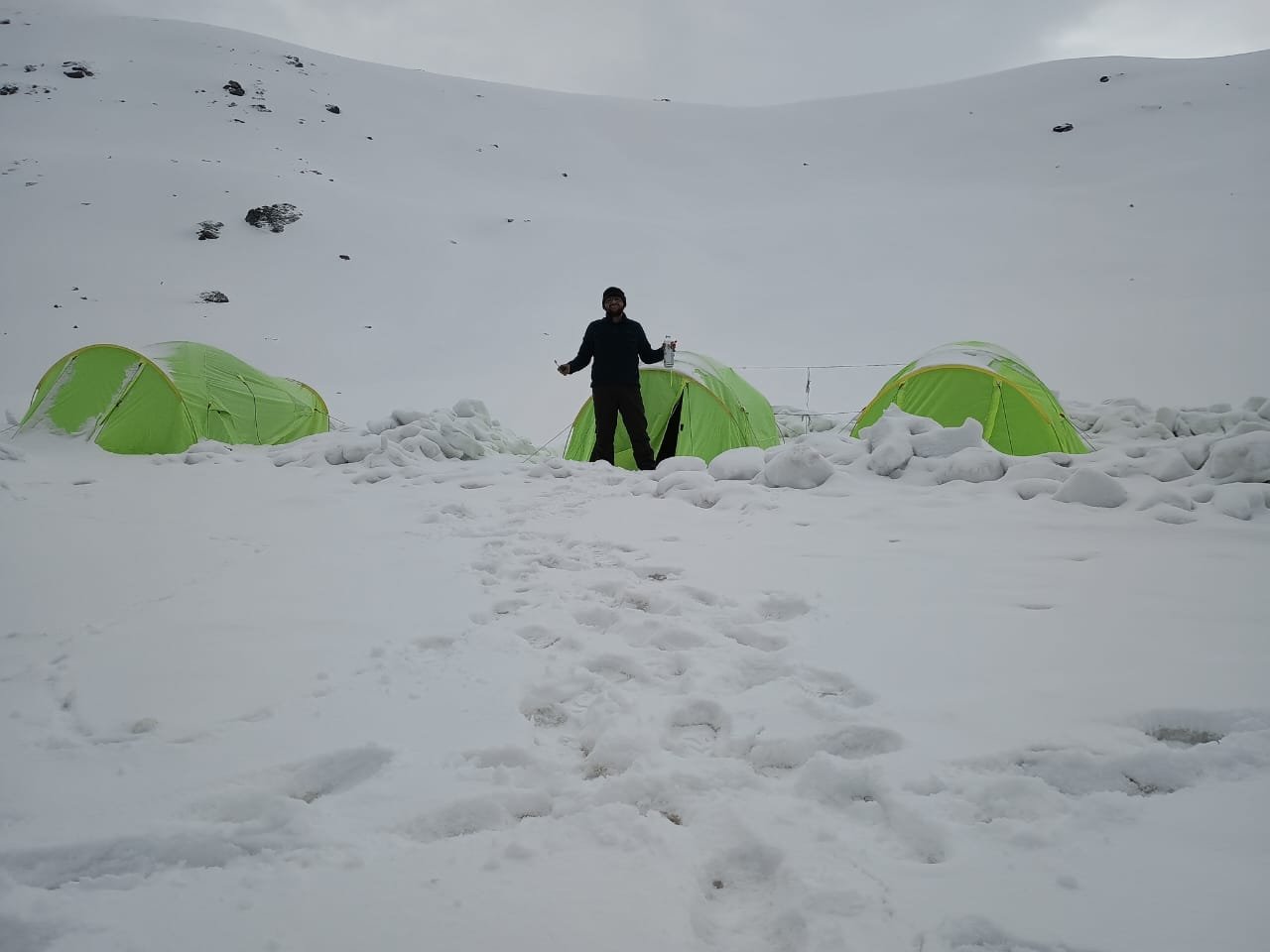
Other trekking Essentials-
Connectivity and Transactions
1) Because connectivity along the route is unpredictable, we urge people to do all of their work ahead of time.
2) Trekkers will be provided with walkie-talkies beforehand in case of emergency
3) Last ATM transactions available will be at Kasol but we recommend travelers to collect cash beforehand or while in Manali as ATM available at other places might not dispense cash at times.
How to Reach Kasol for Sar Pass Trek?
To reach Kasol, the base village for the Sar Pass Trek, you can follow these general directions:
By Air: The nearest airport to Kasol is Bhuntar Airport, located approximately 31 kilometers away. You can take a flight to Bhuntar Airport from major cities like Delhi or Chandigarh. From the airport, you can hire a taxi or take a local bus to Kasol.
By Train: The nearest major railway station to Kasol is Pathankot Railway Station, which is well-connected to major cities in India. From Pathankot, you can take a bus or hire a taxi to reach Kasol. Another option is to take a train to Chandigarh Railway Station and then continue your journey to Kasol by bus or taxi.
By Road: Kasol is well-connected by road and can be reached by bus or taxi from various cities. Here are a few common routes:
- From Delhi: You can take a bus from Delhi to Bhuntar, which is the nearest major town to Kasol. From Bhuntar, you can take a local bus or hire a taxi to reach Kasol, which is approximately 30 kilometers away.
- From Chandigarh: You can take a bus or hire a taxi from Chandigarh to Kasol. The distance between Chandigarh and Kasol is around 275 kilometers.
- From Manali: If you are coming from Manali, you can take a local bus or hire a taxi to Kasol. The distance between Manali and Kasol is approximately 80 kilometers.
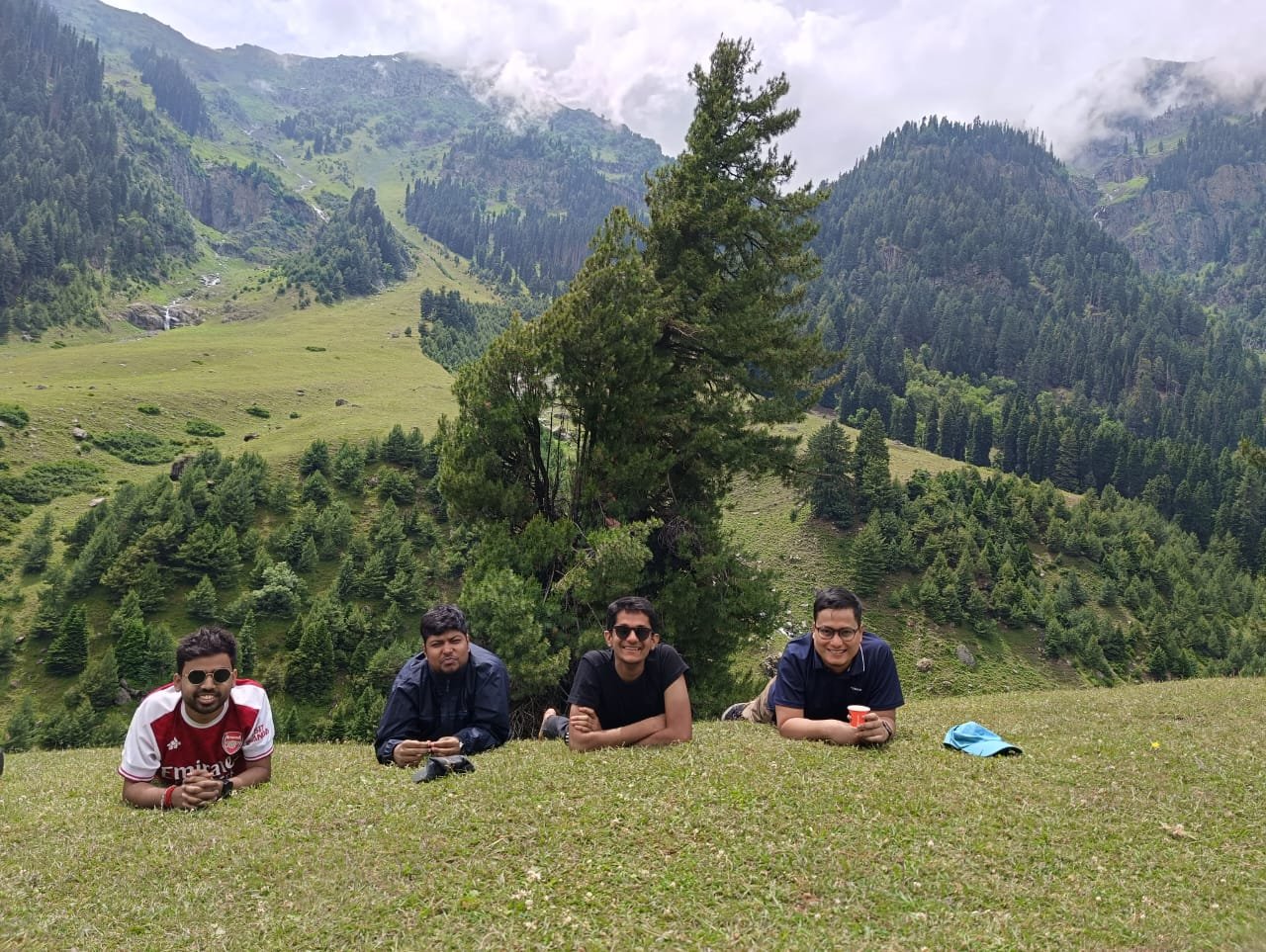
. Some important points to note-
- Please note that we don’t provide timings schedules for transportation before Manali. Subject to various conditions the scheduled timings and availability of particular rides may differ. We recommend trekkers to reach out our teams for any queries. You can drop an email or call us for an initial guided session.
- Our teams will be collecting trekkers at fixed points of airports, railway stations and bus stands.
- It is recommended that unless any delay arrives, trekkers are advised to reach the destinations at least 2 hours prior.
Things Himalayan Hikers recommend
As previously stated, a camera, as well as spare batteries and memory cards, are recommended. We can assure and guarantee that you will be stopping frequently along the trail to observe the grandeur of the trekking experience.
We strongly recommend trekkers to prepare beforehand for the journey ahead. Regular practicing physical fitness and mental endurance will surely assist trekkers in great times.
After the trek, we strongly encourage trekkers to tag us on social media when they post any memories from the trip; this will not only prove invaluable to us with our work but will also serve as a motivational example for all of our experts.
Why you should choose us
We’re here to give you the greatest experience possible through the eyes of highly skilled and qualified specialists who have a passion for adventure sports. We are community members attempting to promote our favorite adventure sports while also supporting local businesses. We, at Himalayan Hikers, dedicate ourselves to providing you with an unforgettable experience.
What do we do for safety in the Sar Pass trek?
First of all, the safety of trekkers is much more for us, if you see in the trek, then there are all the risks, which I do not think about.
Himalayan Hikers worry more about you that no one should ever have any problem in the trek.
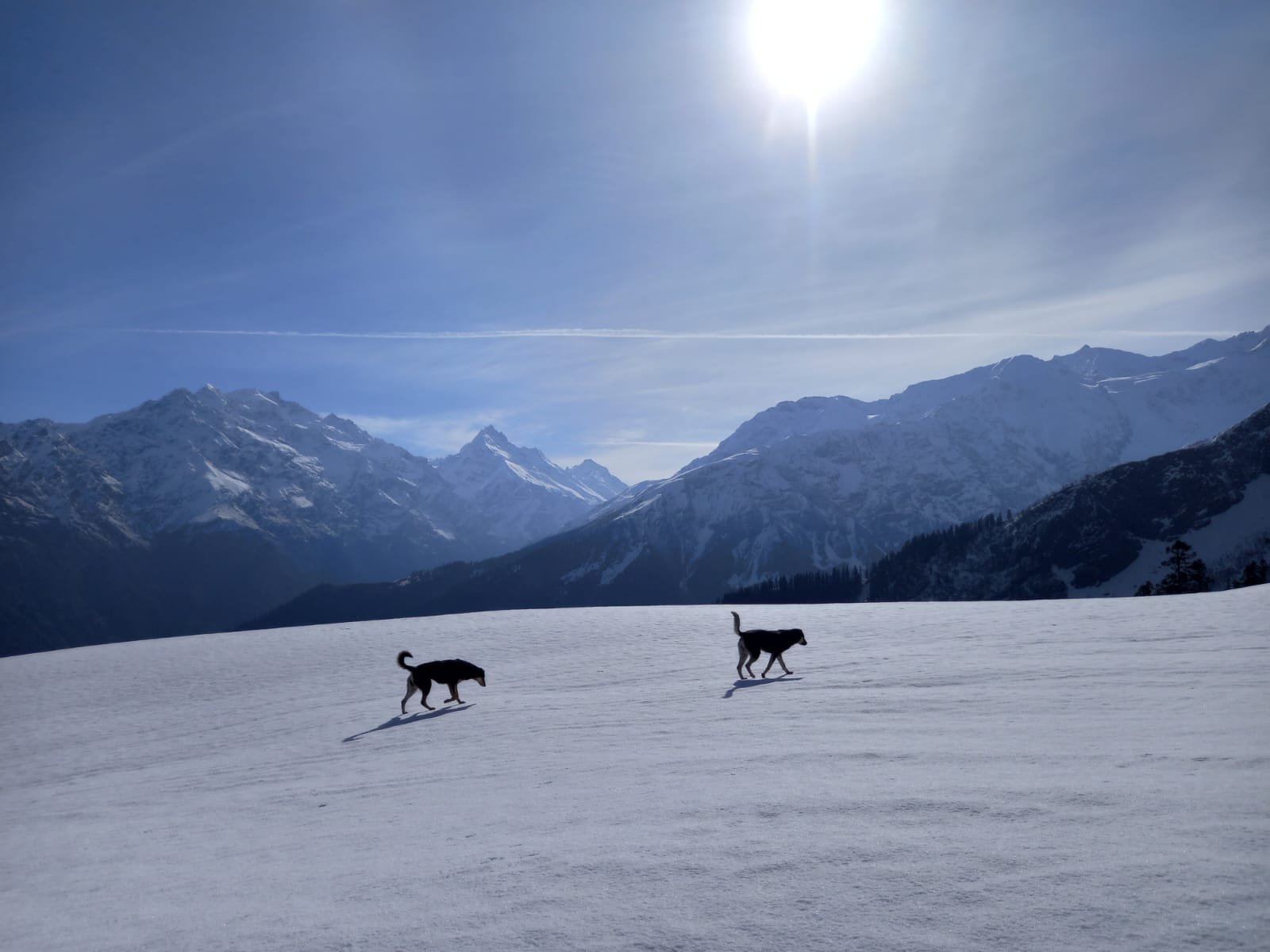
What should we and you keep more safety in the trek
- Whenever you are going for any trek, it is very important that you go completely fit and ready.
- Sar Pass trek is Moderate, if you make your feet and your mind calm and strong, you will find the trek very easy.
- While trekking, keep in mind that you are walking on the right route or not always with your guide.
- Most people look somewhere and where they are walking, this can cause twitching in your legs, which can ruin your entire trek.
- It is important to ask your doctor if you have any medical problems
- I should always keep my medical kit with me, it is very important.
- Himalayan Hikers always keep a medical kit with you, such as oxygen cylinders, medicine to be given in emergency on the trek
- If any trekkers have any more problems, then they are brought back to the base camp by laying them in the stretcher.
- Our Sar pass trek camp is around 6000 ft to 11,000 feet where you can not have any problem of oxygen, this is tree line area
- In case of any medical problem, the help of your guide or well-informed trekkers should be taken
- If there is major health problems in this trek , then Nearest Hospital is in Manali/Bhunter which is about 67 Kms away from Sar pass trek
- Our camps also move forward day by day and our bodies also work with the altitudes that are safe for trekkers
- Along with the trek we keep getting acclimatization
- Himalayan Hikers always take care of their trekkers anyway it is one of our local trek where we live every day
How to get fit for Sar Pass Trek in Himachal Kasol?
Here are some tips to help you get fit for the trek:
- Cardiovascular Fitness: Trekking involves long hours of walking and endurance. Engage in activities that improve your cardiovascular fitness, such as jogging, cycling, swimming, or brisk walking. Start with shorter distances or durations and gradually increase the intensity and duration of your workouts over time.
- Leg Strength and Endurance: Trekking requires strong leg muscles to tackle uphill and downhill sections. Incorporate exercises like squats, lunges, step-ups, and calf raises into your fitness routine. Include both strength training and endurance-building exercises for your legs.
- Core Strength: A strong core is essential for maintaining balance and stability during the trek. Include exercises like planks, Russian twists, mountain climbers, and sit-ups to strengthen your core muscles.
- Stair Climbing: Find a nearby staircase or use a stair-climbing machine at the gym to simulate the uphill and downhill sections of the trek. Regular stair climbing workouts will help build strength and endurance in your legs.
- Backpack Training: As you will be carrying a backpack during the trek, gradually increase the weight of your backpack during your training sessions. Start with a lighter load and gradually add weight to simulate the weight you’ll carry during the trek.
- Flexibility and Stretching: Engage in regular stretching exercises to improve flexibility and prevent muscle stiffness. Focus on stretching your leg muscles, lower back, shoulders, and neck.
- Mental Preparation: Trekking requires mental resilience and determination. Prepare yourself mentally by setting realistic goals, visualizing the trek, and staying positive. Practice mindfulness and relaxation techniques to manage stress and keep a calm mindset during challenging moments.
- Hydration and Nutrition: Stay hydrated throughout your training period and during the trek. Maintain a balanced diet rich in carbohydrates, proteins, and essential nutrients to fuel your body and aid in recovery.
Himalayan Hikers – Provided food During the Sar Pass Trek
– We serve five -05 times meals a day including- Breakfast, Lunch, Eevening Snakes, Soup, Dinner, A variety of delectable and healthy food is provided which includes; Indian, Chinese and other Western meals. They are nutritious and keep you fit and healthy on the trek.(Veg or non-veg food) With our local food and Day Pack, for Summit Day like fresh fruits
Food Menu – Roti + Rice + Salad + Papad +Matter paneer +Daal +mix veg+ daily more vegetable +sweet+ Bread +Omelets + jam + butter +Muesli, Milk+Banana+ Allo parantha +Tea & coffee Cornflakes, Milk +Egg bhurji +Bread, Peanut Butter +Pancake +Plain parantha +Fruits+ Porridge Oats+ +Bread & cheese +Poha +Boiled egg + Gulab Jamun+ Custard+ Jalebi+ Chilla +Honey+ Puri + Chole more
Note: – This is only list Himalayan Hikers Team or Cook provide you more healthy food and more items of per day menu
The type of food provided during a trek can vary depending on factors like the location, duration, and the trekking company or organization you’re with. However, there are some common types of food that are often included in trekking provisions:
- Carbohydrates : Foods high in carbohydrates provide energy for the trek. This includes items like rice, pasta, bread, and potatoes. More
- Proteins : Protein-rich foods help with muscle repair and recovery. Common protein sources include lentils, beans, tofu, meat (if available), eggs, and dairy products.
- Fruits and vegetables : These provide essential vitamins, minerals, and fiber. While fresh produce may not always be available, dried fruits and vegetables or canned options might be included.
- Snacks : Trekking often involves long hours of physical exertion, so snacks are important for quick energy boosts. Snacks like nuts, energy bars, trail mix, and chocolate are common choices.
- Local cuisine: Depending on the region you’re trekking in, you might also get the chance to sample local dishes. This can be a delightful way to experience the culture and flavors of the area.
Day 1: Reach Our Base Camp Kasol 8:30 am to 9:00 am Then trek to Grahan Village
- Starting Point: Kasol Bus Stand Base Camp of H.H
- Destination: Grahan Village
- Distance: Approximately 07 kilometers
- Time Required: Around 4-6 hours, depending on your pace and breaks
- Difficulty Level: Moderate
Trek Details:
- Kasol is well-connected by road, and you can easily reach there by bus or taxi from nearby towns like Bhuntar or Manali. Once you arrive at Kasol Bus Stand, you can start your trek.
- The trail starts from Kasol and leads towards Grahan Village. You’ll need to cross the Parvati River and then start ascending through dense forests.
- The initial part of the trek involves a gradual ascent through the forest, with occasional steep sections.
- The trail is well-marked, but it’s recommended to have a local guide or a map with you.
- As you ascend, you’ll pass through lush greenery, pine forests, and possibly encounter some streams.
- After a few hours of trekking, you’ll reach the beautiful Grahan Village, situated at an altitude of around 7,700 feet above sea level.
- Grahan Village is a quaint Himalayan hamlet, offering stunning views of the surrounding peaks and valleys.
- The trek from Kasol to Grahan Village is considered moderate in difficulty.
- While the trail is well-defined, there are some steep sections, especially during the ascent.
- Proper trekking gear, including sturdy hiking shoes, water, snacks, and a rain jacket (depending on the weather), is recommended.
- It’s also essential to pace yourself and take regular breaks, especially if you’re not used to hiking at higher altitudes.
- Start your trek early in the morning to make the most of daylight hours and avoid trekking in the dark.
- Carry an adequate amount of water and snacks to keep yourself hydrated and energized throughout the trek.
- Respect the local culture and environment. Avoid littering and follow the principles of Leave No Trace.
- Check the weather forecast before starting your trek and be prepared for changes in weather conditions.
Day 2 : Trek from Grahan to Mini Thatch
- Starting Point: Grahan Village
- Destination: Mini Thatch
- Distance: Approximately 7-8 kilometers
- Time Required: Around 4-5 hours, depending on your pace and breaks
- From Grahan Village, head towards the trail leading to Mini Thatch. You’ll find signposts or locals who can guide you in the right direction.
- The trail initially ascends through dense forests, similar to the previous segment from Kasol to Grahan.
- You’ll pass through scenic landscapes, lush greenery, and possibly encounter some streams along the way.
- The trek involves a significant ascent as you make your way towards Mini Thatch.
- The trail may become steeper and more challenging compared to the previous segment. Be prepared for some strenuous sections.
- As you climb higher, you’ll be rewarded with breathtaking views of the surrounding valleys and snow-capped peaks.
- Mini Thatch is a beautiful meadow nestled amidst the mountains, offering a tranquil setting for camping or resting.
- The trek from Grahan to Mini Thatch is considered moderate to difficult, primarily due to the steep ascent.
- You’ll need to have a good level of fitness and stamina to tackle the uphill sections.
- Proper trekking gear, including sturdy hiking shoes, trekking poles (if required), water, snacks, and warm clothing, is essential.
- Take regular breaks to catch your breath and enjoy the scenery along the way.
- Start early in the morning to make the most of daylight hours and avoid trekking in the dark.
- Carry sufficient water and snacks to keep yourself hydrated and energized during the trek.
- Be mindful of your surroundings and follow the trail markers or ask locals for directions if needed.
- Take precautions against altitude sickness, especially if you’re ascending to higher elevations.
- Respect the local environment and leave no trace of your visit.
Trekking from Grahan Village to Mini Thatch offers a challenging yet rewarding experience amidst the natural beauty of the Himalayas. Enjoy the journey and embrace the serenity of the mountai
Day 3 : Trek from Mini Thatch to Naguru
Trekking from Mini Thatch to Nagaru is a segment that takes you further into the scenic landscapes of the Parvati Valley, eventually leading you to the base camp for the Sar Pass trek. Here’s a guide for this part of your journey:
- Starting Point: Mini Thatch
- Destination: Nagaru
- Distance: Approximately 5-6 kilometers
- Time Required: Around 3-4 hours, depending on your pace and breaks
- Difficulty Level: Moderate to Difficult
- Depart from Mini Thatch and follow the trail towards Nagaru. The route may be marked with signs or cairns, but it’s advisable to have a local guide or a map to navigate effectively.
- The initial part of the trek involves ascending further through alpine meadows and possibly rocky terrain.
- You’ll continue to enjoy panoramic views of the surrounding mountains and valleys as you gain altitude.
- The trail gradually becomes steeper as you ascend towards Nagaru.
- You may encounter some challenging sections with rocky paths and uneven terrain.
- It’s essential to pace yourself and take regular breaks, especially considering the altitude gain.
- Keep an eye out for any trail markers or signs to ensure you’re on the right path.
- Along the way, you’ll be treated to stunning views of the Parvati Valley below and the towering peaks surrounding you.
- Nagaru itself is situated at a higher altitude, offering breathtaking vistas of the Himalayan landscape.
- The trek from Mini Thatch to Nagaru is considered moderate to difficult, primarily due to the steep ascent and potentially challenging terrain.
- Altitude gain can also be a factor, so it’s essential to acclimatize properly and be prepared for the effects of high altitude.
- Ensure you have the necessary trekking gear, including sturdy hiking shoes, warm clothing, water, snacks, and a first aid kit.
- Start early in the day to make the most of daylight hours and avoid trekking in the dark, especially considering the terrain’s difficulty.
- Stay hydrated and fuel yourself with snacks to maintain energy levels throughout the trek.
- Keep an eye on weather conditions, as they can change rapidly in mountainous regions.
- Follow Leave No Trace principles and respect the environment and local communities.
Day 4 : Trek from Naguru to SAR Pass to Biskeri Thatch
Trekking from Nagaru to Sar Pass and then descending to Biskeri Thatch is one of the most exhilarating segments of the Sar Pass trek, offering breathtaking views and a sense of accomplishment as you traverse high-altitude landscapes. Here’s a guide for this challenging yet rewarding trek:
- Starting Point: Nagaru
- Destination: Biskeri Thatch via Sar Pass
- Distance: Approximately 12-13 kilometers
- Time Required: Around 8-10 hours, depending on your pace and breaks
- Difficulty Level: Difficult
- Begin your trek from Nagaru, situated at a considerable altitude. Ensure you’re properly acclimatized before embarking on this challenging segment.
- The initial part of the trek involves ascending towards Sar Pass. The trail is likely to be steep and rocky, requiring careful footing and endurance.
- As you ascend towards Sar Pass, the trail may become progressively steeper and more challenging.
- You’ll navigate through rugged terrain, possibly encountering snowfields or icy patches, depending on the season.
- Keep an eye out for trail markers or follow the guidance of your guide to stay on track.
- Sar Pass, situated at an elevation of around 13,800 feet, offers breathtaking views of the surrounding peaks and valleys, making the ascent worth the effort.
- Once you reach Sar Pass, take some time to rest and soak in the stunning vistas before beginning your descent towards Biskeri Thatch.
- The descent from Sar Pass to Biskeri Thatch can be equally challenging, with steep gradients and potentially slippery terrain. Use trekking poles for stability if necessary.
- The trail from Sar Pass descends through alpine meadows and forests, providing a contrast to the rugged terrain of the ascent.
- While the descent may be less physically demanding than the ascent, it requires caution to navigate safely, especially on uneven terrain.
- Biskeri Thatch, nestled amidst the mountains, offers a serene camping spot to rest and rejuvenate after the day’s trek.
- The trek from Nagaru to Sar Pass and then to Biskeri Thatch is considered difficult, primarily due to the steep ascent, high altitude, and potentially challenging terrain.
- Proper acclimatization, physical fitness, and trekking experience are essential prerequisites for this segment.
- Ensure you have the necessary equipment, including sturdy hiking shoes, warm clothing, trekking poles, water, snacks, and a first aid kit.
- Start early in the day to allow ample time for the trek and to avoid trekking in low visibility conditions, especially during the descent.
- Stay hydrated and nourished throughout the trek to maintain energy levels.
- Keep a close watch on weather conditions and be prepared for changes in mountain weather.
- Follow Leave No Trace principles and respect the environment and local culture during your trek.
Day 5: Trek from Biskeri Thatch to Pulga road
Trekking from Biskeri Thatch to Pulga Road offers a scenic route through the picturesque landscapes of the Parvati Valley. Here’s a guide for this segment of your trek:
- Starting Point: Biskeri Thatch
- Destination: Pulga Road
- Distance: Approximately 10 kilometers
- Time Required: Around 5/6 hours, depending on your pace and breaks
- Begin your trek from Biskeri Thatch, situated amidst the mountains and alpine meadows.
- The trail initially descends from Biskeri Thatch, gradually leading you towards lower elevations.
- As you descend, you’ll be treated to breathtaking views of the surrounding valleys, lush forests, and distant peaks.
- The trail winds its way through forests, meadows, and possibly small streams, offering a varied and picturesque landscape.
- Along the route, you may pass through or encounter several small villages inhabited by the locals.
- These villages provide a glimpse into the local way of life and may offer opportunities to interact with the residents.
- While the trail is generally well-defined, it’s advisable to have a map or GPS device to ensure you’re on the right path.
- Signposts or markers may guide you along the way, but it’s always helpful to ask locals for directions if needed.
- The trek from Biskeri Thatch to Pulga Road is considered moderate in difficulty.
- While the overall terrain may involve some descents and ascents, it’s generally less challenging compared to higher altitude treks.
- However, be prepared for uneven terrain, rocky sections, and possibly some steep gradients, particularly as you descend towards Pulga Road.
- Start your trek early in the day to make the most of daylight hours and avoid trekking in the dark.
- Carry sufficient water, snacks, and any necessary supplies for the trek.
- Wear sturdy hiking shoes and comfortable clothing suitable for trekking.
- Respect the environment and local communities along the way, and adhere to Leave No Trace principles.
- Check the weather forecast before setting out and be prepared for changes in weather conditions.
- The route from Pulga to Kasol involves driving back along the road you trekked on or taking any alternate routes available. The primary road network connects these two destinations.
- The distance between Pulga and Kasol by road is approximately 15-20 kilometers, depending on the specific route you take.
- The road conditions can vary, but in general, the roads in this region are narrow and winding, often with steep inclines and declines.
- Some sections of the road may be rough or unpaved, especially in more remote areas.
- The driving time from Pulga to Kasol typically ranges from 30 minutes to an hour, depending on traffic, road conditions, and the specific route taken.
- The drive from Pulga to Kasol offers stunning views of the surrounding mountains, valleys, and forests. Be sure to take some breaks along the way to admire the scenery and take photographs.
Mandatory Documents
Please carry the documents given below.
Original and photocopy of government photo identity card- (Aadhar Card, Driving License, Voters ID, etc, Passport and Visa important to foreigners Medical Certificate (First part should be filled by the Doctor and Second part by the Trekker) Declaration Certificates
Note: – Many trekkers commit the same mistake of carrying unnecessary items on a trek which only makes the backpack heavy. It is important to know the right items to carry. It differs from season to season if you are trekking in summers then carry less layers of warm clothing and if you are trekking in winters carry enough layers to protect yourself against chilly cold.
Necessary Items for trekkers

Backpack (50 to 60 liters) A strongly built backpack with good support is compulsory for a trek. (Rain cover is important)
Sturdy Trekking Shoes The shoes should be strong enough with good support. The people ask if sports shoes would be comfortable but it is good to bring the right trekking shoes.
The Clothes You Should Bring On a Trek Avoid keeping extra clothes because it only makes you backpack heavy.
Trek Pants – The jeans are never suitable for a trek so you need at least 2-3 trek pants for treks carry more for longer treks.
Jacket – Jackets are very important to carry on a trek it protects you against the chilly weather. So carry 2 jackets on a week long trek.
Layers of warm Clothing Carry warm woolen layers or fleece. Carry more layers during winter season (at least 2 to 3) and less during summer.
Thermals – The Temperature decreases at night so you might be need thermals for Night.
T- Shirts – Bring those t shirts which dry fast.
Poncho –They are needed if you are trekking on a Rainy day to keep you dry.
Hiking Pole
Water Bottle 2
Cap or Balaclava
Woolen and Waterproof Gloves
Socks (Woolen and Regular)
Torch head light
Personal Toiletry Items – (toothpaste, toothbrush, toilet paper, sanitizer etc.)
Carry Personal Medical Kit
Personal Medical Kit (Carry minimum 5 tablets and maximum 10)
Medicine for Altitude Sickness
Medicine for acidity and discomfort.
Fever and Headache Medicines
Pain Reliever
Motion Sickness Medicine
Medicine for Allergies
Medicine for Diarrhoea
Sprains Cream or Spray
Antiseptic Cream
Stretchable/Elastic bandage
Note:- Please take all medicines only when prescribed by the doctor. In case you face any problem during your trek, discuss and take advice from the Professional guide.
It is important to have some guidelines in place in case something unexpected happens. Here are some general guidelines that may be helpful:
- Have a first-aid kit: Make sure to carry a well-equipped first-aid kit that can be used to treat minor injuries and ailments.
- Follow safety protocols: It is important to follow all safety protocols and guidelines related to the trek. This includes staying on designated trails, avoiding risky or dangerous areas, and staying with your group.
- Have a communication plan: Make sure to have a communication plan in place in case of emergencies. This may include carrying a mobile phone or a satellite phone, or using a walkie-talkie to stay in touch with other members of your group.
- Know the local emergency services: Be aware of the local emergency services available in the area where you will be trekking. This includes knowing the location of the nearest hospital, police station, or rescue service.
- Carry proper gear and equipment: Make sure to carry appropriate gear and equipment for the trek, including proper footwear, warm clothing, and rain gear. This will help you stay comfortable and safe during the trek.
- Follow Leave No Trace principles: Follow Leave No Trace principles and leave the trekking area as you found it. This includes packing out all trash and waste, avoiding damaging vegetation, and respecting wildlife.
- Stay calm and collected: In case something unexpected happens, try to stay calm and collected. Assess the situation and take appropriate action to stay safe and help others in your group.
It’s also a good idea to consult with a local trekking agency or experienced guide before embarking on a trek, as they can provide additional guidance and support to ensure a safe and enjoyable experience.
Sar Pass Trek FAQ
1. What is the Sar Pass Trek? The Sar Pass Trek is a popular high-altitude trek located in the Parvati Valley of Himachal Pradesh, India. It offers a mix of beautiful landscapes including forests, meadows, quaint villages, and snow-covered mountains, culminating in the crossing of the Sar Pass.
2. Where is Sar Pass located? Sar Pass is located in the Parvati Valley of Kullu district in Himachal Pradesh, India. The trek starts from the village of Kasol.
3. How do I reach the starting point of the trek? The trek starts from Kasol. Here’s how you can reach Kasol:
- By Air : The nearest airport is Bhuntar Airport near Kullu, about 31 km from Kasol. From Bhuntar, you can hire a taxi or take a local bus to Kasol.
- By Train : The nearest railway station is Joginder Nagar Railway Station, about 144 km from Kasol. Alternatively, you can take a train to Chandigarh or Pathankot and then a bus or taxi to Kasol.
- By Road : Kasol is well-connected by road. You can take a bus or taxi from Delhi, Chandigarh, or Manali. Regular buses run from Delhi and Chandigarh to Bhuntar, from where you can take a local bus or taxi to Kasol.
4. What is the best time to visit Sar Pass? The best time to trek to Sar Pass is during the summer months of May to June and post-monsoon from September to October. During these periods, the weather is pleasant, and the trails are accessible.
5. What is the duration of the trek? The Sar Pass trek typically takes 5-7 days, including travel time to and from Kasol.
6. What is the difficulty level of the trek? The trek is considered moderate to difficult. It involves long walking days, steep ascents, and a challenging snow-covered pass crossing. It is suitable for trekkers with good physical fitness and some prior trekking experience.
7. What is the altitude of the Sar Pass? The highest point of the trek is Sar Pass, which is at an altitude of approximately 4,220 meters (13,845 feet).
8. What should I pack for the trek? Here’s a list of essential items to pack:
- Warm clothing (layers, thermal wear, down jacket)
- Waterproof jacket and pants
- Trekking shoes with good grip
- Trekking poles
- Backpack (40-60 liters)
- Sleeping bag (if not provided by the trekking company)
- Personal medical kit
- Water bottles and purification tablets
- Snacks and energy bars
- Raincoat/poncho
- Sunscreen, sunglasses, hat
- Flashlight/headlamp with extra batteries
- Toiletries and personal hygiene items
9. Do I need a permit for the trek? No special permits are required for the Sar Pass trek, but it is advisable to carry a valid ID and inform the local authorities about your trekking plans.
10. What kind of accommodation is available during the trek? Accommodation during the trek typically includes camping in tents at designated campsites. The facilities are basic but comfortable.
11. Are there any risks or challenges on the trek? The trek involves challenges such as:
- Steep and slippery trails, especially in snow
- Changing weather conditions
- Physical strain from long trekking days
- Altitude-related issues It’s essential to acclimatize properly, stay hydrated, and follow the guidance of your trek leader.
12. Is it safe to trek alone? While it is possible to trek alone, it is highly recommended to join a group or hire a local guide for safety, navigation, and a richer experience.
13. Can I do the trek if I have no prior trekking experience? The trek is moderately challenging and best suited for those with some prior trekking experience. Beginners should ensure they have a good level of physical fitness and perhaps undertake some shorter treks beforehand to build endurance.
14. What kind of food is provided during the trek? Most trekking packages include vegetarian meals, which are nutritious and catered to trekking needs. The food usually includes local cuisine, rice, chapati, vegetables, dal, and snacks.
15. What are some key highlights of the trek?
- Crossing the snow-covered Sar Pass
- Scenic views of Himalayan peaks and valleys
- Trekking through dense pine and oak forests
- Beautiful meadows and blooming rhododendrons
- Campsites at locations like Grahan, Min Thach, and Nagaru
- Panoramic views from the top of Sar Pass
16. Are there any cultural or historical aspects of the trek? The trek passes through remote villages inhabited by the Himachali people, offering a glimpse into their traditional lifestyle and culture.
17. What kind of fitness is required for the trek? A good level of fitness is required for the Sar Pass trek. Regular cardiovascular exercise, such as jogging, swimming, or cycling, and leg strengthening exercises can help prepare for the trek.
18. What should I be aware of regarding altitude sickness? Altitude sickness can affect anyone above 2,500 meters. To minimize the risk:
- Acclimatize properly
- Stay hydrated
- Avoid alcohol and smoking
- Ascend slowly and give your body time to adjust
This FAQ should provide a thorough overview for anyone considering the Sar Pass trek. If you have more specific questions, feel free to ask!
Are you Looking for Trekking Equipment on Rent?
If any trekker needs trekking equipment on Rent then Himalayan Hikers has the best trekking equipment available on rent.
There are many people behind this who are in great need of it, it is better to hire it at affordable price without spending much money for just a few days.
Rent Costs per Day
1. Hiking shoes Per day Rs. 100/-
2. Hiking Pant Per Day Rs. 100/-
3. Down Jacket Per Day Rs. 100/-
4. Hiking Pole Per Day Rs. 50/-
5. Headlight Per Day Rs. 50/-
6. Trekking Bag 50 to 60 litter Per Day Rs. 50/-
7. Gloves Per Day Rs. 50/-
Trek Equipment You can book directly at the Base Camp of your trek.
01 June to 05 June 2024 (full)
02 June to 06 June 2024 (full)
03 June to 07 June 2024 (full)
04 June to 08 June 2024 (full)
05 June to 09 June 2024 (full)
06 June to 10 June 2024 (full)
07 June to 11 June 2024 (Open)
08 June to 12 June 2024 (Open)
09 June to 13 June 2024 (Open)
10 June to 14 June 2024 (Open)
What is Included In This Trek?
Transport Facility Kasol To Kasol
Forest Permit and entrance fee
Accommodation in tents on twin/three share basis
All meals: breakfast, packed lunch, tea, coffee, snacks, soup, and dinner
High-quality Dome tents
Sleeping bags
Separate Toilet tents – Ladies and Gents
Dining Tent
Dining Table
Kitchen team
Radio Walkie-Talkie for Communication
Good Experience Trek Leader guide and Technical guide
Medical Kit
Oxygen Cylinders
Crampons and Gaiters
What is Not Include In This Trek?
Personal Insurance
Medical Certificate
Personal toiletry Items and Personal Medicine kit
On the first day, En Route to base camp Breakfast was Not Included
Last Day En Route Lunch and Dinner are not Included
Porter – if you need porters for your uploading bag – The cost per bag per day is Rs. 800.00 paid to directly our manager at Kasol
18 reviews for Sar Pass Trek
Archit Soni – June 12, 2024
it’s food was good in comparison to some other trekking companies. Our guides Star and Rohit was friendly as well.
Ankur P Rathi – June 6, 2024
First time trekking the Himalayas. I had gone for SarPass trek with Himalayan Hikers. Our tour guides Sonu Rawat and Jogi Sir were simply awesome. They explained us smallest of the things in great details, gave us tricks and tips for hiking. Took care of each one of us as a family and made sure we returned safely back. At some extremely difficult parts of trek they literally held our hands and made sure we completed the trek. I highly recommend SarPass trek with HH because of our trek leader Sonu Sir. The food was great everyday. We were served heavy breakfast, lunch was to-go in lunch boxes, evening snacks (including tea), soup and. dinner were provided at campsites. Overall SarPass Trek with HH was a memorable trip to remember.
Ankur P Rathi – June 4, 2024
I went for Sar Pass trek with HH and it was simply amazing. Our Tour Leader Mr Sonu Rawat and Team Guide Mr Joginder were really great. This was my first trek and they both guided us really well with the smallest of details. At some of the toughest summits they literally held our hands and walked us through making sure we were safe during the Trek. The food at all the camp sites was amazing and timely provided. The kitchen staff was always ready to help. I would highly recommend HH because of there amazing team.
Aliakbar sujalpurwala – June 4, 2024
I recently completed the Sar Pass trek with Himalayan Hikers, and it was an incredible experience. The guides were knowledgeable, friendly, and ensured our safety at every step. The trek’s route was breathtaking, featuring diverse landscapes from lush forests to snow-covered paths. Each campsite offered stunning views and comfortable accommodations, with delicious meals that were a welcome treat. The camaraderie fostered by the team made the adventure even more memorable. I highly recommend Himalayan Hikers for a well-organized and profoundly rewarding Himalayan trek
Divyansh Shah – June 4, 2024
I recently completed the Sar Pass trek with Himalaya Hikers, guided by the amazing Sonu Sir. From start to finish, the trek was incredibly well-organized. Sonu Sir’s expertise and passion for the mountains made the journey exceptional.
Each day brought stunning landscapes, from dense forests to snow-covered passes. Reaching the Sar Pass summit was a triumphant moment, thanks to Sonu Sir’s encouragement and leadership.
The campsites were well-chosen, the food was delicious, and the overall logistics were top-notch. I highly recommend the Sar Pass trek with Sonu Sir and Himalaya Hikers for an unforgettable adventure. Thank you, Sonu Sir, for an amazing experience!
Kabeer – June 2, 2024
Great execution, Jogi bhai best
Abhishek Yede – June 2, 2024
one of the best organisation for such type of hiking in kasol. Provide good food during Trek also have proper equipment for Ice trecking and mountain trecking.
SNEHENDU MONDAL – June 2, 2024
The Sar Pass trek with Himalayan Hikers was a great experience.@ sonu Ji and @yogi Ji,and @starboy(hritwik rosan) our guides, ensured safety and support throughout the journey. The trek offered breathtaking views of the Himalayas, fostering a sense of connection with nature. As a trekker, I felt encouraged, with the guides providing a supportive environment. All the facilities were good. The camaraderie among fellow trekkers added to the enriching experience. Overall, the Sar Pass trek with Himalayan Hikers was a memorable adventure.
Siddharth Babel – June 1, 2024
A very good trek and a really good experience. The guides were the best , very helpful, staff was also good, Food was great as well And the veiw was outstanding as well. A must experience as this really pushed myself to my limits and helped me grow as a person. Great trek indeed!
Surya Pratap Singh – May 31, 2024
The Sar Pass Trek was a breathtaking adventure and was my first high altitude experience. The trek leaders Sonu, Jogi and Starboy were exceptional, providing not just guidance but also invaluable support and encouragement throughout the journey. Their knowledge of the terrain and ability to handle unexpected situations made the trek feel safe and well-organized. Highly recommended.
Ashish Gaharwar – May 31, 2024
Trek was superb and serene. Sonu, Jogi and Starboy were highly experienced and skilled for the Trek. Recommended.
Rushikesh Gume – May 15, 2024
A must visit trek.. The food was great, guides very amazing, overall great experience!!
Abhijit Gupta – April 18, 2024
We are 10 friends group successfully completed sar pass trek 12 april to 16 april -2024 Great —experienced, with team Himalayan Hikers , food, our guide, camping all best
Mayuri Deshpande – April 18, 2024
The Trek experience was thrilling and this is a difficult Trek for beginners in the month of April. Wait for the snow to get cleared by May or the beginners can also avoid this Trek. About Himalayan Hikers, the team was very supportive and made our Trek memorable.
Aditya Madan – April 15, 2024
Sar Paas was my second trek with Himalyan Hikers. These 5 days were filled with amazing experiences and unreal scenic beauty. I was literally in the lap of nature. My guide Shiva was super helpful throughout the trek which had snowfall and rainfall almost all days. It was really an awesome experience which enriched my perspective on life. Thanks HH team and Shiva Bhai.
Sanjit kumar Singh – April 15, 2024
Himalayan Hikers best team made our Sar Pass Trek memorable ! thanks kuldeep sir —our guide cooking team, all camp to good all experienced, humble, . Highly recommend Team Himalayan Hikers !” our next trek Kashmir great lakes paka with your same team
Poulomi Saha – April 15, 2024
The Sar Pass trek with Himalayan Hikers was a great experience. Shiva Ji and Sonu Ji, our guides, ensured safety and support throughout the journey. The trek offered breathtaking views of the Himalayas, fostering a sense of connection with nature. As a woman trekker, I felt encouraged, with the guides providing a supportive environment. All the facilities were good. The camaraderie among fellow trekkers added to the enriching experience. Overall, the Sar Pass trek with Himalayan Hikers was a memorable adventure.
Kuldeep sharma – April 15, 2024
Himalayan Hikers made our Sar Pass Trek unforgettable! Shiva ji and Sonu Ji were exceptional guides—experienced, humble, and generous. Their fun-loving nature added joy to every step. Highly recommend Himalayan Hikers for an adventure of a lifetime!”
Your email address will not be published. Required fields are marked *
Name *
Email *
Save my name, email, and website in this browser for the next time I comment.
Related Tours
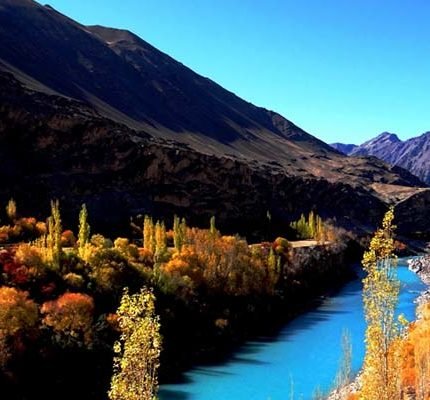
Sham Valley Trek
The Sham Valley Trek has got one more name – “The Baby trek of Ladakh”.
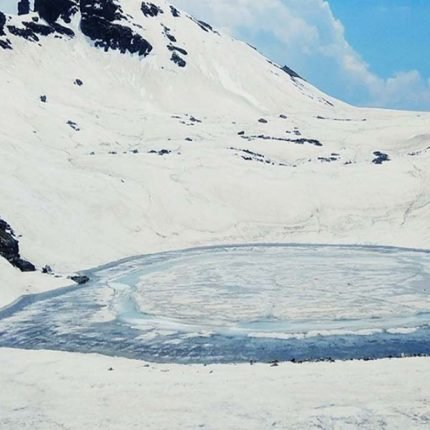
Bhrigu Lake Trek
ONE OF THE MOST BEAUTIFUL GRASSLANDS OF INDIA
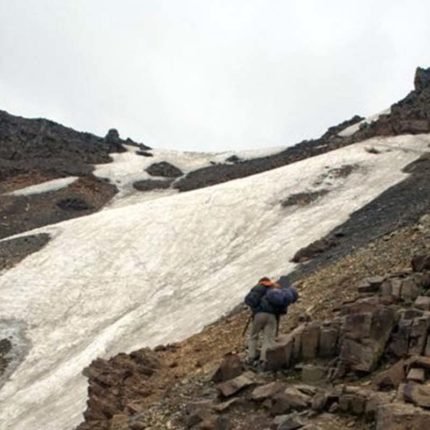
Darati Pass Trek
Darati Pass Trek – The Connecting Pass in Pir Panjal Range.
Price: ₹ 6,500.00
Book the tour
Send a quick enquiry.
- Overview Itinerary Dates Include/Exclude
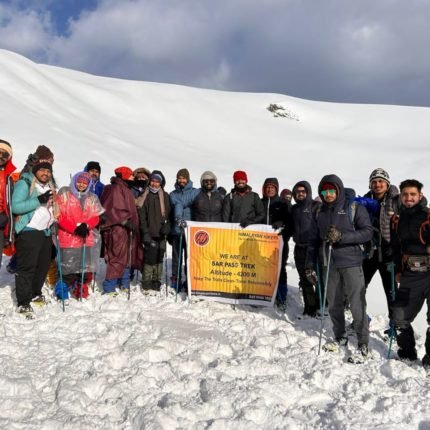

Sar Pass Trek, Kasol
Trip highlights.
Experience a beginner-friendly trail to Sar Pass that passes through forests, meadows, quaint villages, and snow-covered mountains.
Trek up to a view that stretches as far as the eye can see with snow-capped giants like Deo Tibba, Indraasthaan, and the Pir Panjal range.
Get a magical camping experience that might allow you to witness the Milky Way Galaxy in all its glory, a sight often enveloped by city lights.
Get a sense of accomplishment standing at the top, where the world seems to spread out before you at a 4,200-meter high pass.

Know Before You Go
- Climatic conditions in the high altitudes vary from the plains; take adequate time to get acclimatized to high altitudes.
- The management reserves all the right to modify the trek during any emergencies or natural calamities.
- The trek takes place through an eco-friendly zone; do not encourage littering the local sites or campsites. Travellers littering may be fined.
- Water is very precious, so conservation is appreciated.
- Avoid using plastic bags and maintain the ecological balance of the destinations.
- The exact location will be shared with you post-booking.
- Neat and clean vehicle for the journey with experienced driver especially for hilly terrains available.
- Carry dry snacks/food from home (you will save a lot of money). Carry water bottles with you, so that you can refill.
- Avoid using earphones during the trek; this might hinder your audibility.
- In case, the trek needs to be cancelled, the authorities should be informed beforehand.
- All the activities depend upon the weather.
- Mobile & laptop charging points may/may not be available on campsites at a common point.
- Keep your luggage minimum; the more you carry, the more you hassle.
- Pay heed to the trek leader and guide in order to enjoy a safe and sound trek.
- Professional Treak Leaders are available to ensure high safety and more information and personal attention which are necessary to appreciate a trek.
- Camping is very basic in nature. One must not expect luxuries. Electricity will not be available at any campsite.
- It is recommended to carry enough warm clothes and the right kind of shoes for the Sar Pass trekking.
- Any personal expenses, items of personal nature, meals not mentioned, etc. will not be in part of the Sar Pass trek package.
- Itineraries are based on information available at the time of planning and are subject to change. "Thrillophilia'' reserves the right to change expedition dates, people or itineraries as conditions warrant If a trip must be delayed or the itinerary changed due to bad weather, road conditions, transportation delays, government intervention, airline schedules, sickness, or other contingency for which Thrilllophilia or its agents cannot make provision, the cost of delays and/or other changes are the responsibility of the participant. Thrillophilia reserves the right to decline, or accept, any individual as a trip member for any reason whatsoever.
- Liability for change in itinerary due to reasons beyond our control like a change in flight and train schedule, cancellation of flights/1trains, political disturbances, natural phenomenon, roadblocks, etc. will not be accommodated in the package cost. No bill will be reimbursed for any missed service/facility.
- During a trip, in case the roads are blocked due to landslides or a reason that is beyond control, Thrillophilia will rearrange the itinerary for the travellers real-time, however, the cost of alternative accommodation will be borne by the customer as the hotels pre-booked execute their cancellation policies and are nonrefundable.
- Because of any reason natural or personal, if the Trek or a particular activity is not completed, no refund will be processed.
- The difference in the cost shall be borne by the client in case of any amendment in the package due to change in the number of guests, hotel change, itinerary change, etc.
- If in case any traveller wants to or decides to leave the trip in the middle, all the expenses from that point onwards will be borne by the traveller. Neither the operator nor Thrillophilia will be held responsible for such decisions or for any refund.
- The refund or compensation is also not issued if for any reason you have to come down from the trek. The trek leader may send you down from the trek, owing to reasons like lack of fitness, AMS, blood pressure, turn-around-time, health issues, or if you are found smoking/ drinking, or breaking the rules of the trek. refund or compensation are issued only when the whole trek is cancelled or called off on behalf of Thrillophilia.
- At Thrillophilia, we almost never call off or cancel our treks. But in the rare event we might have to call off or cancel a trek due to any unforeseen natural catastrophes like continuous rain or snow, thunderstorms, snowstorms, landslides, floods, earthquakes, or any other natural calamity or other issues like local riots, curfews, pandemics, lockdowns, government orders, or any such situations that might prevent a safe trekking experience. In such cases, Thrillophilia will issue a Credit note summing up to the same amount as your trek fee that can be redeemed on any of the treks over a period of the next year.
Additional Information
About Sar Pass Trek:
Perched at 13,800 ft. above sea level, Sar Pass offers the magnificence of a beautiful verdant landscape and is a heaven for photographers, artists, and nature lovers. Set against a curtain of majestic Himalayan peaks wrapped in snow, the Sar Pass trek passes through some of the most scenic views ranging from forests to the meadows to the ice blankets.
While trekking across the path from Tila Lotni to Biskeri Ridge, one has to pass by a small, usually frozen lake which means "Sar" in the local language of Himachal. Hence the name, Sar Pass! The trail passes through the thick forest and takes you to a winter wonderland that makes it fascinating.
Sar Pass Trek Quick Facts:
Start Point/End Point: Kasol Base Camp. (It is 2 km away from the Kasol Bus Stand)
Duration: 4N/5D
Maximum altitude: 13,800 ft.
Sar Pass Trek Distance: 48 Kms
Temperature: 22 ° C (Max. During Day Time) to -5 ° C ( Min. During Night Time)
Best Time for Sar Pass Trek: April to Mid July
Sar Pass Trek Package Inclusions:
➔ Accommodation – You will be staying in tents for 4 days of the trek (3 people/tent). Room/Tent is separate for the male and female participants.
➔ Meals – (Breakfast, lunch, snacks, and dinner). We provide simple, nutritious veg/Jain food on all days of the trek.
➔ Camping charges – All trekking permits and forest camping charges are included.
➔ Trekking equipment – High-quality tents and sleeping bags in all the camps. Sleeping bags can withstand temperatures as low as -10 ºC.
➔ Safety equipment – First aid kit, oxygen cylinders, oximeter, etc. will be with guide/trek leader and at the campsite as well to deal with emergencies.
➔ Expert trek Leaders – All our trek leaders are at least qualified in basic/advanced mountaineering and first aid course.
➔ Expert Trek support team – The mountain staff on Sar Pass trekking consists of certified guides, cooks, helpers, and porters.
Available Group Departure Dates:
March: 26,27
April: 1,2,3,8,9,10,15,16,17,22,23,24,29,30
May: 11, 13 , 15, 16, 18, 23, 25, 26, 27, 28, 31
June: 1, 3, 4, 5, 7, 10, 11, 12, 22, 24, 29
July: 3,5,10, 12,17,18,19,24,
Note: Customisation available on request
How To Reach Kasol:
By Air: The nearest airport is Bhuntar Airport which is well connected with all major airports via Delhi and Chandigarh. The distance between Kasol and Bhuntar Airport is 32 km, so from Bhuntar, you can board the government/private bus, or can hire a private tourist cab to reach Kasol.
By Train: The nearest Railway station is Chandigarh which is 310 km away. From here one can easily get a government/private bus to Kasol. Another option is to hire a private cab, but that will be a bit expensive option.
By Road: Reaching Kasol by road is the most convenient option. You can easily get a bus to Bhuntar from all major cities like Chandigarh, Delhi, etc. And from Bhuntar, you can board the government/private bus, or can hire a private tourist cab to reach Kasol.
Related Products
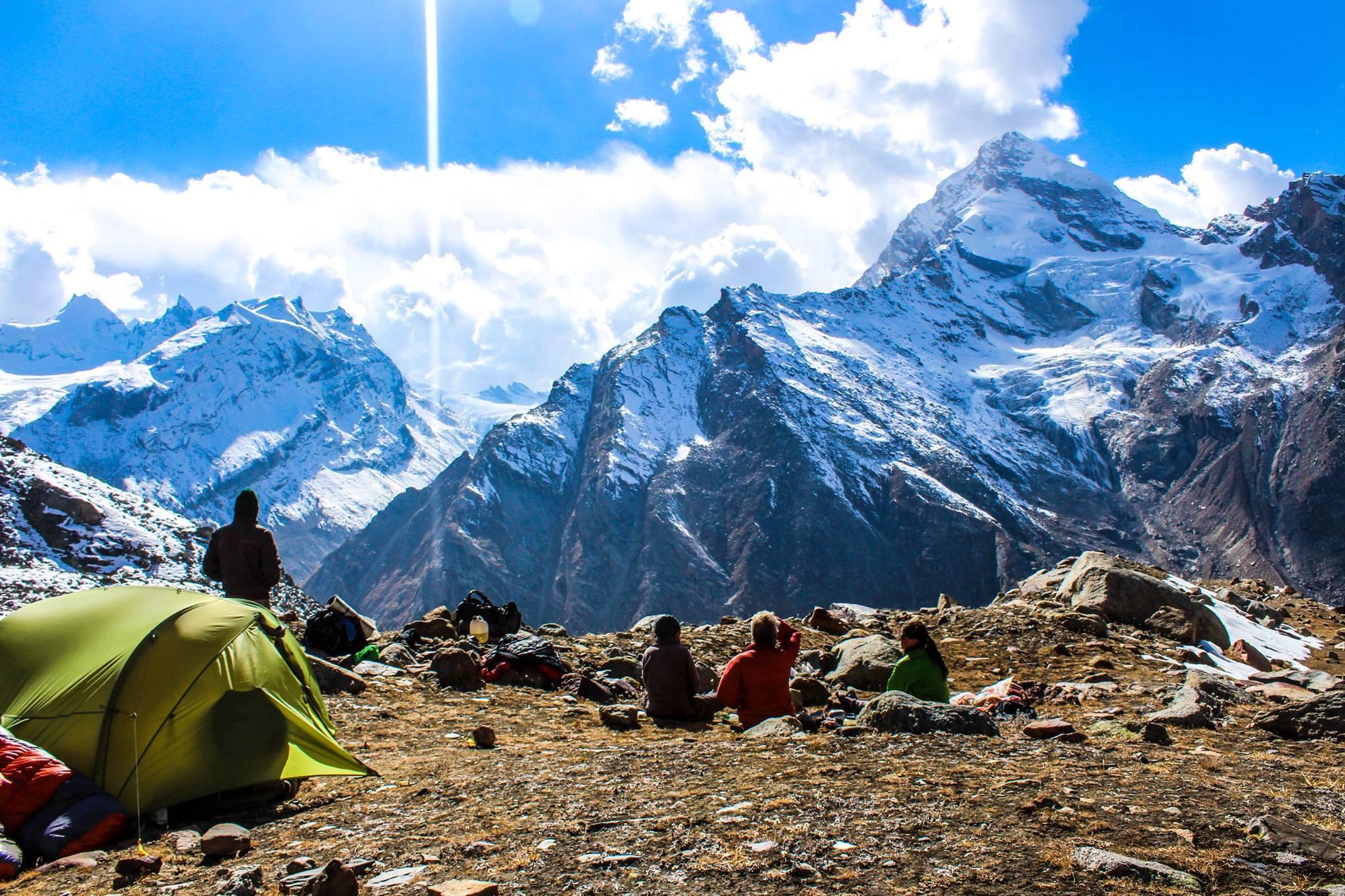
Pin Parvati Trek, Himachal Pradesh

Kasol Camping with Chalal and Kheerganga Trek
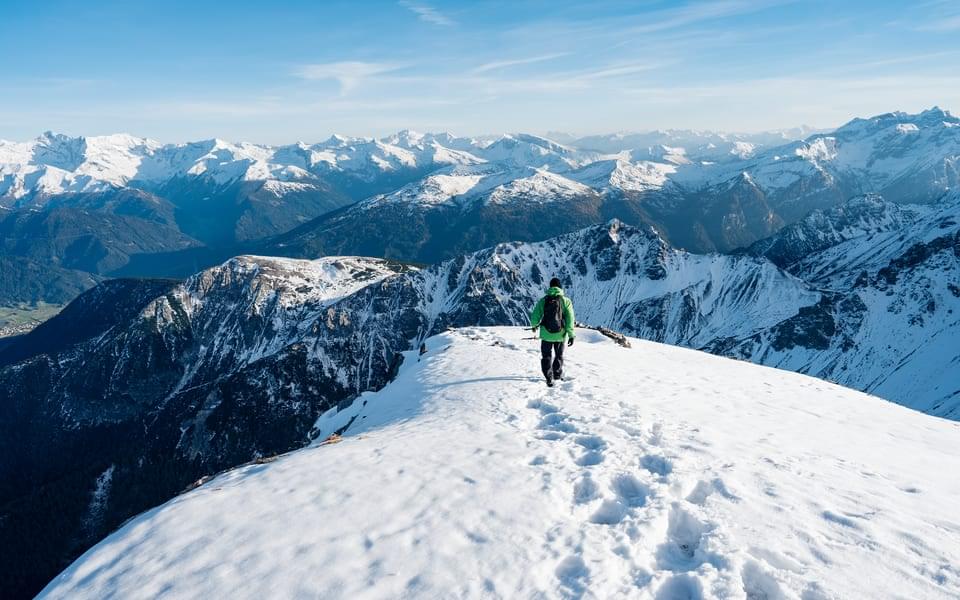
Kasol Trip and Trek to Kheerganga
Kasol tour faqs, what is the best time to go for sar pass trekking.
The best time to go for the Sar Pass trek is during the spring, and summer seasons. Although the trek takes place in the monsoon season, it is recommended to carry proper equipment and supplements as there are chances of landslides and slippery tracks. During this time, the trail is lined by lush green forests and you can also find blankets of snow at the higher altitudes. The temperature remains pleasant, aiding you to climb an altitude of almost 13,500 ft. In winters, the entire route gets jammed with extreme snowfall, thereby restricting trekking possibilities.
How much does the Sar Pass Trek cost?
The cost of a trek to Sar Pass can range between INR 5,000 to INR 9,000 per person which depends on the number of days included and the distance covered. The whole price is also dependent on the inclusions of the package like the meals, the travel assistance, the extra charges of entry to the reserved areas, and other additional expenses.
How is the weather during the Sar Pass trek?
The weather is generally cool and soothing during the Sar Pass trek in Kasol. The temperatures can range from 20 to 22 degree Celsius during the day time, and 0 to -5 degree Celsius during the night time. The spring and summer season is ideal to go for this trek, as the conditions remain near-perfect. During the monsoon season, there is a possibility of heavy rain that can hinder the progress and make the trek slippery, especially at steeper ascents. This trek does not take place in the winter season.
What is the total distance of Sar Pass Trekking?
The Sar Pass trekking distance is 40 to 50 KM in 5 days from the starting point of Kasol and back to the base again. Situated at an elevation of 13,800 feet, the Sar pass trek is an ideal trek for beginners in the Kull region of Himachal Pradesh.
What is the difficulty level of Sar Pass trek?
The difficulty level of Sar Pass trek ranges between easy to moderate level of difficulty, and no prior trekking experience is required. Since the 'easy-moderate' tag is relative to other difficult treks in the Himalayas, Sar Pass commands a moderate level of fitness from all trekkers. The treks include a near-vertical incline at the top and an equally steep descent. The air above 12,000 ft. is very thin, and the oxygen levels are considerably lower, which increases the level of difficulty. It is mandatory to follow a regular fitness regime to ensure your body adapts well to the lower oxygen on the trek.
Is Sar Pass Trek dangerous?
The Sar Pass trek is a relatively moderate trek than other Himalayan treks. Beginners can easily commence upon this trek with guides who are accustomed with the trail. Since this is an adventure activity, one needs to be cautious and take proper precautions while undertaking any trek. Thrillophilia’s Sar Pass trek packages are inclusive of all essential needs like meals, sleeping, bags, medical kits, and professional guides, thereby ensuring the safety and security of beginners. However, it is suggested to prepare for the trek from at least a month before and be physically fit.
How can I get Sar Pass from Delhi?
Kasol is an overnight journey from Delhi which takes around 11 hours. The trek to Sar pass begins from the base camp of Kasol. One can take a flight from Delhi to Kullu followed by a bus journey to Kasol. There is also a train to Bhunter from Delhi where you can catch a local bus till Kasol.
Can we do Sar Pass trek anytime of the year?
The best time recommended for doing Sar Pass trek is between May-July if you wish to experience both pleasant summers and snow-covered peaks. Sar Pass trek is usually not conducted during the winter months of October- December to avoid the chances of rough weather with hailstones and blizzards.
Can we do Sar Pass trek in winters?
Sar pass trek is mostly not arranged by companies during the winter season as the weather can be unpredictable between October- December. The chances of hailstorms and blizzard increases during the winter season and the trail also tends to get covered with the heavy snow in the Sar Pass trek.
What should I carry for Sar Pass trekking?
You need to be well-prepared for the Sar Pass trek.
1. Equipment and gears-
- Trekking pole
- Snow-friendly gloves
- Trekking shoes
- Backpack with rain cover
- Sleeping bag and camp (optional)
2. Clothing-
- Jackets (preferably those that cover sub-zero temperatures)
- Trekking pants
- Quick-dry socks
- Neck-warmer
3. Other essentials-
- Dry tissue paper and non-alcoholic wet tissues too.
- Sunscreen (preferably SPF 50+)
- Heavy moisturizer
- Cleanser/face-wash
- Smaller backpack to carry immediate stuff.
- Water bottle
What level of fitness is expected from trekkers for the Sar Pass Trek?
The Sar Pass trek is an easy to moderate level trek which holds some steep ascent, requiring good stamina. Naturally, this implies that trekkers must have a decent amount of fitness. You should be able to jog for 5 km in about 35 to 40 minutes to increase cardiovascular endurance.
Make your muscles stronger by doing 3 sets of squats with 15 reps per day, and some yoga asanas. This will aid acclimatization, and facilitate adaptability to lower oxygen levels on high altitudes.
Which type of shoes should I buy for Sar Pass trekking?
We recommend carrying trekking shoes with high ankle support, and good quality material that is water-resistant. Since the terrain is uneven and rugged, it is imperative that your trekking shoes have a good grip, which will be less prone to slipping. When buying new shoes, we insist that break them in at least 2-3 weeks before the trek to avoid chafing and blisters. Please avoid carrying sports shoes, as they are not meant for trekking, and can cause fatal slips. Also, carry at least 3-4 pairs of cotton socks.
How do I get to Sar Pass?
You can get to Sar Pass base camp which is in Kasol easily via public as well as private transit systems available.
By Bus- You can take a bus from Delhi, Chandigarh, or nearby major cities to Bhuntar. Kasol is 32 kilometres from Bhuntar, and this distance can be covered by taking a cab, or a public bus offered by Himalayan Road Transport Corporation.
By Train- The nearest railway station to Kasol is Joginder Nagar Railway Station in Mandi, which is easily connected to the major cities of Pathankot and Chandigarh. Some of the major trains running on this route are Pathankot - Jwalamukhi Road Express Special and Pathankot-Baijnath Paprola Express Special. Alternatively, a more convenient route is to travel to Chandigarh via train, and then take a cab or bus from there till Kasol, covering around 260 kilometres in 7-8 hours.
By Air- There are several direct flights from Delhi to Bhuntar airport that take hardly an hour to reach. Alternatively, you can avail of connecting flights from all major cities of India like Chandigarh, Amritsar, Jaipur, Kolkata, Bangalore, and others. From Bhuntar, Kasol is 32 kilometres away, taking 1-2 hours to reach via a private car, a cab, or a public bus.
Is there snow in Sar Pass in May?
Yes, You can witness snow in the Sar Pass Trek in May at the higher altitude places like the Sar Pass (top), Nagaru, and Biskeri Thach. Thrillophilia’s Sar Pass trek itinerary includes all these spots, where we provide camp stays for an enriching experience. During the peak summers in May, you can expect lush and vibrant valleys in the lower altitudes, thereby experiencing a varied range of landscapes and geographical wonders along the route.
Can I go for sar pass trek in November?
No, November marks the start of the winter season and there are high chances of snowfall that can block the route. Since the trek covers a high elevation, the temperatures can drop below -15 degrees Celsius, making it impossible to trek the 48-kilometer trail. Even if it does not snow in November, it is not safe to undertake the trek due to unpredictable weather conditions during this time. Thrillophilia’s Sar Pass trek package is non-functional in November.
What is the height of Sar Pass?
The height of this dramatic mountainous Pass is around 4220 m and 13,850 ft above sea level. The height can be reached by trekking for around five days in which you get to enjoy various splendid sceneries as well as a chance to pass through some of the most thrilling as well as adrenaline-rushing terrains.
Where does the Sar Pass trek start from?
The Sar Pass Trek begins from Kasol, from where you are required to trek to Garhan Village for 5 to 6 hours. From here, a 4 to 5 hour long trek is followed to Mung Thach and then to more 6 hours to Nagaru. From Nagaru, a 6 or 8 hour long trek is done to Biskeri Thatch via Sar Pass.
How is the Sar Pass trek experience?
Huddled 13,700 ft. above sea level in the Kullu district of Himachal Pradesh, sits a snowy dream world that beckons herds of adventurers into its folds every year. Sar Pass is one of the most beautiful treks in India and promises a medley of thick forests, sylvan meadows, and roaring streams. Your first stop is Kasol, which is the base village for the trek. It is a beautiful hamlet reflecting Israeli culture, which makes it every backpackers' dream destination.
The initial part of the Sar Pass trek is housed within stunning woods that seem like something right out of a fantasy movie. The scenery shifts from grassy meadows to the Winterland of Narnia midway through the trek! Patches of green and brown are veiled under a layer of powdery snow. The last hour or two of the trek to the main Sar Pass is the most thrilling part, as the incline of the slope is nearly 90 degrees!
As daunting as it sounds, the surrounding Himalayan beauty overpowers your fear and fatigue. The highlight of the Sar Pass trek is the descent from Sar Pass, which can't be traversed by trekking, give the steep incline. You have to slide down the slope! It feels like a roller coaster ride, only better. Experience your heart racing, and soul rejoicing as the little child in you comes shrieking alive!
Which are the other best Himachal treks that we can book from Thrillophilia?
Here is the list of best treks in Himachal that you can book from Thrillophilia:
- Hampta Pass Trek
- Kareri Lake Trek
- Bhrigu Lake Trek
- Beas Kund Trek
- Prashar Lake Trek
- Buran Ghati Trek
- Shrikhand Mahadev Trek
More on Kasol Tourism

Easy - Moderate
Highest Altitude
April & May
Sar Pass Trek
The Sar Pass Trek is a popular, easy-to-moderate trek that spans 48 kilometers. It offers a unique opportunity to explore the diverse and breathtaking landscapes nestled in the majestic Himalayas. The trek starts from the Himalayan village of Kasol, located in the Parvati Valley of Himachal Pradesh, and reaches an elevation of 13,800 feet.
The journey takes you through a variety of terrains and ecosystems, from lush green forests of deodar, pine, and rhododendrons to snow-covered peaks and vast grasslands. The temperatures vary from 22°C to -5°C, making it ideal for beginners and those seeking a moderate challenge.
As you traverse the Sar Pass trek, you’ll encounter a diverse range of flora and fauna, including towering pine, spruce, deodar, and fir trees and medicinal plants such as Brahma Kamal and Hatha Panja. Wildlife enthusiasts will also be thrilled to spot rare species like Brown Bears and Himalayan Tahr and beautiful bird species like Western Tragopan and Monal Pheasant.
The Sar Pass Trek takes you on an exciting adventure through vibrant green woodlands, charming villages like Grahan, and scenic meadows like Min Thach and Biskeri Thach. At Grahan Village, you can enjoy breathtaking views of a starry night sky that will leave you spellbound. The trek then proceeds to Nagaru, where the landscapes transform into snow-covered expanses of pure white.
On the fifth day of the Sar Pass, you’ll return to Kasol via Barshaini, completing the journey through incredible sights and experiences. The moderate gradient of the trek makes it accessible to a wide range of participants, including beginners and seasoned trekkers. The Sar Pass Trek is undoubtedly an unforgettable experience that should be on every adventurer’s bucket list.
On the last day, if you plan to visit Manikaran, the following conditions apply:
- If only some trekkers wish to visit Manikaran, the vehicle will drop them off at Manikaran. Afterwards, trekkers can arrange their own transport to Kasol, which is only 3 kilometers away. Alternatively, we can arrange a vehicle for an additional cost of Rs. 500 per vehicle.
- If all trekkers wish to visit Manikaran, waiting charges for the vehicle will be applicable at approximately Rs. 200-300 per hour.
- Stay will be on a twin-sharing basis in tents
- + 210 Trek Insurance (Optional)
- Discount Policy
- Transport Included After Trek To Reach Kasol
Pick location – Yodo Cafe, Main Market Rd, Old Bridge, Kasol reporting time 8.30 am
Drop Location: All trek participants will be dropped off at Kasol between 4:00 and 6:00 pm.
- Inclusions & Exclusions
- Food Provided Trekup India
- Safety With Trekup India
Call Our Mountain Experts
Fix Diparture Dates
Sar pass trek videos.
Videos by experts watch these videos to prepare well for a Successful Trek

Want To Trek Like Pro?
Check out the following videos if you want to trek like a pro trekker and improve your skills. These videos contain helpful tips, tricks, and techniques to help you trek like a pro. Whether you’re a beginner or an experienced trekker, these videos can provide valuable insights to enhance your trekking experience. So, watch the videos below by Trekup India experts to take your trekking skills to the next level.
Know Everything About Acute Mountain Sickness
Acute Mountain Sickness is a medical condition that can occur when individuals travel to high altitudes, typically above 8,000 feet. It is caused by the decrease in air pressure and oxygen levels in the air as altitude increases. Symptoms of Acute Mountain Sickness may include headache, nausea, vomiting, dizziness, and difficulty sleeping. To avoid Acute Mountain Sickness, it is important to gradually adjust to high altitudes and seek medical attention if symptoms worsen. To learn more about this condition, check out the videos by Trekup India.
Day Wise Detailed Itinerary of Sar Pass Trek
Day 01: kasol - grahan village by trek.
- Trek Distance: 10 Kms;
- Trek Grade: Gradual – Moderate
- Altitude gain: Approx 2123 Ft / 650 Mtrs.
- Altitude: Kasol (5577 ft / 1700 Mtrs.), Garhan Village (7700 ft / 2350 Mtrs.)
- Time Taken: approx 4-5 Hrs
- Overnight stay will be at Homestay
Meal: Lunch & Dinner Only.
The Sar pass trek begins in Kasol, Himachal Pradesh. From there, the trail follows the Parvati River, which passes through Grahan Village and is known as Grahan Nalah. The trek from here is easy, as villagers usually take it, and you can enjoy the scenic view. The trek from here is approximately 10 km after you pass through the dense coniferous forests and the aroma of pine trees. You will come to a clearing where you will see grassland, and on the side, you will see local vendors selling tea and snacks. Here the locals also sell rhododendron syrup made from the Buras flower (rhododendron). From there on, it is a steep climb until you reach Grahan Village, where you will stay at our homestay and have lunch. If you desire, you can explore the village or the surrounding hills. Rest of the evening at leisure.
Day 02: Grahan – Min Thach by trek
- Trek Distance: 7 Kms;
- Altitude: Garhan Village (7700 ft / 2350 Mtrs.); Min Thach (11,155 ft / 3400 m)
- Altitude gain: Approx 3455 Ft / 1050 Mtrs.
- Trek Grade: Gradual- Moderate
- Overnight stay at Trekking Tents
- Meal: Breakfast, Lunch & Dinner Only.
Today morning woke up with a hot cup of Himalayan black tea; after that, along with our trek leader, we practiced some light exercises followed by basic yoga and meditation in the calm mountains and enjoyed a delicious breakfast prepared by Trekup India’s high altitude mountain chef. After that, we were on our trail from the Grahan Village trek toward the north. The climb from here is gentle, often taken by the villagers to reach Min Thach. After walking through the meadows, you will come to a dense forest where the treks become a little steeper and more confusing. There will be some clearing in the forest to set up a tent at Min Tach. On reaching Trekup India campsite, we will be assisted to check into the camps, and rest of the evening at leisure, followed by evening tea and snacks, evening briefing for the next day’s plan, delicious dinner, and a good night’s sleep.
Day 3: Min Thach – Nagaru by Trek
- Trek Distance: 6 Kms
- Time Taken: Approx 4 Hrs
- Altitude: Min Thach (11,155 ft / 3400 m); Nagaru (12467 Ft/ 3800 Mtrs)
- Altitude gain: Approx 1312 Ft / 400 Mtrs.
- Trek Grade: Gradual- Moderate
- Overnight stay at Trekking Tents
- Meal: Breakfast, Lunch & Dinner Only.
Wake up to a beautiful Himalayan morning with the natural alarm of birds chirping, and follow the daily routine of exercise, meditation, and warm breakfast to have an idea from Min Thach, Nagaru is not that far, and it can be seen from your current campsite, after passing through the forest, you will climb a rocky ridge to reach Nagaru, enroute you might find snow which makes the trail tricky and risky. You must be cautious; trekkers must know how to cross or walk on snow. The expert Trek leader of Trekup India will help and assist in all manners to successfully walk and cross the snow. Nagaru is a flat area at the top of the hill. It is mesmerizing and rare; you have an amazing view of Min Tach and Garahan Village from the campsite. During the night time, the temperature dips; hence Trekup India recommends and advises all its trekkers to carry appropriate clothing to keep themselves warm and cozy during night chilling nights when in adventure.
Day 04: Nagaru – Biskeri Thach via Sar Pass by Trek
- Trek Distance: 14 Kms; Time Taken: approx 7-8 Hrs
- Altitude: Nagaru (12467 Ft/ 3800 Mtrs); Sar Pass (13780 Ft/ 4200 Mtrs), Biskeri Thach (10991 Ft. / 3350 Mtrs)
- Altitude gain: Approx 1313 Ft / 400 Mtrs. Altitude Loss: 2789 Ft. / 850 Mtrs.
- Trek Grade: Moderate -Difficult
- Overnight stay at Trekking Tents
- Note: this day they will start early morning trek at 02:30 am towards Sar Pass
Wake up for an exciting morning, and we start a bit early as it will be one of the longest but indeed exciting from here on; today, we will be climbing through the ridge line in a southward direction; here, you will find a few steep stretches. There will be snow patches on the way, which will be easy to go through, and beautiful sights to see; you will be climbing another hill that is a little sharper and steeper. Caution must be made, too, while crossing. Once you have surpassed the difficult trek, you will see the beautiful sight of Sar Pass. From the pass, enjoy the breathtaking peeks around Tosh Valley . The final descent from the pass is entertaining as we slide down towards the valley on the snow, be prepared for sliding on snow; however, strictly follow all necessary instructions provided by the Trekup India trek leader. By evening well in time, we reach our campsite at Biskeri; we might get some mobile network here to get in touch with our family and friends you have saved some charge of your phone. Evening at leisure time for complete relaxation after such a long day.
Day 5: Biskeri Thach – Barshaini and retun to Kasol by drive
- Trek Distance: 10 Kms; Time Taken: approx 4-5 Hrs
- Altitude: Biskeri Thach (10991 Ft. / 3350 Mtrs); Barshaini (7874 /2400 Mtrs)
- Altitude Loss: 3117 Ft. / 950 Mtrs.
- Trek Grade: Easy
- Meal: Breakfast, Lunch Only.
On the final mountain morning, we start with our morning routine and commence on our last day of the trek through the slightly steep trail. You will go across a stream and pass through fenced land. The Sar Pass Trek trail ends at a fenced plot; after crossing land, you will be back on the trail, and from there, the trail will lead into the dense forest, where you will find trails going in all directions, but you must follow the northeast one. After walking through the forest, you must pass through another stream. Crossing the stream is tricky as you must rappel through huge rocks. Then you would have to walk through wooden planks, climb a bit to reach the trail, and then follow the water pipeline to Pulga village, one of the twin villages of Pulag and Tulga village. From Tulga, you must cross the Parvati River to reach Barshaini, which is the endpoint of the trek; from here, we hop into our vehicles and drive to Kasol; from here, you have your further plans and arrangements.
Sar Pass Trek Route Map
We’ve prepared a comprehensive Trek Route Map for your upcoming adventure to Sar Pass Trek , which outlines the entire journey including all stops and trails. This map provides detailed information on the terrain, distance between points of interest, and estimated travel time to help ensure a safe and enjoyable trek. We’ve carefully curated the map to ensure that you have all the necessary information at your fingertips. Please take a moment to review it thoroughly, and don’t hesitate to reach out if you have any questions or concerns.
Sar Pass Trek Altitude Chart
The Trek Altitude Chart is a useful tool for Trekkers to monitor their altitude changes during their rides, allowing them to plan their routes more efficiently and track their progress over time. This Sar Pass Trek chart is beneficial for both casual and experienced Trekkers, helping them make the most out of their Trek experience.
Trek Cost Inclusions
- Stay: 1 night home stay on Sharing Basis and 3 Nights tented accommodation at respective campsites of Trekup India on twin sharing basis.
- Meals: Trekup India provided cooked meals during the trek starting with Lunch on Day 01 to Lunch on day 05 lunch (Meals are simple, nutritious and vegetarian and non-repeated meals)
- Transport: Barshaini to Kasol on sharing jeeps
- Trek Insurance (Optional): Trekup India recommends that all trekkers consider getting trek insurance. This is optional, but highly recommended. Trek insurance covers unexpected events that may occur during your trek. The cost of the insurance starts from INR 210. Please read more about what is included in the coverage and why it is mandatory on treks.
- Trek Equipment: Sleeping bag, Sleeping tents, Kitchen tent, Dining tent, Toilet Tent.
- Amenities: All utensils, sleeping mattresses (Black foam mats), Crampons, and Gaiters for snow.
- Health & Safety: First Aid Box, Oxygen Cylinders, Stretchers, Oxi meters, BP Machines, health.
- Permits: Forest Permits and Camping Permission Fee
- Trek Crew: High Altitude Chef, Helpers, Trek Leader & Guides, and other support teams.
- Potters & Mules: Potters and Mules are to carry all trekking equipment, ration, and vegetables.
Trek Cost Exclusions
- GST 5% (it is Mandatory)
- Any Meals/accommodation beside the itinerary or not mentioned in the program.
- Any Bus / Airfare to/from trek start/end point
- Personal Medical expenses do carry your medication.
- Any personal services such as Laundry, phone calls, liquors, mineral water, etc.
- Any still / video camera fee
- Any Entrance fee Monuments, Monasteries, Museums, Temples – Pay directly on the spot.
- Mules or porter charges to carry private baggage (Offload Charges for bag 365 per day, per bag if paid online (at base camp 2,550). Note: Bag weight should not be more than 10 kg.
- Any emergency evacuation charges
- Any services that are not mentioned in the cost inclusion section.
What should you pack for the Sar Pass Trek
Sar Pass Trek is a high-altitude trek. The trekking gear you have to have for this particular trek differs from normal treks. Thus, read this whole segment. There is an important question that the trekker who is doing trek asks, like what all things to carry while trekking. Below, we have provided the details on everything you should take; an easy way to remember is by Head to foot or foot to head. We have prepared from Head to foot.

When trekking it's important to carry headgear to protect your head and face.
Heading out for a trek? Don’t forget to carry headgear to protect your beautiful face and head from the sun, wind, and dust! It’s an essential accessory that keeps you safe and comfortable throughout your adventurous journey. So, make sure you pack it before you step out into nature!
- Head Lamps – When trekking at night, headlamps are essential to illuminate your path while keeping your hands free. Headlamps come in different sizes and lumens, so it is essential to choose one that suits your needs.
- Hats or Cap – Caps or hats are also necessary when trekking in different weather conditions. Caps protect your head from the wind and freezing temperatures at night, while hats provide shade and protection from the sun during the day. It’s essential to ensure that your hat has a strap to prevent it from being blown away by the wind.
- Sunglasses – Sunglasses are also essential for trekking. Your sunglasses should protect your eyes from harmful UV rays and fit your face perfectly to avoid falling off while climbing, jumping, or crossing obstacles. The glass of your sunglasses should also be designed for different weather conditions to provide optimal visibility.
- Buff / Balaclava – Lastly, a buff or balaclava is a must-have to protect your mouth or neck from extreme temperatures and keep them warm. Buffs and balaclavas come in different materials, thicknesses, and designs, so it’s important to choose one that suits your needs and preferences. Depending on the weather conditions and your activities, you can wear them as neck warmers, face masks, or headbands.
When trekking in high altitudes, prepare for cold weather by wearing layers. Layering traps heat, keeps you warm, and allows you to easily adjust your clothing as temperatures fluctuate.
Layering is important for different seasons when trekking. When planning a high-altitude trek, it is important to prepare for the cold weather. Wearing layers is the best approach as it provides both protection and flexibility when the weather changes frequently in the mountains. Layering helps to trap heat and keep your body warm, while at the same time allowing you to easily adjust your clothing as the temperature fluctuates. By wearing layers, you can enjoy your trek comfortably and stay safe in the unpredictable mountain weather
- For spring, summer, and monsoon treks , consider wearing three layers: a woollen sweater, a fleece, and a padded jacket.
- For autumn treks , add one more fleece layer to make it four layers.
- For winter treks , you may need five layers with thermals, a woollen sweater, two fleeces, and a padded jacket.
- T-shirt/sleeve shirt – Bring three T-shirts and two quick-dry trek pants, wearing one and carrying the others. Long sleeve shirts help to protect from sun UV rays. We recommend synthetic T-shirts as they get dry quickly when they get wet.
- Hiking / Trekking Jacket – down jackets (-5 to-10 C) or two-three-layer jackets.
- Thermals – at least two pairs of thermals help keep the body warm during cold weather.
- Undergarments – you can carry them according to your habitual and hygiene requirements.
- Gloves – 1 pair of gloves will keep your hand warm and nice.
- Trek Pants – Bring 2 to 3 comfortable trekking pants. Trekking pants play a significant role, as they are designed for comfort and mobility, making trekking easier. It should be Synthetic so that it gets dry quickly when wet.
- Rain Wear – you can carry a raincoat or Poncho. During long rains and snowfalls, the waterproof jackets start leaking. Still, the Poncho and raincoats keep you dry, so choose accordingly.
Tip: If you choose a raincoat on your trek, carry a small waterproof cover so things inside your backpack can’t get wet. If you carry a Poncho, you don’t need to worry. It protects both you and your backpack.
When it comes to planning a trek, one of the most important aspects is to ensure that you have the right kind of foot gear.
- Trekking shoes which are waterproof and have ankle support. Walking / Hiking sandals which can be used off the trek, i.e., in the morning and evening hours when you reach the campsite, basically to get your feet rest from heavy boots, sometimes used for crossing streams and rivers, it’s more comfortable and safer than crossing barefoot or wetting your shoes. Sneakers (Optional) can be worn for normal driving days or used around the camp.
- Socks – you should at least carry 3 to 4 pairs.
- Microspikes & Gaitors will be provided by Trekup India when required. You don’t have to carry them.
Personal First Aid Kit
Don't forget to pack your personal first aid kit! It's always better to be safe. So, make sure you're prepared for any unforeseen circumstances.
Below are some common medicines generally required/used during your adventure trip; however, please consult your doctors prior.
- Antiseptic towel or water syringe (to clean the wound)
- Butterfly bandage for a small cut
- Cotton and elastic bandages and sterile gauze pad for larger wounds
- Latex gloves are used when the wound bleeds.
- Medicine for Diarrhea (Upset stomach)
- Medicine for cold, flue/fever, headache
- Some pain killers
- ORS pouches
- Quick pain relief spray (External use)
- Any personal medicine prescribed by your doctor
- Dimox / Similar for high altitude sickness
- Bug Repellent
- Carry some nutria/energy bars and drinks (non-alcoholic)
- Note: Kindly consult your doctor before purchasing or taking any medicine.
Gadgets and Other Items
You might also consider bringing a camera, binoculars, portable charger, and snacks. Be well-prepared and tackle any trail with confidence.
- Trekking Poles
- Mobile phone
- Spare batteries for phone and camera, power bank
- Lightweight flashlight or headlight
- A waterproof bag made of plastic is used for the camera.
- Plug/converter for electrical items
- 1-litre water bottle
- A journal with a pen would be a good idea to keep your notes.
- Some book of your interest for the ideal time
- Get into the habit of maintaining a Map and guidebook of the region.
Hygiene & Personal toiletry
Remember to pack hygiene and personal toiletry items such as soap, shampoo, toothbrush, toothpaste, deodorant, and toilet paper.
- Sunscreen with UV protection to shield your skin from harmful rays
- 1 or 2 small quick-drying towels to help you dry off quickly in case of rain or sweat
- Toilet paper, tissues or wet wipes for maintaining hygiene while on the trek
- Toothbrush, toothpaste, and mouth freshener to keep your mouth clean and fresh throughout the journey
- Deodorant or talcum powder to help you stay fresh and odor-free, especially during hot and humid climates
- Shampoo to keep your hair clean and healthy
- Sanitary pads or tampons (for female trekkers) to manage menstrual cycles
- Lip-gloss or salve to protect your lips from dryness and chapping
- Bio-degradable soap to keep yourself clean and hygienic while on the trek
- Nail clipper and other personal items that you use daily
Compulsory Documents to Carry
There are certain documents that you should always carry with you. These documents are not only necessary for your safety and security, but they may also be required by local authorities.
These files must be submitted to the Forest Department before your trek. With none of these, you will not be permitted to trek—original and photocopy of government photo identity card. Carry IDs like Aadhaar, voter ID, etc.
How To Plan Your Trek & Reach Kasol
If you’re planning a trip to Kasol in Himachal Pradesh, India, there are several options available for you to get there. Let’s delve into each of these options in detail:
By Road: One of the most common ways to reach Kasol is by taking an overnight bus journey from Delhi or Chandigarh. There are two options to choose from. The first option is to reach Chandigarh first and then take a bus to Kasol. The journey typically takes around 10 hours. The second option is to reach Kullu first and then hire a private taxi or shuttle bus to reach Kasol. Following this route, you can catch an overnight bus to Kullu, then take a taxi or shuttle bus to Kasol. Regardless of the option you choose, it’s advisable to take government-run buses instead of private buses when departing from the bus station, as private buses are more likely to experience delays. Government buses are known for their reliability. Regardless of your choice, make sure to arrive in Kasol by 9 a.m. at the latest.
By Air: While flying to Bhuntar Airport is an option, we advise against it due to the expensive fares and frequent flight cancellations. However, if you do choose to fly to Bhuntar, Kasol is only a short distance away, and you can easily find transportation by bus or private taxi. If you opt for this route, it’s recommended that you arrive at least a day before the trek’s starting date. The best option is to fly to Chandigarh Airport and then take a bus to Kasol.
By Train: You can also travel by train and get off at Pathankot railway station, which is around 300 km from Kasol. From there, you can catch direct buses to Kullu/Kasol. The journey usually takes an overnight journey. It’s advisable that you reach Kasol a day before your planned trip.
In conclusion, if you’re planning a trip to Kasol, you have several options to choose from, each with its own benefits. Regardless of the route you choose, it’s important to plan your journey in advance and arrive in Kasol with ample time to enjoy your trip.
Sar Pass Trek Photos
Fitness required & preparation guide for sar pass trek.
If you’re preparing for a Sar Pass Trek, Trekup India recommends jogging as part of your fitness routine. Jogging helps work out the same muscle groups that you’ll use during trekking and can help you build endurance. You don’t need any special equipment to get started.
Fitness Target
Trekup India has put the Sar Pass Trek into an easy to moderate grade-level trek.

For Easy – Moderate Treks – In order to be well-prepared for your upcoming trek, it is recommended that you focus on building your endurance by aiming to cover a distance of 4.5 kilometers in less than 45 minutes. This will help you to develop the necessary stamina and strength required to successfully complete your journey.
How to Achieve This Fitness Target?
To start preparing for your trek:
- Try jogging for at least five days every week.
- If you find 5 km too difficult at first, begin with 2 km and gradually increase over 2-3 weeks.
- Once you feel more comfortable running 5 km, focus on improving your speed gradually on a daily basis.
It is important to ensure that you can consistently complete 4.5 km in under 40 minutes for at least two weeks before your planned trek. Allow yourself 6-8 weeks to prepare physically for the journey.
Strength Training exercises that benefit Trekking
Trekking is an activity that demands a good level of strength.
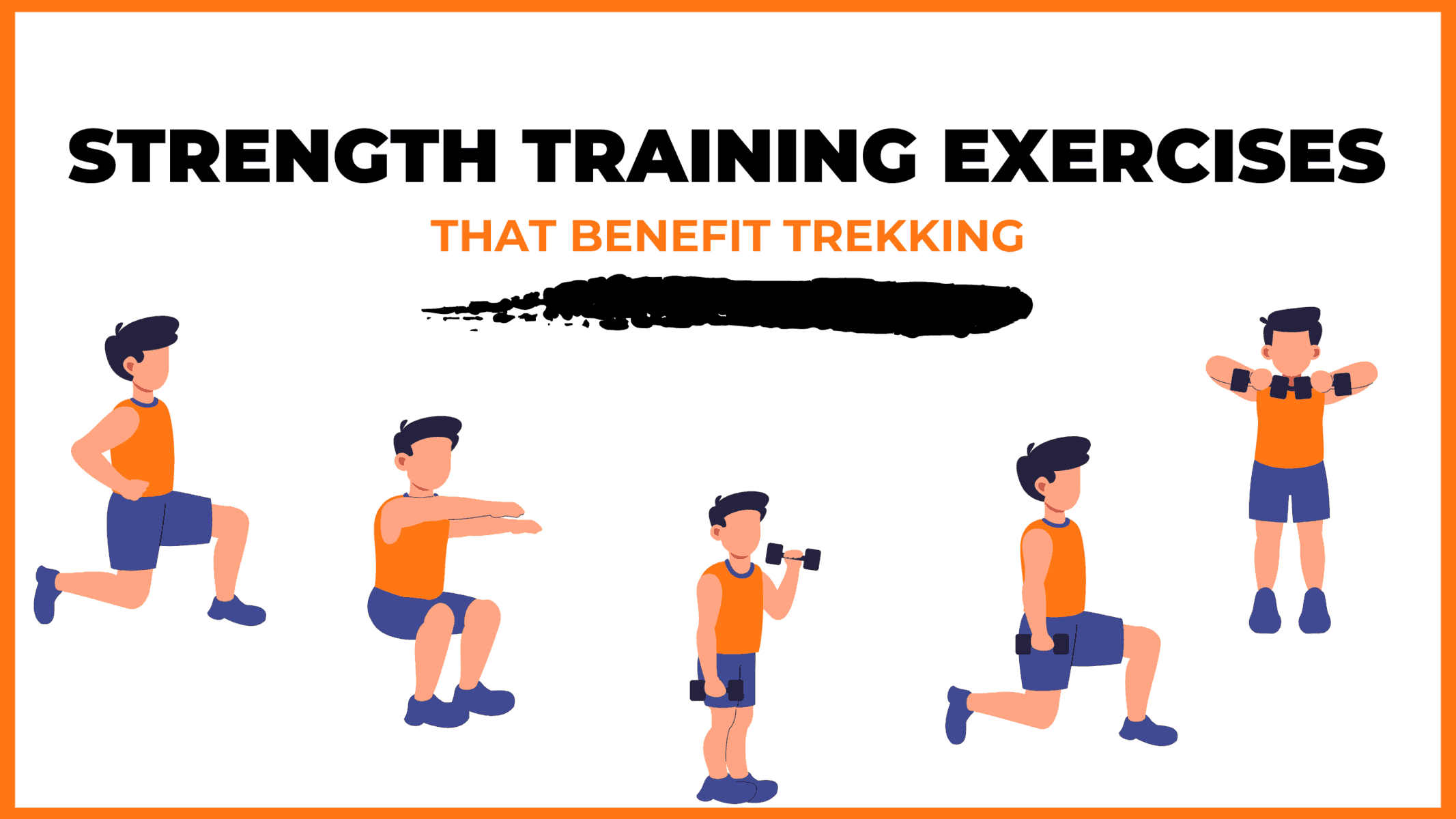
Trekking is a demanding activity that requires good cardiovascular endurance, muscular strength, and overall fitness. To help you prepare for your trek, incorporating bodyweight exercises into your training routine can be an effective way to build strength, improve stability, and enhance endurance, all of which are crucial for a successful trek. In this regard, here’s a breakdown of body weight exercises categorized by the specific body parts they target and the benefits they offer during trekking.
1. Lower Body Exercises
Lower body exercises like squats and lunges are great for building lower body strength, essential for trekking.
Squats are an excellent exercise for building lower body strength, essential for trekking. They target the quadriceps, hamstrings, glutes, and calves. Solid quadriceps and glutes provide power for ascending and tackling uphill climbs, while vital hamstrings aid stability during descents. This is particularly helpful in navigating uneven terrain during trekking.
How to perform Squats Exercises:
- Stand with feet shoulder-width apart, toes pointing slightly outward.
- Lower your body by bending your knees and hips, keeping your back straight.
- Lower until your thighs are parallel to the ground or as low as comfortable.
- Push through your heels to return to the starting position.
Lunges target the quadriceps, hamstrings, glutes, and calves. They improve lower body strength, balance, and stability, crucial for maintaining control on rocky trails and steep slopes. Additionally, they enhance flexibility, reducing the risk of injury while trekking.
How to Perform Lunge Exercises:
- Stand with feet hip-width apart, hands on hips or sides.
- Take a step forward with one foot, lowering your body until both knees are bent at 90-degree angles.
- Push through the heel of your front foot to return to the starting position.
- Repeat on the other side, alternating legs.
2. Upper Body Exercises
Upper body exercises such as push-ups and pull-ups effectively strengthen the upper body, especially the chest and shoulders, which are essential for carrying a backpack during treks.
a. Push-Ups
Targets: Chest, shoulders, triceps, and core.
Benefits for Trekking: Push-ups are an effective exercise to strengthen the upper body, especially the chest and shoulders, essential for carrying a backpack during treks. Improved upper body strength will also help maintain posture and stability while traversing challenging terrain.
How to Perform Push-Ups Exercises:
- Start in a plank position with hands shoulder-width apart and body in a straight line from head to heels.
- Lower your body by bending your elbows until your chest nearly touches the ground.
- Push through your palms to return to the starting position.
- Keep your core engaged throughout the movement.
b. Pull-Ups/Bodyweight Rows:
Targeting the back, biceps, and shoulders can significantly benefit trekking. You can strengthen these muscle groups by performing pull-ups or bodyweight rows and improve your posture and balance while carrying a backpack. Additionally, more muscular back muscles can help reduce the risk of back strain and fatigue during long treks, making your journey safer and more comfortable.
3. Core Exercises
Core exercises like planks and Russian twists can help strengthen the core muscles, which are crucial for maintaining stability and balance while trekking on uneven terrain.
Targets: Abdominals, obliques, and lower back.
Benefits for Trekking: Planks are an effective exercise that helps strengthen the core muscles. These muscles are crucial for maintaining stability and balance while trekking on uneven terrain. A strong core also helps improve posture, reducing the risk of back pain and fatigue during extended hikes.
How to Perform Planks Exercises:
- Start in a plank position with elbows directly under shoulders and body in a straight line from head to heels.
- Engage your core and hold the position, avoiding sagging or arching the back.
- Keep breathing steadily and hold for the desired duration.
b. Russian Twists
Targets: Obliques, abdominals, and lower back.
Benefits for Trekking: Russian twists engage the core muscles, particularly the obliques, improving rotational stability and balance. Enhanced core strength helps prevent injuries and improves overall performance during trekking.
How to Perform Russian Twist Exercises:
- Sit on the ground with knees bent and feet flat, leaning back slightly to engage the core.
- Clasp hands together and twist the torso to one side, bringing the hands towards the ground beside the hip.
- Return to the centre, then twist to the other side.
- Continue alternating sides for the desired number of repetitions.
4. Full Body/Cardiovascular Exercises
Full-body/cardiovascular exercises like burpees and mountain climbers are excellent for improving cardiovascular endurance, strength, and agility.
Burpees are an excellent full-body exercise that targets your legs, chest, arms, and core. This exercise dramatically benefits trekking enthusiasts, improving cardiovascular endurance, strength, and agility. Regularly incorporating burpees into your workout routine can enhance your overall fitness level, which can help you endure long hikes and rugged terrains with ease.
How to Perform Burpees Exercises:
- Start in a standing position.
- Squat down and place hands on the ground.
- Jump feet back into a plank position.
- Perform a push-up.
- Jump feet back to the squat position.
- Explosively jump up into the air, reaching overhead.
- Land softly and repeat the sequence.
b. Mountain Climbers
Mountain climbers target the core, shoulders, chest, and legs. This dynamic, full-body exercise can significantly improve cardiovascular endurance and agility. It is an excellent functional workout for trekking preparation as it engages both the upper and lower body muscles while strengthening the core muscles.
How to Perform Mountain Climbers Exercises:
- Drive one knee towards the chest, then quickly switch legs, alternating in a running motion.
- Keep the core engaged and the hips stable throughout the movement.
- Continue at a moderate to fast pace for the desired duration.
Incorporating bodyweight exercises into your training routine can help you build strength and endurance and prepare your body for the physical demands of trekking. Consistency and proper form are crucial to maximizing the benefits of these exercises and ensuring a safe and enjoyable trekking experience. Engaging your core muscles, including obliques, abdominals, and lower back, with Russian twists can improve your rotational stability and balance, preventing injuries and enhancing overall performance during trekking.
When incorporating strength training exercises into your workout routine, it’s essential to maintain proper form and technique to avoid injury. Start with lighter weights and gradually increase the intensity as you progress, focusing on compound exercises targeting multiple muscle groups simultaneously. Some examples of practical strength training exercises for trekking include squats, lunges, deadlifts, and pull-ups.
Remember to give your muscles time to recover between workouts, and remember to stretch before and after your workouts to prevent injury and improve flexibility. Combining strength training with jogging and proper stretching allows you to take your fitness to the next level and confidently tackle even the most challenging treks.
Our Trekkers Reviews And Expreinces
Food provided by us during trek.
We provide only Indian vegetarian food, and your meal will mainly consist of Indian bread, vegetables, lentils, rice, and a delicious dessert. During your trek, we will serve three meals a day, including breakfast, lunch, and dinner. You will also be served tea, snacks, and lip-smacking soup in the evening before dinner. If it is a long day of trekking, you will be given a packed snack.
After extensive research on the trekkers’ nutritional requirements, we prepare the menu. Before putting all the meals together, we also consider the altitude and the weather.
The meal we serve during the trek is perfectly balanced with calories, carbohydrates, vitamins, protein, fibre, and minerals. You need to know that all our cooks have great expertise in cooking and have undergone thorough training. So, get ready to enjoy delectable and lip-smacking dishes during your trek. You will be served with lemon tea in the tent to start your day with a refreshed feeling. Before leaving the campsite for trekking, you will be given a hot finger-licking breakfast like upma, Aallu Prantha, Besan Chilla, Poha, Daliya, Corn flakes, and Maggie, along with tea or coffee.
If your trek is longer, we also offer some fresh local fruits such as apples and healthy drinks like Frootie or Maaza. In the afternoon, you will be served a simple & healthy lunch, while at around 04:00 pm, you will be given tea and a light evening breakfast. After you reach your campsite at night, you will be served a hot and delightful dinner.
After reading this, you must have understood the food we provided on the trek; you don’t need to worry about food. Many trekkers repeatedly trek with us because of the food we provide. Thus, we will give you unforgettable experiences.
Safety During Sar Pass Trek

Trekking with us for the Sar Pass Trek is entirely safe because we have a team of trek leaders qualified in Wilderness first-aid and complete information about the high-altitude glitches. During the trek, we carry a full first-aid kit that contains all the essential medicines. Before trekking with us, you must ensure that you are medically fit for the trek; for us, your medical fitness is more important than anything else.
Right from our establishment, we at Trekup India have been continuously introducing new safety practices into Indian trekking to ensure the safety of voyagers. Trekup India introduced microspikes and made emergency bottled oxygen mandatory for all treks. Our trek leaders take your daily Pulse oximeter reading. We at Trekup India introduced the radio walkie-talkie as a safety communication device.
How can we ensure that your trek is safe with us?
We have noticed that most trek-organizing organizations do not follow these systems, but with time, they are following us; several competing companies are adopting these practices and organizing great, safe treks.
We ensure complete technical safety in the mountain. Our company has a vast team of more than 100 guides and trek leaders who serve on Himalayan treks. One of the best things about our team is that all the members are trained professionally by the Nehru Institute of Mountaineering, Indian Mountaineering Foundation Delhi, and Hanifle Center Outdoor Education Mussoorie.
Explore our New Safety Protocols
To ensure a perfect Trek, we have introduced some new safety checks to ensure excellent safety for our trekkers.
Our On-trek safety checks include:
- Daily oxygen saturation, along with pulse readings
- Stretchers team appointed on every trek
- Trained mountain staff and complete safety
- Additional oxygen cylinders
- Special medical kit for high-altitude treks
- Microspikes on all types of snow treks
- Experienced Trek leaders, as well as safety
- Technical team on all snowy slopes
For Us, Your Safety Is the Top Priority
At Trekup India, you will find a team with local knowledge and fluency in English and Hindi. This helps ensure that you have a fantastic trek. Not only this, but we also pay attention to your health and safety because this is something we cannot ignore. All the team leaders involved in trekking have already undergone several professional courses in first aid, portable altitude chamber training, CPR, environmental awareness training, and advanced wilderness emergency medicine.
We also carry a complete first aid medical kit on every trek and trip we organize. Apart from the medical kit, we take a portable altitude chamber (if needed) and medical oxygen for all high-altitude treks. Our company has significant expertise in organizing all sorts of group adventure holidays for family groups, school and college groups, and friend groups. We have many travel options that suit different fitness levels and travelling styles.
Regardless of the group size, we value each and every member of our trekking groups. Our commitment to personal attention ensures that your needs and safety are always our top priority.
Who we are?
Trekup India has been a stalwart in the Adventure Tourism industry for 30 years. Since our inception, we have been dedicated to providing top-notch treks, voyages, trekking programs, and high-altitude expeditions. Our extensive experience is a testament to our commitment to your adventure and safety.
We organize treks in Uttarakhand, Kashmir, Sikkim, and Himachal while being part of the trekking community; we feature more than 75 documented Himalayan treks. In addition to other outdoor activities, our company also organizes trips for schools, colleges, and families.
Therefore, we maintain the quality of services offered to our valuable customers.
Must Read These Information Of Sar Pass Trek
Why you should do sar pass trek.
The Sar Pass trek is meant for people who want to trek but are not professionals and want to be as close to snow-covered mountains. While trekking, you can enjoy the hospitality of the locals as you pass through various villages. It is a great experience for people who want to experience mountain life. It is an unforgettable experience to see lush green meadows, a forest, and snow-covered hills. You test your physical and mental endurance as you pass through difficult terrains like ridges and snow-covered trails. You enjoy the scenic view of the river gushing through the rocks, walk on the bridges, and watch the river from close.
Best time to do Sar Pass Trek
Sar Pass Trek is best done during Summertime, between mid-April and June, or Autumn, between September and mid-November. As you can see, the panoramic view is because of the clear sky. Changing weather makes you enjoy the different shades of weather, like changing color. In the summer, wildflowers are in full bloom, with the mountains covered in lush green. In winter, you can enjoy snow covering the trail and hills all around.
How Difficult is the Sar Pass Trek
The Sar Pass trek in the Parvati Valley of Himachal Pradesh, India, is considered intermediate difficulty. Here are the factors that contribute to its level of challenge:
Elevation Profile:
The Sar Pass trek reaches its highest point at the pass, standing at approximately 4,220 meters (13,845 feet) above sea level. While this is a considerable altitude, it’s relatively moderate compared to other Himalayan treks.
Climbing Challenges: The trek involves a significant ascent, which can make acclimating to the higher elevations difficult and increase the risk of altitude-related illnesses.
Trail Characteristics:
The trekking route offers diverse landscapes, including dense forests, grassy meadows, rugged rocky terrain, and snow-covered trails, particularly near the pass.
Seasonal Obstacles: Depending on the time of year, trekkers may encounter snow and ice along the route, especially when crossing the pass, which requires caution and attention to ensure safe passage.
Mountain weather can be notoriously erratic, requiring trekkers to be equipped for various conditions, including precipitation, snow, and drastic temperature fluctuations, particularly at elevated heights.
Physical Conditioning is Essential: The trek demands a good level of physical fitness, requiring the ability to withstand extended periods of walking (typically 5-7 hours daily) and the capacity to tackle challenging inclines and declines.
Preparation is Key: While prior experience with high-altitude treks is advantageous, it’s not a requirement. However, trekkers should commit to a regular fitness regimen that builds cardiovascular endurance, strength, and hiking proficiency.
Trek Duration: The Sar Pass trek typically spans 5-7 days, although the exact duration may vary depending on the specific itinerary and the group’s pace.
Guided Support: Many trekkers participate in guided treks led by experienced companies or local guides, which can significantly simplify the journey by handling logistics such as route navigation, camp setup, and meal preparation.
Embarking on a Solo Journey: Trekking without a guide demands a higher level of autonomy and route-finding expertise.
Ideal Trekking Period
Peak Seasons: The most suitable times to embark on the Sar Pass trek are from mid-April to May and September to October when the climate is relatively calm, and the trail conditions are conducive to hiking.
Essential Preparations
Fitness Regimen: Get in shape with a workout routine incorporating cardio, strength training, and backpacking exercises.
Equipment: If you’re not joining a guided tour, ensure you’re equipped with the right gear, including warm attire, sturdy hiking boots, and camping essentials.
Mental Toughness: Be prepared to face the physical and mental challenges of multi-day trekking in a remote, high-altitude environment.
The Sar Pass trek is a moderately demanding adventure, suitable for trekkers with good physical fitness and some prior trekking experience. While it doesn’t require specialized technical skills, the combination of high elevation, diverse terrain, and unpredictable weather demands thorough preparation and respect for the mountain environment. With proper planning, the Sar Pass trek promises a thrilling and breathtakingly scenic experience in the Himalayas.
Frequently Asked Questions About Sar Pass Trek
What is the duration of the sar pass trekes trek.
Its a 4 Night and 5 Days trek.
Similar Treks

Beas Kund Trek
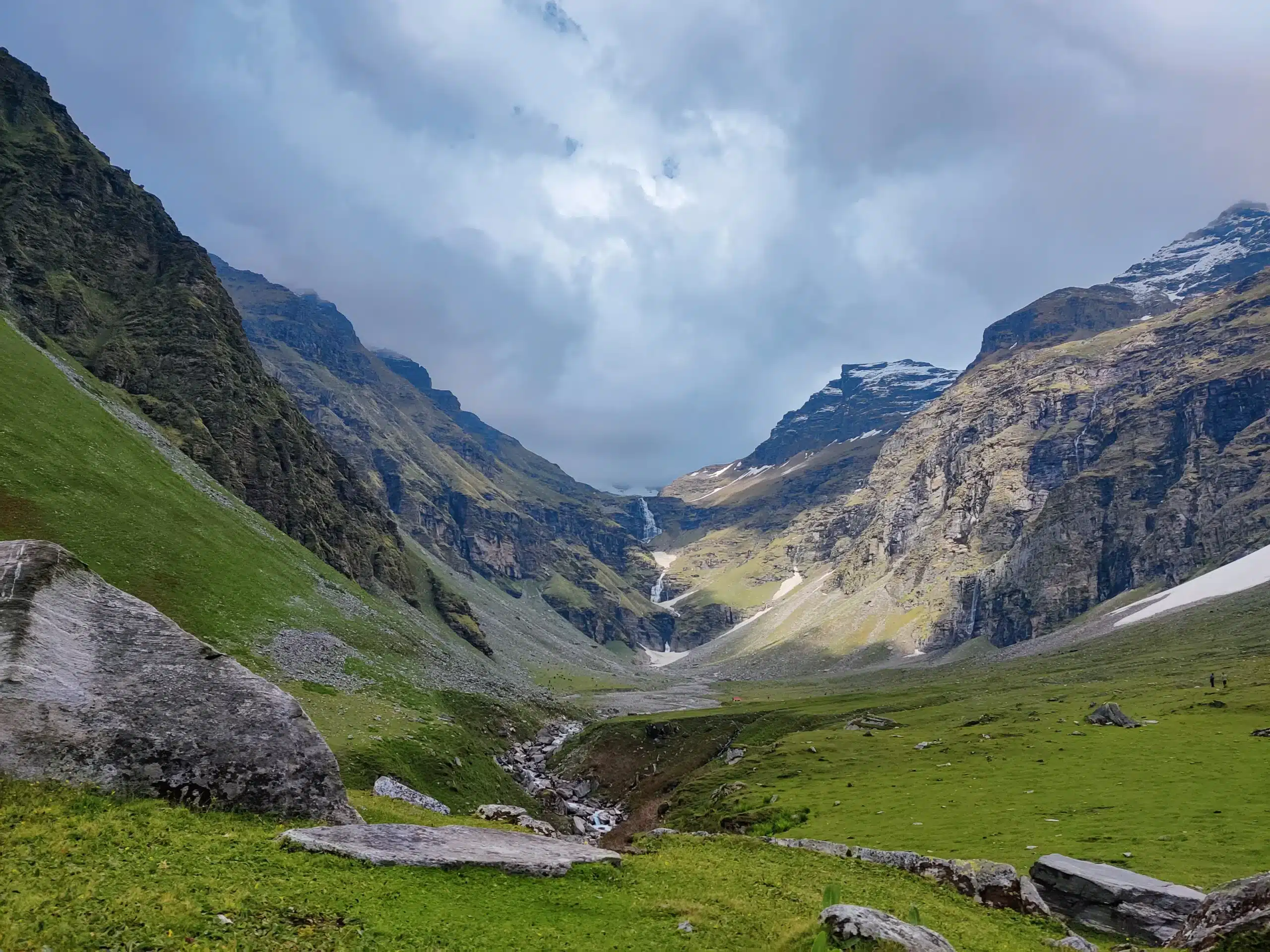
Rupin Pass Trek

Buran Ghati Trek

Hampta Pass Trek

Bhrigu Lake Trek
Trek Insurance – (Trekup India recommends each trekker get insurance.)
Discount Policy Trekup India
Group Discount: Our group discount policy allows you to save money when booking a trek with a group of 10 or more individuals. You will only need to pay for 9 people, as we waive off the trek fee for one person in the group. It’s important to note that the discount amount does not include the 5% GST. We look forward to hosting your group on our trekking adventure soon!
Trekup India offer special discounts to inspire enthusiastic Trekkers. Checkout our Discount policy here
Transportation to base camp is optional. If you want to book transport, you can also book it at the time of booking; just tell your mountain expert or trek coordinator, and they will guide you. We strongly recommend you book your transport at least seven days before the trek.

- Trekking & Travel Events
- Travel Organizations
- Himalayan Treks
- Maharashtra Treks
- Karnataka Treks
- Travel Guides
- Weekend Getaways
- Trekking Tips & Advice
Sar Pass Trek: A Complete Guide (Updated 2024)
- Trekking Destinations
Are you seeking an exhilarating trekking experience amidst the breathtaking Himalayan landscapes? Look no further than the Sar Pass Trek.
This trek is a favourite among outdoor enthusiasts and nature lovers. It offers a perfect blend of natural beauty and adventure.
In this article, we will dive into the details of the trek, including the distance, best time to visit, difficulty level, essential gear, and a comprehensive itinerary to help you plan your unforgettable journey.
Table of Contents
Overview of Sar Pass Trek
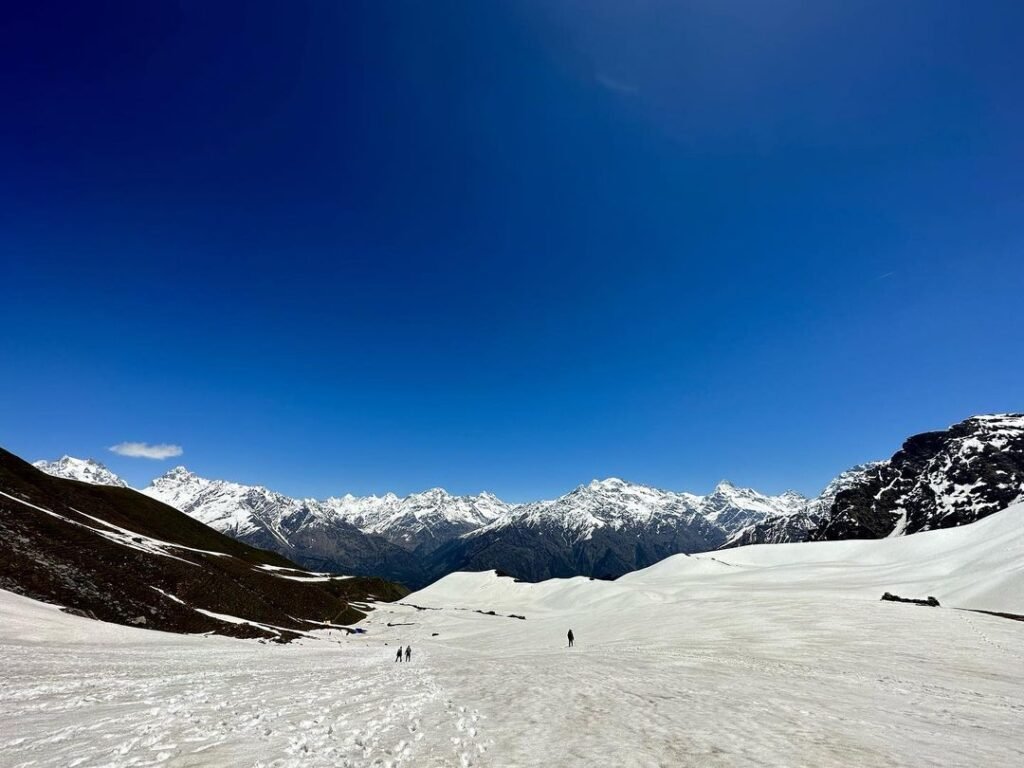
The Sar Pass Trek is a popular Himalayan trek in the Parvati Valley of Himachal Pradesh, India. The distance of the trek is approximately 48 kilometres; this trek offers a thrilling and picturesque adventure for nature lovers and adventure enthusiasts.
The trek begins from the quaint village of Kasol, known for its scenic beauty and serene atmosphere. Trekkers from Kasol traverse through dense pine forests, crossing gushing streams and charming meadows. The trail gradually ascends, leading trekkers to higher altitudes.
One of the highlights of the trek is the crossing of the Sar Pass itself, situated at an altitude of about 4,220 meters. This challenging section requires traversing steep slopes and snow-covered terrain, offering trekkers a sense of accomplishment upon reaching the pass.
The journey also includes mesmerizing views of snow-capped Himalayan peaks, including Sar Pass, Tosh Glacier, and Parvati Valley. Trekkers are treated to breathtaking panoramic vistas throughout the trek, creating unforgettable memories.
Depending on the chosen itinerary, the trek usually takes 5-6 days to complete. Campsites along the route provide a tranquil setting for trekkers to rest, enjoy bonfires, and soak in the beauty of the surroundings.
With its stunning landscapes, thrilling challenges, and a glimpse into the local culture, the trek is a remarkable adventure that allows trekkers to immerse themselves in the natural beauty of the Himalayas.
- Max Altitude: 13,800 Ft.
- Average Trekking Fees: INR 7000 – INR 12,000 + GST (Per Person)
- Distance: 48 – 50 kms
- Difficulty: Moderate
- Duration: 5-6 days
- Ideal For: Experienced Trekkers
- Best Season: April – June
- Region: Himachal Pradesh
Additional Information of the Sar Pass Trek
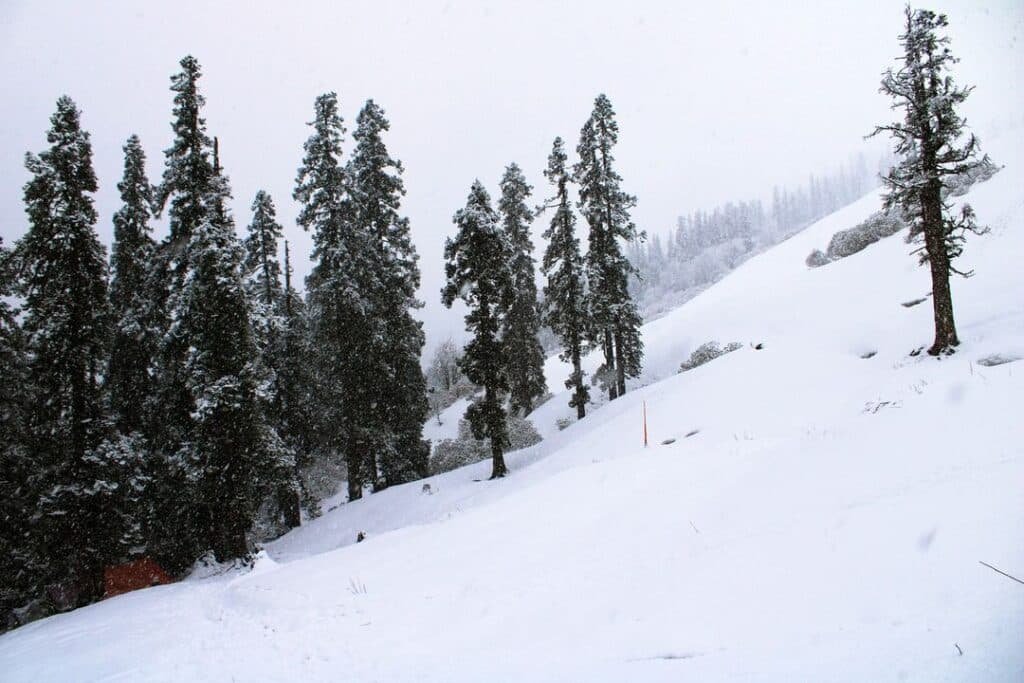
Trek Distance
The Sar Pass Trek covers a total distance of approximately 48 kilometres (30 miles) . It is usually completed over 5-6 days, depending on the pace and acclimatization of the trekkers. Each day’s distance varies, ranging from 6 to 12 kilometres (4 to 7.5 miles) , offering a perfect balance of trekking challenges and exploration.
Best Time to Do Sar Pass Trek
The best time to embark on the trek is from May to June and September to October . During these months, the weather conditions are relatively stable, with clear skies and comfortable temperatures. The summer months of May and June provide pleasant trekking conditions with moderate temperatures, while September and October offer the enchanting beauty of autumn colours.
Difficulty Level
The trek is rated as a moderate trek in terms of difficulty . It presents a reasonable challenge to trekkers, requiring good physical fitness and stamina. The trail involves steep ascents and descents, traversing through snow patches and rocky terrains. Prior trekking experience is not mandatory, but it is recommended to have basic fitness and endurance training before attempting this trek.
Acclimatization and Fitness Preparation
Acclimatization is crucial while trekking in high-altitude regions to prevent altitude sickness. Before starting the trek, spending a day in Kasol or nearby villages is recommended to acclimatize to the elevation. Engaging in light activities and staying hydrated during this period will help your body adjust to the changing altitude.
Preparing physically for the trek is advisable by engaging in regular exercises such as jogging, cycling, or swimming. Building stamina through cardio workouts and leg-strengthening exercises will greatly enhance your trekking experience.
Costing & Budget for the Sar Pass Trek
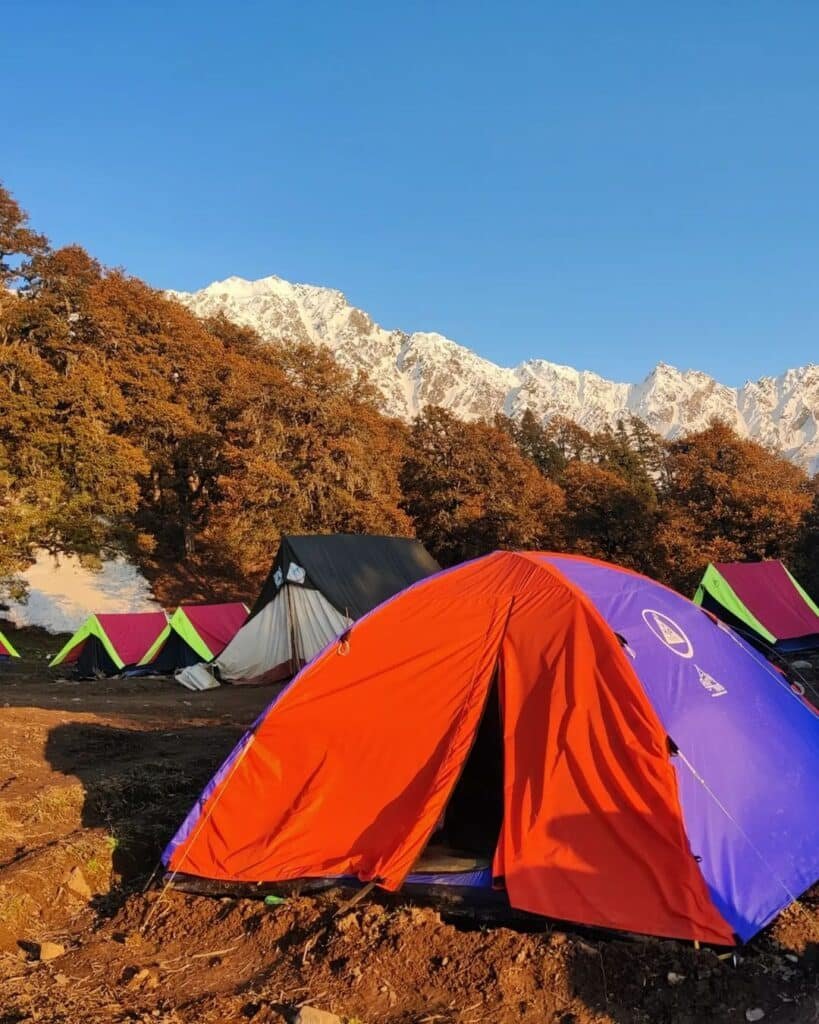
When planning for the trek, it is important to consider the cost and budgeting aspects to ensure a smooth and enjoyable experience. Here are some key factors to keep in mind:
Trekking Packages: Various trekking agencies and tour operators offer packages for the trek. These packages typically include transportation, accommodation, meals, trekking permits, and a guide. The cost of these packages can vary depending on the inclusions, duration of the trek, and the operator’s reputation. It is advisable to compare prices and read reviews before choosing a package.
Average Trekking Fees Charged By Organisations: INR 7000 – INR 12000.
Travel Expenses: Apart from the trekking package, you must consider travel expenses to reach the base camp. Kasol is usually the starting point for the trek, and you may need to budget for transportation from your place of origin to Kasol. This can include bus or taxi fares.
Equipment and Gear: Ensure you have appropriate trekking gear, such as sturdy hiking boots, warm clothing, a backpack, a sleeping bag, trekking poles, and other essentials. If you don’t already own these items, factor in the cost of purchasing or renting them.
Food and Water: Most trekking packages include meals during the trek, but carrying some extra snacks and energy bars is a good idea. Additionally, budget for bottled water or water purification tablets to ensure a safe drinking supply.
Miscellaneous Expenses: It’s advisable to set aside a small amount for unexpected expenses or emergencies during the trek, such as additional meals, medical supplies, or extra days if the weather conditions pose challenges.
In conclusion, the total cost of the trek depends on various factors, including the trekking package, travel expenses, equipment, food, and miscellaneous expenses. Planning ahead, researching prices, and allocating a reasonable budget for a comfortable and memorable trekking experience are recommended.
How to Reach Kasol?

The starting point of the trek is typically in the village of Kasol, which is well-connected to major cities in India. Here are the common modes of transportation to reach Kasol:
By Air : The nearest airport to Kasol is Bhuntar Airport, approximately 31 kilometres away. Regular flights operate from major cities like Delhi and Chandigarh to Bhuntar. You can hire a taxi or take a bus from the airport to reach Kasol.
By Road: Kasol is well-connected and can be reached by bus or private taxi. Regular buses operate from Delhi, Chandigarh, and other major cities to Bhuntar or Manali. You can take a local bus or hire a taxi to reach Kasol. The road journey offers scenic views of the mountains and valleys.
By Train : The nearest railway station to Kasol is Joginder Nagar Railway Station, approximately 144 kilometres away. However, it is a narrow-gauge railway station, and not all trains connect directly to Joginder Nagar. An alternative option is to take a train to Chandigarh or Pathankot and then continue the journey by road via bus or taxi.
Once you reach Kasol, you can start the trek from there. Reaching Kasol a day before the trek is advisable to rest and acclimate to the altitude. You can find local transport options like shared cabs or hire a local guide to reach the exact starting point of the trek within Kasol.
Detailed Itinerary of Sar Pass Trek
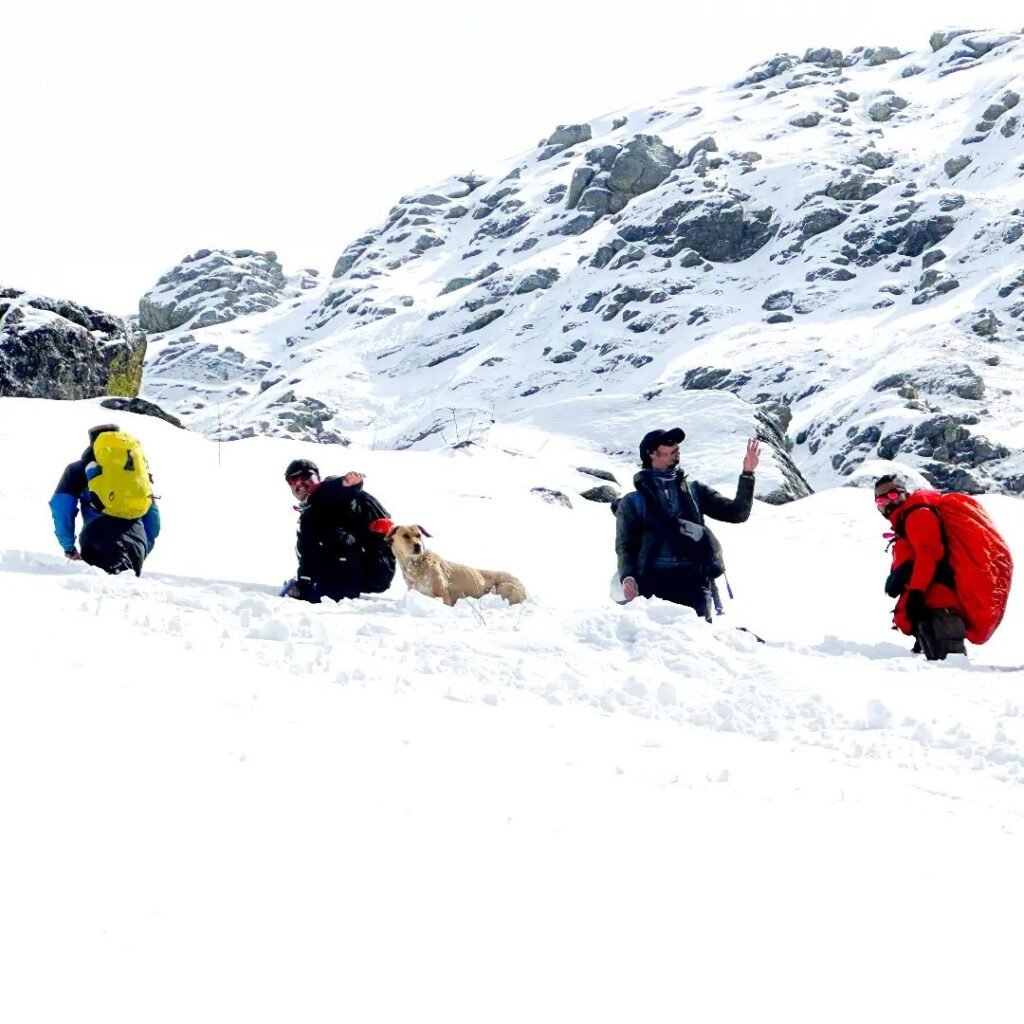
Here is a day-by-day breakdown of the trek itinerary:
Day 1: Arrival in Kasol
- Arrive in Kasol, a picturesque village nestled in the Parvati Valley.
- Explore the local markets and immerse yourself in the serene surroundings.
- Attend a briefing session by the trek leaders and get acquainted with fellow trekkers.
Day 2: Trek from Kasol to Grahan Village
- Start from Kasol, crossing the Parvati River and ascending through dense forests.
- Reach Grahan Village, a quaint Himalayan village known for its traditional architecture.
- Camp overnight in Grahan Village, surrounded by towering mountains and starry skies.
Day 3: Trek from Grahan Village to Min Thach
- Begin the day’s trek, passing through scenic meadows and blooming rhododendron forests.
- Ascend towards Min Thach, enjoying panoramic views of the valley and snow-capped peaks.
- Set up camps at Min Thach, relishing the tranquillity of the pristine surroundings.
Day 4: Trek from Min Thach to Nagaru
- Embark on a steep ascent from Min Thach to Nagaru, reaching an altitude of approximately 3,700 meters (12,100 feet).
- Experience the thrill of crossing snow patches and witnessing the mesmerizing landscape unfold.
- Camp overnight at Nagaru, with the starlit sky above and the grandeur of the mountains surrounding you.
Day 5: Summit Day – Trek from Nagaru to Biskeri Thach via Sar Pass
- Start early for the challenging trek to Sar Pass, about 4,220 meters (13,845 feet).
- Traverse through snowfields and conquer the past, experiencing a sense of accomplishment and awe-inspiring views.
- Descend towards Biskeri Thach, where you will camp amidst picturesque meadows and stunning vistas.
Day 6: Trek from Biskeri Thach to Barshaini and Return to Kasol
- Descend from Biskeri Thach through thick forests and charming trails.
- Reach Barshaini, where the trek concludes.
- Board a vehicle from Barshaini to Kasol and celebrate the successful completion of your trek.
Please Note: This is a general itinerary, followed by most of the trekking groups in India. However, there might be slight differences in the itinerary depending on the trekking group you opt to go with.
Highlights of the Sar Pass Trek

The trek offers a multitude of breathtaking highlights that make it a must-visit destination for adventure enthusiasts. Here are some of the key highlights of the trek:
- Majestic Mountain Views: Trekkers are treated to awe-inspiring views of the mighty Himalayan peaks throughout the trek. The panoramic vistas of snow capped mountains, including Sar Pass, Tosh Glacier, and Parvati Valley, create a stunning backdrop and leave trekkers spellbound.
- Dense Pine Forests: The trek takes you through dense pine forests that exude a tranquil atmosphere. Walking amidst the towering pine trees provides a refreshing experience and a respite from bustling city life.
- Picturesque Campsites: The trek presents picturesque campsites nestled amidst nature’s bounty. These campsites, situated near gurgling streams and lush meadows, provide a perfect setting for trekkers to unwind, enjoy bonfires, and soak in the peaceful ambience of the surroundings.
- Challenging Pass Crossing: Crossing the Sar Pass is a trek highlight. With an elevation of around 4,220 meters, it offers a thrilling adventure as trekkers navigate steep slopes and snow-covered trails. The sense of achievement upon reaching the pass is unparalleled.
- Frozen Lake and Snowfields: During certain months, trekkers can witness a frozen lake and traverse snowfields along the trek. The pristine beauty of the frozen lake and the glistening white snowfields create a surreal experience, adding to the charm of the trek.
- Local Culture and Hospitality: Interacting with the friendly locals along the trek route provides a glimpse into the unique culture and lifestyle of the region. Trekkers can engage with the warm-hearted villagers, savour local cuisine, and learn about the traditions and customs of the area.
Overall, the Sar Pass Trek offers a perfect blend of natural beauty, adventure, and cultural experiences, making it a memorable journey for trekkers seeking to explore the enchanting landscapes of the Himalayas.
Safety Tips & Precautions
While embarking on any trek, safety should always be a top priority. Here are some essential safety tips to keep in mind during the Sar Pass Trek:
- Trek with an experienced guide and follow their instructions.
- Stay hydrated and carry an adequate supply of water.
- Pack light and carry only the essential items.
- Dress in layers to adapt to changing weather conditions.
- Respect the environment and maintain cleanliness.
- Inform someone about your trekking plans and expected return.
- Stay updated about weather conditions and local regulations.
- Avoid alcohol and smoking during the trek.
Unlock the Adventure: Subscribe Now for Exclusive Deals, Insider Tips, and Epic Trekking Guides Delivered to Your Inbox!
Essential Gear and Equipment for Sar Pass Trek
Before embarking on the trek, it is essential to pack the right gear and equipment to ensure a safe and comfortable journey. Here is a list of items you should consider carrying:
- Good quality Trekking shoes with good ankle support
- Backpack with rain cover
- Trekking gaiters
- Warm and waterproof clothing layers
- Sleeping bag suitable for sub-zero temperatures
- Trekking poles for better stability on uneven terrains
- UV-protected sunglasses and sunscreen
- Water bottles and water purification tablets
- Headlamp or flashlight with extra batteries
- First aid kit with essential medications
- Portable power bank for charging electronic devices
The Sar Pass Trek is a thrilling adventure that takes you through the pristine beauty of the Himalayas. With its easy to moderate difficulty level, mesmerizing landscapes, and the joy of conquering Sar Pass, this trek offers an experience of a lifetime. So, pack your bags, prepare yourself physically, and get ready to embark on this unforgettable journey in the lap of nature.
The Sar Pass trek is moderately difficult and suitable for experienced trekkers due to steep ascents, rocky terrain, and changing weather conditions.
Sar Pass trek is in the Parvati Valley of Himachal Pradesh, India and the start point of the trek is Kasol.
The trek from Kasol to Sar Pass covers a distance of approximately 48 kilometres.
There can be snow on the Sar Pass trek in June, particularly at higher altitudes. It is advisable to be prepared for snowy conditions and carry appropriate gear.
Kuari Pass , Bhrigu Lake , Brahmatal Trek , Shrikhand Mahadev Trek , Buran Ghati Trek , Bali Pass Trek , Kareri Lake Trek , Rupin Pass , Tarsar Marsar Trek
- trekking guides
- No comments yet.
Add a comment
Leave a reply · cancel reply.
Your email address will not be published. Required fields are marked *
This site uses Akismet to reduce spam. Learn how your comment data is processed .
- Share via...
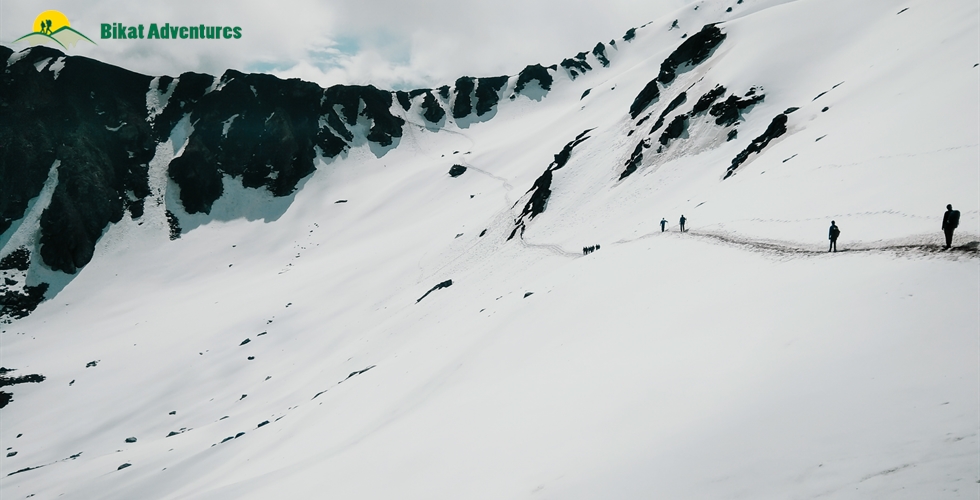
Sar Pass Trek
For all adventure souls who like snow and high mountains
Available Batches
Brief description.
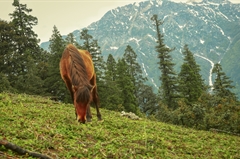
Brief Itinerary
Detailed itinerary.
Arrive at Kasol (1,580M) and trek to Grahan (2,300M)
Distance: 8 kms trek
Duration: 5 hours
We assemble at Kasol market by 09:30 AM. Keep enough buffer time in your hand to reach Kasol; these roads are prone to jams and delays. If possible, get here a night before so that your day doesn’t feel too packed and rushed.
From the busy market, we turn a corner and reach the forest which is the starting point of the trek. Here, we do our briefing and distribute your rental + equipment. Packed lunch will be provided, too. There are enough water sources on the way today. We start our trek on the right side of a stream of glacial water which is going to be our companion throughout the day. Once in the forest, the temperature instantly drops by 5 degrees.
You will find small dhabas along the way which serve Maggi, rhododendron juice, biscuits and chai. The first six kilometres of today’s trail is a motorable road but with splashes of green everywhere. The last 2 kms is when we start to ascend on a walking trail to get to Grahan village. The first 6 kms should take us close to 3-4 hours to cover. And the last 2 kms of steep section with a 300M ascent should take us between 1-2 hours.
Expect to reach the homestay between 2 and 3 PM. Settle in and wait for the sunset magic to begin!
Grahan (2,300M) to Min Thatch (3,285M)
Distance: 4 kms
The ascent today is quite massive – close to a 1000M in a short distance of 4 kms. Remember to pace yourself and take it slow to avoid getting sick. We are walking through forests so thick, that you will see the sunlight visibly struggling to make its way to you. Spider webs gleam in the sparse sunlight like holograms. There are no water sources today, carry at least 2l of water with you as you start.
We leave after breakfast at 9 AM. Once we cross the village, we descend for a short while from where we cross a small wooden bridge to get to the other side of the Grahan nalla – it is now all uphill from here. There is a dirt path leading us to Min Thatch. On the rocky, uneven ground, stones and the thick roots of the trees act as makeshift stairs – remember to exercise caution at every step.
At the mark of 1 km, after an ascent of 180M, we reach a small clearing – a patch of almost flat land which is a welcome change. A kilometre and a half more from here, after an ascent of 450M, we reach a dhaba . Packed lunch is provided for today. You can also choose to indulge in some Maggi and omelettes at the dhaba . The food here tends to be a bit on the expensive side – check for prices before you order.
We have half way more to go after this lunch point. The route is on similar terrain. In 2 more hours, we reach a massive meadow with a carpet of the brightest purple wildflowers you ever saw. This is Min Thatch ( thatch meaning meadows), our campsite for today, bordered by thick forests and rhododendron bushes to your right and a wide view of the valley and the skies to the left. The sunsets from here are glorious.
Min Thatch (3,285M) to Nagaru (3,850M)
Distance: 3 kms
Duration: 3 hours
Today we are heading to the highest campsite of the Sar Pass Trek, Nagaru. We leave by 9 AM. After a 20M ascent, there’s a short patch of flat land. From here on, it is a steep uphill walk. Once we leave the campsite, we quickly cross through the end of treeline on this trek – enjoy the shade while you can because after the first 10 minutes, we are exposing ourselves to the full force of the sun and the winds. After 300M of ascent, we hit the first dhaba for today – this one serves Siddhu (a local Himachali delicacy) in addition to the regulars! We have packed lunch for today as well, but feel free to indulge in some mid-mountain hospitality. Shortly after the dhaba , we reach a section called ‘the rope point’. When there is ample snow, this 70 degrees steep section gets very slippery and very dangerous. We set up ropes at this point as a climbing aid and safety measure. When the landscape is dry, it can be crossed without ropes. After this ascent, follow the rhododendron bushes to stay on trail. After a continuous ascent of 450M, we reach a clearing. You can see the campsite from here. There are only some slippery slopes of ice between you and the safety of your tent now.
The trek today is short but difficult because of the steep ascents. Depending on the season, the trail may be covered in snow or be barren. The campsite at Nagaru has snow at all times. Since it is a wide-open clearing, the winds here can get menacing, hold on to your tents at night! Views of endless rows of snowclad mountains of the Parvati range grace this campsite – the sunsets here are exceptional. The Pass from here is so close, you can see it from your tents!
Nagaru (3,850M) to Biskeri Thatch (3,400M) vis Sar Pass (4,223M)
Distance: 8 kms
Duration: 10 hours
Today is the day we reach the Pass we had been admiring since last evening. Even though it looks close, it takes 2-3 hours to get to. The distance is close to 1 km with a 300M gain in altitude. If we hope to catch the sunrise from the top, we leave by 3 AM and start the climb in darkness – expedition style! Get your head torch ready, put on your gaiters and microspikes and be ready by 02:30 AM. We fill our bottles, have some breakfast under the stars and leave. The 2-3 hour ascent is in snow, it is an uphill climb which is quite steep. Take it slow but keep moving to avoid your body from getting cold. We make it to the top of the Pass just as the peaks of Parvati Valley start to take on a golden hue. There’s nothing like the alpenglow of dawn to get the best photos of this wide landscape. In this world of white, take some time to look over and identify some popular peaks. We leave after spending an hour at the top.
The main challenge of the day is the long descent to Biskeri Thatch, our campsite for today. After we cross the massive snow field that is Sar Pass, we descend down for a bit. The path takes us horizontally across the mountain on quite an angled slope. There is one more steep ascent left for the day – the one to Biskeri Top that is almost at the same height as the Pass. After we make our descent and traverse across mountains on a narrow path, we make the steep ascent over slippery terrain all the way to Biskeri Top. This half a kilometre of stretch will only take about 15 minutes to cover but it will definitely knock the air out of us! Once at the top, it is only downhill from here. When it is snowy, we can slide down and save our legs some effort but when the snow has receded, we have to walk down this long slope.
At 4.5 kms, we reach the last dhaba on our trail. From here the route gets easier. Thick with rhododendrons, it is a pleasant walk all the way to Biskeri Thatch. It is a campsite amongst tall trees and singing birds – our last night in tents. The snow-clad mountains give way to jagged, rocky peaks. Welcome to warmth!
Biskeri Thatch (3,400M) to Barshaini (2,210M) and drive back to Kasol (1,580M)
Distance: 5 kms
Today is our last day on the Sar Pass trek. The trail is all downhill through pine forests. The descent is easy towards Pulga and across Parvati River to reach the village of Barshaini. Our team will be waiting at Barshaini to drive you to Kasol. It is a two hour drive - expect to reach Kasol by late afternoon. Plan your journey ahead accordingly.
What's Included
- Veg Food (Day 1 Lunch till Day 5 Breakfast). Three Meals a day.
- Forest Permits/Camping Charges/Permits, Trek Permit Fee/IMF Permission (Upto the amount charged for Indian nationals).
- Camping tents, Temp rated sleeping bags, mattress
- Safety Equipment includes static rescue rope, seat harness, carabiners, pulleys
- Mountaineering course certified Trek Leader with Wilderness Emergency Responder & Rescue.
- First Aid Certified Local guide, cook, helpers
- Porters or mules for carrying common luggage
- Last day transportation from Barshaini to Kasol
What's Not Included
- Meals during road journeys
- Any kind of Insurance
- Any expense of personal nature
- Carriage of personal rucksack
- Meals during Hotel Stay
- Any expense not specified in the inclusion list
Are you Eligible for this Adventure?
Max Altitude

BRS Level Required
Sar Pass Trek is a level 4 adventure on the Bikat Rating Scale.
Although fairly easy, any kind of activity in high altitude requires a certain level of physical fitness and endurance for it to be a pleasant experience.
If you do not know what level of BRS trek would suit you best, worry not! Fill out this Form:

we will send you a progression chart to help you comfortably get out of your comfort zone in order to level up and ultimately reach your highest potential in the big, bad world of outdoor adventure.
Packing List
This is a list of essential items for individuals doing the trek with Bikat Adventures. This list contains only those items which the participants are required to bring with them. The list excludes those items which are provided by Bikat Adventures on the trek. We have divided the items into five categories. All the items in the list are essential except for those marked as optional.
Trekking Gear
- Ruck sack bag with rain cover. Qty -1
- Day Pack Bag - Recommended for treks with summit day
- Head Torch with spare Batteries. Qty -1
- U V protection sunglasses. Qty -1 Here is how you can choose the best sunglasses for trekking.
- Water Bottles: 2 bottles of 1 liter each
- Non-skid, deep treaded, high-ankle trekking shoes Qty -1
- Pair of light weight Slipper/Sandals Qty -1
- Quick Dry Warm lower or Track Pants. Qty - 2
- Full sleeves T-shirts/ Sweatshirts. 1 for every 2 days of trekking
- Pair of thick woolen socks. 1 pair for every two days of trekking
- Thermal Body warmer Upper & Lower. Qty-1
- Undergarments. Qty - 1 for every day of trekking
- Warm jacket closed at wrist & neck .Qty-1
- Full sleeves sweater. Qty -1
- Rain wear ( Jacket & Pants ) . Qty-1
- Pair of waterproof, warm gloves. Qty-1
- Woolen cap. Qty-1
- Sun shielding Hat. Qty -1
- Personal toiletries kit (Small Towel, Toilet paper, paper soap, Bar soap, toothbrush, toothpaste, cold cream, etc.)
- Sun screen lotion small pack. Qty -1 Here is your Sun Protection 101 to stay safe in the bright sunny outdoors.
- Lip Balm small pack. Qty-1
- Small size, Light weight & Leak proof lunch box. Qty-1
- Plate. Qty- 1
- Spoon.Qty-1
- Tea/Coffee (plastic) Mug.Qty-1
Miscellaneous
- Camera (Optional)
- Carry your medicines in plenty in case you have any specific ailment. Consult your doctor before joining the trek.
- Dry fruits, Nuts, Chocolate bars (Optional)
Frequently Asked Questions
Eligibility, is this adventure good for me, what’s a good fitness benchmark for this adventure, what skills do i need to complete this adventure, what is the minimum and maximum age limit, about the activity, where is it located, what are some of its highlights, what are some of its challenges, what is the best season for this, what is the accommodation type, what is the temperature like here, is it technically challenging, connectivity, how do i reach the starting point, is there cellular network available throughout, where is the nearest atm, if i choose to travel to the base with you, what is the pick-up point, what time is the drop-off on the last day, what are the nearby attractions that i can explore, equipment & gear, what equipment is provided to us, what can i rent from you, where will i receive the rented items, where do i have to return the rented items, what gear do i need to bring, are there local shops to rent/buy equipment, facilities & additional services, can i offload my bag, can i leave any extra luggage i carry at the base of this adventure, what are the meals like, what are the washroom/ toilet facilities like, what should i do if i get my period on this adventure, what are the medical facilities available to me on this adventure, are there any electricity charging points on this adventure, mandatory documents, what documents do i need to carry, do i need insurance for this, do i need a permit for this, certification, do you provide a certificate of completion, when and how will i get the certificate of completion, international travel, will i need a visa, when should i apply for the visa, what kinds of insurance do i need to travel here, what is the specialty of this when compared to other mountain ranges, till which month can i make a booking for this, what is the qualification of the outdoor leader provided to us, how do you choose your outdoor leaders, is it safe for women, what is the ratio of outdoor leader to participants, what do you do in case of an emergency, what are the rescue options on this adventure, how do you choose your equipment, can i attempt this adventure if i have a specific medical condition, sustainability, what kind of camping do you practice on your outdoor adventures, why are you against fixed camping in the outdoors, how do you manage overcrowding on certain trails, what are some things to remember when using a dry toilet, why should i avoid wet wipes in the outdoors, where should i dispose of my sanitary waste if i am on my period, why should i carry my own utensils on an outdoor adventure, booking process, what happens after i make the payment, do you create a whatsapp group of participants before the start date of the activity, do i need to submit a medical certificate, do i need to submit an undertaking form.
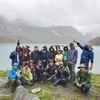
Small Group Size
Our batch sizes are capped at 15 for smaller treks with the trek leader and trekker ratio of 1:8. This ratio, in our years of experience, has proven to deliver the best trekking experience for individuals as well as groups. Capping the size of the group ensures individual attention to each trekker so that no signs of distress or need during the trek go unnoticed. It also helps to form a more cohesive cohort with better group energy which helps define the rhythm and pace of days on the trek. As you go higher up on the BRS scale, since the stakes are higher, expeditions have an even smaller group size with the ratio of expedition leader to climber set at 1:2.
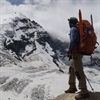
Qualified Trek Leaders
We follow a rigorous regime of hiring and training our experts in the field. Each trek leader is a certified mountaineer with years of experience in the field. In addition to their qualification, they also go through practical and situational training to tackle any and all kinds of sudden conditions that may present themselves on the ground. Being unpredictable is the core nature of the mountains but being ready for any circumstance as best as possible is a controllable asset that we try to nurture. Our field experts are also trained in basic medicine and first-aid response. Watch: Forerunners - The Making of A Trek Leader At Bikat Adventures
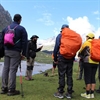
Guided Progression
Since Bikat Adventures is a learning-based organization, we help you climb up the ladder of difficulty within the sphere of outdoor adventure systematically. Our on-ground training modules are designed to handhold you through the upskilling process so that you are ready to take on bigger challenges.
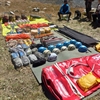
Equipment Quality and Check
All the gear used on our treks and expeditions is tried and tested, maintained for good quality, and is overall top-notch in quality and condition. We are continually looking to obtain the best of everything there is in the market so as to ensure optimum safety.
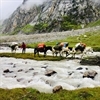
Support Systems
Along with the staff you see on-ground, we have a team of superheroes working in the background to give you the best experience possible. Our background team also comprises local staff from each area who know the region best. Having local support helps with studying the area, pre-planning, execution, and in receiving timely support in case of emergencies in these remote locations.
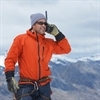
Communication
Our on-field staff is in constant contact with our teams based in primary locations so as to eliminate any avoidable delay in reaching additional help and support when required. We try to use the best tools for communication available, including satellite phones, in regions where they are not restricted.
What our customers Say

Cancellation Policy
Cash refund
Cancellations up to 30 days prior to departure date
5% deduction
Cancellations between 30 days to 15 days prior to departure date
50% deduction
Cancellations within 15 days prior to departure date
Voucher refund
Cancellations up to 5 days prior to departure date
No Deduction
Cancellations within 5 days prior to departure date
- Cash refund is applicable only in case of bookings made without using any promotional offer code or vouchers
- This is only a brief of cancellation terms. For finer details please refer Detailed Cancellation Policy.
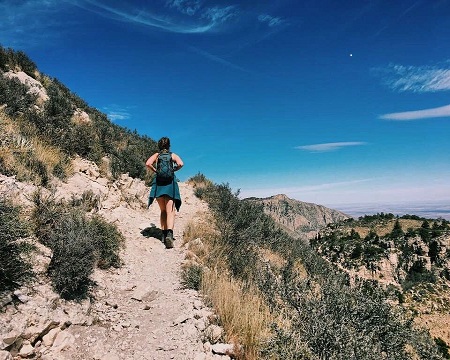
Subscribe for latest updates & offers
Similar adventures.
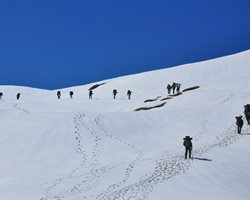
Panwali Kantha Trek
Uttarakhand
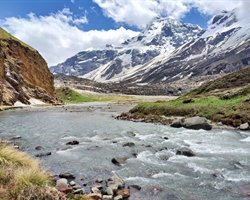
Dev Kyara Trek
Hidden gem of uttarakhand.
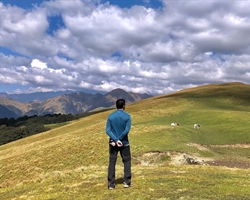
Ali Bedni Bugyal Trek
The next chapter of roopkund, enter your email, events by categories.

Mountaineering

Scuba Diving
Events by months.
- January July
- February August
- March September
- April October
- May November
- June December
Events By Nights
- 5 & More Night
- Environmental Policy
- Privacy Policy
- Term & Conditions
- Work With Us
- Address: 303, 3rd Floor, Tower B4, Spaze Itech Park, Sector 49. Gurgaon
- Pre Sale - 7838148127 , Post Sale - 8588878499, 9667639126
Bikat Adventures
- Cancellation & Refunds
- Content Sharing
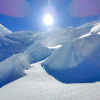
© 2024 Bikat Adventures - All Rights Reserved
Powered by: novel knett software solutions, submit enquiry.

- +918879421532
- +919869765955
- [email protected]
- Winter Trek
- Summer Treks
- Our Team Members
- Do's & Don'ts

Sar Pass Trek (4182m) 2024
- Best Price Guaranteed
- Instant Confirmation
- Secure & Easy Booking
Region: Parvati Valley

Sar pass is one of the most popular trails in Shivalik range. Sar, in local dialect, means a lake. Sar Pass is a moderately challenging trek in the Parvati Valley of Himachal Pradesh, situated at an altitude of 14000 ft, it can be considered as a great introduction to high altitude trekking. This trek is also very popular amongst Indian trekkers. Sar valley overlooks the beautiful Parvati valley abundant in natural treasure. The valley is surrounded by snow clad mountains, perennial streams, waterfalls, and lush green forests. It is the seventh heaven for any adventurous traveler and nature lovers.
The base camp for Sar pass trek is at Kasol . It is surrounded by snow capped mountains temperate climate and elegant pine forests. It resembles much the beauty of molten gold in the first and last beams of sunlight. It is truly breath taking to watch the sunset or sunrise from this point. Kasol is the base for most of the trekking trails in the Parvati valley. It is also called as the little Israel of India. So Kasol offers a genuine Israeli food and such other cuisines like Indian, Continental etc. Kasol is located near to the Manikaran, a holy pilgrimage for Hindus and Sikhs. Manikaran also has the hot water springs which are known widely. The serene meadows on the way are a sight to see. After driving for about an hour the trail commences. The trail is packed with dense forests, streams, waterfalls and rocky terrain. The trail to the camp is moderate but steep at the end. Camp is at remote village Grahan. It is as picturesque as its predecessors. Grahan is an ancient village with traditional Himalayan houses surrounded by rhododendron trees. The ascent after Grahan is steep and strenuous. Slow and steady pace of walking is advisable as it assures good acclimatization. Minh Thach is the next campsite, where locals used to graze their livestock. Then we reach Nagaru, which is the last camp before reaching Sar pass. It is a freezing site because of the gusty winds and cold nights. After a long and arduous trek, the sight that Sar pass offers seems like an illusion in it’s beauty and spirit. The top of the Sar pass offers a magnificent view of Himalayan Peaks and meadows. The descent down to Bishkeri is moderate through rhododendron forests. Bhishkeri is a striking meadow campsite with multiple flowers and birds species. One can rejuvenate himself by spending a night at this place. From Bishkeri to Barshaini is a exciting downhill terrain through lush green forests. On the way twin villages Pulga and Tulga will pass by. Then cross the river Parvati and climb for a while till road head at Barshaini. Take bus or taxi to Manikaran. From here depart to your preferred locations.
Trekking, after all, is about the joy of solitude and silence, as much as it is about forming everlasting friendships. If you are interested in doing this trek, minus the fanfare of fixed departures, you can book with one of the local operators in the Great Wide Open Adventure Travel Network and cross the Sar Pass , with just your own friends for company. The trail is accessible between April to October every year.
How To Reach Manali
Distance by road:-
Manali is well connected to Delhi. Take an overnight bus from Delhi and you will reach Manali in 12 ‐ 14 hours(approx 540 km's). Tickets can be booked online at www.redbus.in or www.hrtc.gov.in Tip : Since Delhi Manali is a long journey most Volvo private buses leave Delhi between 5 pm and 6 pm. The last govt bus leaves at 8.30 pm from ISBT Kashmere Gate. Volvo buses charge between Rs.1,000 to 1,400 per sector from Delhi to Manali and vice versa. Manali to Delhi: Like the onward journey, buses leave from Manali to Delhi between 4 and 5 p.m. Your tentative arrival at Delhi may be anywhere between 6 a.m and 10 a.m. Plan your onward journeys only post noon giving enough buffer for bus delay.
Nearest Railway Station:-
Nearest Railway station is Ambala (350 km's) and Chandigarh (310 km's) Tip: Regular Volvo and Buses are available from Chandigarh to Manali in the evening. Volvo buses charge between Rs.800 to Rs.1,200 per sector from Chandigarh to Manali and vice versa.
Nearest Airport :-
Nearest Airport is Bhuntar, which is 52 km away from Manali, is the nearest airport. Taxi services are available from Bhuntar to Manali, which costs about Rs.1000 ‐ Rs.2,000. Bhuntar is well connected to Delhi by air. Check the operating flights to Kullu as due to weather conditions flights gets cancelled.
Fix Departure tariff 5,900/- + GST of 5%
Rates are excluding GST of 5%
Note that the cost would vary for customized group according to their requirements
Trek Schedule:
Detailed Itinerary
Day 1: Kasol - Grahan village 1700m - 2350m (7- 8km. trek) (5-6hrs.)
8:00 AM Reporting at early morning get fresh n up and get ready for the trek .
8:15 AM - Short Briefing and Luggage deposit.
9:00 AM - Move from Kasol. It will take approximately 10 minutes to reach the trek trail.
The trekking will start from Kasol to Grahan village. First drive on road till the trail starts. The trail leading upto the village is frequently used by the locals and you might found villagers passing by. The trail leads through lush green dense forest, streams and waterfalls. The trail is easy at initial. Soon the gradient transforms into rocky and steep after crossing the Grahan Nallah. As we get closer to the Grahan Village the trail becomes pretty steep for a while and the village is visible. The campsite at Grahan is located near to the village and is surrounded by the Rhododendron trees. Grahan village is as ancient as hundreds of years. One can charm traditional houses beautiful evenings and take pics of the locals near the camp. The beauty at the camp becomes more comfortable and scenic as one gets acquainted, this camp is heaven for photographers, artists and nature lovers. Spend the night at serene campsite. Meals : All meals provided except breakfast.
Day 2: Grahan - Min Thach 2350m - 3400m (6 - 7hrs) ( Approx 7- 8kms)
Today we trek about 6 to 7 hours to Min Thach. The trail to Min Thach is usually used by the locals to take their livestock to higher pastures. The trail offers great range of flora and fauna birds, insects etc. As we go higher the trail becomes steeper and leads into the woods. On the way we stop at amazing lunch point in between the forest at Ratapani. The mesmerizing thick canopy can be witnessed while passing through the dense forest. The trail through the forest eventually opens up to a grassy patch of land. After that the forest will vanish slowly and open grounds and valleys are visible. One can admire the snow capped mountains and valley below. Before approaching to the camp we have to climb a steep section. The Min Thach is located on the hillock and is surrounded by the flat rocks. The sunset and sunrises at this camp offers great views. One can also cherish gazing stars and milky way at night. Meals : All meals provided.
Day 3: Min Thach - Nagaru 3400m - 3800m (5 - 6hrs. ) (8-9kms)
On this day make an early start to approach Nagaru. The trail today is comparatively steep than the previous route. It will take about 7 hrs. to reach Nagaru. The trail climbs through pastoral forests to snow covered meadows, which makes it little tricky. As you climb higher the air becomes thinner and you might face little altitude sickness such as headache, dizziness. These symtoms are normal reaction of the body. So take as much water and keep your hands, nose, eyes and ears open to acclimatize better. But in any odd situation, we provide all the facilities including the first aid kit, portal oxygen, oxymeter and pulsemeter. While getting closer to the camp chilling winds hits on your face, that realizes one of the altitude gained. The surroundings become more open and broad at these heights (12,500ft.). It is a coldest campsite of the whole trek because of the gusty winds. The temperature can go below zero at nights. Once you reach the campsite at Nagaru one would experience picturesque views of magnificent mountains across the Parvati Valley. Enjoy the sunset painting the sky with different colours and the night full of stars at this beautiful campsite. Meals : All meals provided.
Day 04: Nagaru - Sar Pass - Bishkeri 3800m - 4182m - 3350m (7-9hrs.) (12-13km.)
Again make an early start for a long trekking day. The trail comes with snow and steep tracks on most of the route till the pass and beyond. After climbing the Nagaru ridge, the trail is moderate. On the way there is a canteen near the lake where one can have maggi, tea, coffee etc. Climbing higher to the pass offers mind blowing views of the stunning meadows and towering peaks of Parvati valley. One should walk slow and steady while climbing upwards. Though walking on the snow is easier. As approaching to the top the gradient becomes steeper just few meters below the pass. That’s the only steep part needed to be crossed for the day. Reaching at the top of the pass gives a feeling of satisfaction by looking at the mighty Himalayan snow capped peaks green meadows and the trail below. One can spend some time at the Sar pass having his packed lunch and taking pics. After the pass there is a great slope ideal for sliding which takes one a kilometer far within minutes. Then continue trekking down on gentler slopes through rhododendron trees till the Bishkeri Thach. After a long tiring day the lush green meadows, wildflowers and variety of birds at Bishkeri can rejuvenate your body and mind with energy. We’ll camp for a night at this soothing site. Meals : All meals provided.
Day 05: Bishkeri - Barshaini - Manikaran 3350m - 2400m (4–6hrs) (9-10km.)
The trail from Bishkeri to Barshaini is mixed with downhill to moderate. On this route one has to be careful walking each step on the slope. Again walking slow and steady will help one to approach the roadhead easily. We will climb down through dense forests of deodar oak and pine. Many little streams will pass by the trail. On the way beautiful meadows huge trees, piles of fallen and rotten logs will give a prehistoric feeling. Herds of wild cows, bulls and horses can be seen on lower pastures. One can taste lassi (Buttermilk) sold by the locals while climbing down. Couple of tea shops will pass by, where one can enjoy their preferred food. After hours of mesmerizing forest trek we reach at Pulga village. From there moderate walk to Tulga village. Then cross the Parvati river and climb for a while to reach Barshaini. From Barshaini we will take bus or taxi. Then we reach Manikaran in an hour. Manikaran is a most famous hot spring you can find in Kullu - Manali region. It is also one of the sacred place for Hindus and Sikhs. After Manikaran one can depart for their preferred destinations. Meals : Breakfast/Brunch provided.
After reading through the itineraries, we are sure you want to join the family of Himalayan destination by joining this trek. Good luck!!!
Things to Carry:-
- Trekking Shoes: You need good trekking shoes with good grip & ankle support. Do not carry sport shoes.
- Clothing: You need to have warm clothes with single layer feather/fiber jacket warm, fleece or down feather jacket. Carry 1 or 2 full sleeves t-shirt. For lowers carry cotton pants suitable for trek. Do no carry jeans or shorts for trekking.
- Thermals: Carry top and bottom thermals.
- Socks: 2 pair regular socks and 2 pair woolen / warm socks.
- Headlamps / touch with extra batteries.
- Sunglasses: To protect from sunlight in snow you require UV rays protected sunglasses.
- Woolen Cap and Gloves are also necessary as the climate will be cold. Carry waterproof gloves as they get wet in snow.
- Lunchbox & Water bottle: Every participant should carry Lunch box, water bottle, plates,cup and spoon of their own.
- Raincoat/Ponchos: At high altitudes, snowfall and rain are quite common and it’s mandatory to carry a poncho so that one doesn’t get wet.
- Mandatory Documents:
a) Registration Form
b) Medical Certificate (signed by a registered MBBS doctor)
c) NOC form (by trekker)
What is included in the tour
- Accommodation on sharing basis. Separate for male and female. For twin sharing extra charges will be applicable.
- Transport required in the trek by bus.
- Highly advanced & certified mountaineering guide from Himalaya Destination
- Skilled Guide who has ample knowledge of the route.
- Cloak room to keep extra luggage.
- Vegetarian meals on the trek (Breakfast/Lunch/Dinner). Vegetarian meals only., jain food will be provided.
- Cooks/Helper and other requisite staff.
- Porters/mules for carrying common equipment (like rations/tents/utensils/)
- High quality tents and sleeping bags in all the camps. Sleeping bags can withstand temperature as low as -10 ºC.
- First aid kit, oxygen cylinders, oximeter, medicines etc. will be with guide/trek leader and at camp site as well to deal with emergencies
- All trekking, Forest Permits and camping charges are included.
What is NOT included in the tour
- Personal Porters for carrying trekker’s backpacks
- Personal insurance or cost of emergency evacuation
- Purchases of personal natures (like mineral water bottles/bottled or canned beverages/chocolates/dry fruits etc.)
- Food to/from the trail head and at the 1st base camp.
Where is Sar pass?
What is the difficulty level of the trek, what is the best time to trek sar pass, what documents i have to carry, what are the weather conditions during the trek, what level of fitness is expected from the trekkers, what type of shoes should i buy, can i get a porter or a mule to offload my sack, how much weight do i have to carry, can take or have smokes or liquor on the trek, is this trek safe for females or solo lady trekker, is mountain water drinkable, what kind of food is served, what will be the group size, can i customize the trip, how cold it will be on the trek, who will go with us, how far we will trek each day, can i do calls during the trek, do i have to carry medicines, what if an emergency occurred, can i charge my phone on the trek, what if the trek is cancelled due to natural calamities, can my trek be rescheduled.
- INCLUSIONS/EXCLUSIONS

OTHER POPULAR TOURS

Harihar Fort Trek

Sagargad Fort Trek

Vikatgad Trek
OTHER ACTIVITIES

- Cancellation Policy
- Privacy Policy
- Work with us
MUMBAI ADDRESS
Shop no 4/5, Jaywant Estate, Jangal Mangal Road, Bhattipada Junction. Bhandup (W), Mumbai - 400078
MANALI ADDRESS
Near pnb bank, Village Naggar, Dist and tehsil Kullu, H.P - 175130
LEH ADDRESS
First floor Palace view Guest house near polo ground, Leh - 194101
Online booking system by Vacation Labs | © 2024 Himalayan Destination

Love for snow and high mountains?
Sar pass trek, ₹9999 + 5% gst, june to september, via kasol (4223 m), ₹9999+ 5% gst, kasol to kasol, + rs. 1800 backpack offloading + rs. 757 mandatory insurance, difficulty level - 3, himachal pradesh - 6 days - 50 kms, up to 15% off in may-jun batches for a limited period ✨, june to september 2023.
The Sar Pass Trek is a popular trekking route located in the Parvati Valley of Himachal Pradesh, India. It is considered a moderately challenging trek suitable for both beginners and experienced trekkers. Here's some information about the Sar Pass Trek:
1. Duration: The Sar Pass Trek typically takes around 5 to 6 days to complete. The actual duration may vary depending on factors such as the trekking speed, weather conditions, and the itinerary chosen.
2. Difficulty Level: The Sar Pass Trek is graded as a moderate trek. While it does not require any technical climbing skills, it does involve trekking through steep ascents, traversing snow patches, and walking on uneven terrain. Prior trekking experience and a moderate level of fitness are recommended.
3. Route and Highlights: The trek starts from Kasol, a popular tourist destination, and takes you through beautiful pine forests, meadows, and scenic landscapes. Some of the highlights of the Sar Pass Trek include camping at scenic spots like Grahan, Min Thach, Nagaru, and Biskeri Thach, crossing the Sar Pass (located at an altitude of approximately 4,200 meters or 13,800 feet), and enjoying panoramic views of snow-capped peaks such as Tosh Glacier, Pin Parvati Pass, and the Pir Panjal Range.
4. Best Time to Visit: The best time to undertake the Sar Pass Trek is during the summer months of May to June and the post-monsoon season of September to October. During these periods, the weather is generally favorable with mild temperatures and clear skies. The trek is not recommended during the monsoon season (July and August) due to heavy rainfall and the risk of landslides.
5. Permits and Guide: Trekkers are required to obtain a trekking permit from the Forest Department or the local authorities before embarking on the Sar Pass Trek. It is also advisable to trek with an experienced guide or join organized trekking groups for safety and to enhance the overall trekking experience.
6. Facilities and Accommodation: Along the trek route, basic facilities such as guesthouses, tea houses, and tented accommodations are available at various camping sites. It's important to note that these facilities may vary in terms of amenities, so it's advisable to carry essential supplies and camping equipment such as tents, sleeping bags, and cooking utensils.
The Sar Pass Trek offers a wonderful opportunity to explore the scenic beauty of the Parvati Valley and experience the thrill of high-altitude trekking. It's important to prepare adequately, including physical fitness training, carrying appropriate trekking gear, and being mindful of safety guidelines while on the trek.
Duration: 4-5 days Maximum Altitude: 4,223 meters Difficulty Level: Easy Best Season: June to September
Sar Pass is a breathtaking mountain pass located in the enchanting Parvati Valley of Himachal Pradesh, India. Nestled amidst the majestic Himalayan ranges, Sar Pass offers a mesmerizing trekking experience to adventurers from around the world. This popular trek is renowned for its scenic beauty, diverse landscapes, and a moderate level of difficulty.
At an elevation of approximately 4,220 meters (13,845 feet), Sar Pass presents a challenge that is both exhilarating and rewarding. The trek begins in the quaint village of Kasol, a popular base camp for trekkers. As you embark on this remarkable journey, you leave behind the hustle and bustle of city life and enter a world of serene natural beauty.
The trekking route to Sar Pass covers a distance of about 48 kilometers (30 miles) and takes around 5 to 6 days to complete. The trail meanders through dense pine forests, picturesque meadows, and charming villages, offering a glimpse into the local culture and way of life. As you ascend higher, the landscape transforms, revealing stunning vistas of snow-capped peaks, gushing streams, and alpine meadows adorned with vibrant flowers.
The Sar Pass trek presents a moderate level of difficulty, making it accessible to both beginners and experienced trekkers. While it doesn't require technical climbing skills, it demands a certain level of physical fitness, endurance, and mental resilience. The trail involves steep ascents and descents, crossing rivers and streams, and navigating through snow patches. However, with proper preparation, the Sar Pass trek is well within the reach of trekkers with basic fitness levels and some prior experience.
The best time to undertake the Sar Pass trek is during the summer months of May to June and the post-monsoon season of September to October. During these periods, the weather is generally favorable, with mild temperatures and clear skies. The trail is less affected by heavy rainfall or snowfall, making it safer and more accessible. It's important to note that trekking during the monsoon season (July and August) is not recommended due to the risk of landslides and difficult trail conditions.
As you embark on the Sar Pass trek, you are greeted by a mesmerizing landscape at every turn. The trail takes you through dense forests of deodar, pine, and oak trees, providing shade and a refreshing ambiance. The sound of gurgling streams and the chirping of birds accompany you on your journey, creating a serene and tranquil environment.
One of the highlights of the Sar Pass trek is reaching the Sar Pass itself. As you ascend to the pass, you are welcomed by panoramic views of the surrounding Himalayan peaks, including the mighty Parvati Valley. The sight of the snow-covered landscape and the sense of achievement upon reaching the pass make for a truly unforgettable experience.
Throughout the trek, you have the opportunity to interact with the warm and hospitable locals who inhabit the villages along the route. Their simple way of life and rich cultural heritage add a unique charm to the trekking experience. Camping at night under the starlit sky, sharing stories and laughter around a bonfire, and enjoying delicious local cuisine are moments that create lasting memories.
While the Sar Pass trek is a remarkable adventure, it is important to prioritize safety and responsible trekking practices. It is recommended to trek with an experienced guide or join organized trekking groups that ensure proper guidance, safety measures, and support. Carrying essential trekking gear, such as sturdy trekking shoes, warm clothing, a waterproof backpack, a tent, and sleeping bags, is crucial for a comfortable and enjoyable experience.
Itinerary of Bara Bhangal Trek
The Sar Pass trek is a 5-6 day adventure that takes you through the mesmerizing landscapes of the Parvati Valley in Himachal Pradesh, India. Here is a detailed itinerary for the Sar Pass trek:
Day 1: Arrival in Kasol
On Day 1 of the Sar Pass trek, you will arrive in Kasol, which serves as the starting point of the trek. Here's what you can expect on this day:
- Arrival in Kasol: Reach Kasol, a small village nestled in the Parvati Valley, either by road or by taking a bus from nearby towns like Bhuntar or Manali. Kasol is known for its scenic beauty and serene atmosphere, attracting backpackers and nature enthusiasts from all over.
- Acclimatization: Spend the day in Kasol to acclimatize to the altitude, especially if you have arrived from lower elevations. It's essential to give your body time to adjust to the altitude to minimize the risk of altitude sickness. You can take a leisurely stroll around Kasol, explore the local market, and soak in the stunning views of the surrounding mountains.
- Accommodation: Check-in at a guesthouse or campsite in Kasol where you will spend the night. Kasol offers a range of accommodation options catering to different budgets and preferences.
- Relaxation and Preparation: Use this time to relax, rejuvenate, and prepare for the upcoming trek. Ensure that you have all the necessary trekking gear and equipment, such as sturdy trekking shoes, warm clothing, a backpack, and other essentials.
- Orientation and Briefing: If you have joined an organized trekking group, there may be an orientation session or briefing by the trek leaders. They will provide information about the trek, and safety guidelines, and answer any questions or concerns you may have. Pay attention to the instructions given to ensure a smooth and enjoyable trekking experience.
- Rest and Sleep: Get a good night's sleep to ensure you are well-rested and ready for the trekking adventure that awaits you the next day.
Day 1 of the Sar Pass trek in Kasol serves as a transition day, allowing you to acclimatize and prepare yourself physically and mentally for the trek. Take the opportunity to enjoy the serene ambiance of Kasol and recharge for the exciting days ahead.
Day 2: Kasol to Grahan Village
On Day 2 of the Sar Pass trek, you will embark on your journey from Kasol and make your way toward Grahan Village. Here's a detailed overview of what to expect on this day:
- Trek Start: After an early breakfast, gather your belongings, and meet your trekking group or guide. The trek starts with a gradual ascent from Kasol, gradually leaving behind the village and entering the lush green surroundings of the Parvati Valley.
- Pine Forests and Scenic Views: As you trek further, you'll pass through dense pine forests, which provide shade and a refreshing ambiance. Enjoy the fragrance of the pine trees and the soothing sound of nature. The trail offers glimpses of the stunning mountain vistas and panoramic views of the valley.
- River Crossings: During the trek, you may come across streams and rivers that need to be crossed. Depending on the water level, you may use makeshift bridges or step on stones to cross them. Take caution and follow the instructions of your trek leader while crossing the water bodies.
- Villages and Local Culture: En route to Grahan Village, you'll pass through picturesque hamlets and interact with the locals. Immerse yourself in the local culture, observe their traditional way of life, and interact with the friendly villagers. It's a great opportunity to learn about the local customs, traditions, and daily routines.
- Grahan Village: After a few hours of trekking, you will reach Grahan Village, a charming village nestled amidst the mountains. The village is known for its rustic beauty, traditional wooden houses, and terraced fields. Set against the backdrop of snow-capped peaks, Grahan Village offers a peaceful and serene atmosphere.
- Campsite Setup: Upon reaching Grahan Village, set up your campsite for the night. Depending on the trek arrangements, tents may already be set up, or you may need to pitch your own tents. Enjoy the tranquility of the surroundings and soak in the beauty of nature.
- Evening Activities: Spend the evening exploring Grahan Village, interacting with the locals, or simply relaxing at the campsite. Engage in conversations with fellow trekkers, share stories, and enjoy a warm and hearty meal prepared by the trekking team.
- Rest and Sleep: As the day comes to an end, unwind and get some rest. Ensure you have a good night's sleep to recharge for the next day's trek.
Day 2 of the Sar Pass trek takes you from the starting point in Kasol to the picturesque Grahan Village. It offers a blend of natural beauty, cultural experiences, and the joy of trekking through the enchanting Parvati Valley. Embrace the serenity of Grahan Village and prepare for the adventures that lie ahead on this incredible journey.
Day 3: Grahan V illage to Min Thach
On Day 3 of the Sar Pass trek, you will continue your journey from Grahan Village and make your way toward Min Thach. Here's a detailed overview of what to expect on this day:
- Morning in Grahan Village: Wake up early in the morning, breath in the fresh mountain air, and enjoy a hearty breakfast at the campsite. Pack your belongings, ensure you have enough water and snacks for the day, and get ready for another day of trekking.
- Departure from Grahan Village: Bid farewell to the charming Grahan Village as you start your trek towards Min Thach. The trail initially descends before gradually ascending through the enchanting forests and meadows of the Parvati Valley.
- Lush Green Meadows: As you ascend, you'll pass through lush green meadows adorned with colorful flowers, creating a picturesque landscape. Take in the panoramic views of the surrounding mountains and valleys as you make your way through this scenic section of the trek.
- River Crossings: During the trek, you may encounter streams and rivers that need to be crossed. Be prepared to navigate across them using makeshift bridges or by stepping on stones, depending on the water level. Exercise caution and follow the guidance of your trek leader.
- Ascending towards Min Thach: The trail gradually climbs uphill, providing a moderate level of challenge. As you ascend, you'll witness the changing landscape with a mix of forests, meadows, and occasional glimpses of snow-capped peaks in the distance.
- Reaching Min Thach: After a few hours of trekking, you will reach the scenic campsite of Min Thach. Nestled amidst the mountains, Min Thach offers breathtaking views of the surrounding landscapes. Set up your campsite and take some time to relax, soak in the beauty of nature, and rejuvenate for the next day's trek.
- Evening Activities: Spend the evening exploring the campsite surroundings, taking photographs, or simply unwinding amidst nature's tranquility. Engage in conversations with fellow trekkers, share experiences, and relish a warm and nutritious meal prepared by the trekking team.
- Rest and Sleep: As the day comes to an end, rest and recharge for the next day's adventure. Enjoy a peaceful night's sleep in the midst of the mountains, surrounded by the sounds of nature.
Day 3 of the Sar Pass trek takes you from Grahan Village to the beautiful campsite of Min Thach. This leg of the journey offers a m ix of natural beauty, including lush meadows, forests, and the thrill of trekking in the mountains. Embrace the serenity of Min Thach, connect with nature, and prepare for the exciting days ahead on this remarkable trek.
Day 4: Min Th ach to Nagaru
On Day 4 of the Sar Pass trek, you will continue your adventure from Min Thach and make your way towards Nagaru, a high-altitude campsite. Here's a detailed overview of what to expect on this day:
- Morning at Min Thach: Wake up early in the morning to witness the beauty of the sunrise illuminating the surrounding mountains. Enjoy a hearty breakfast at the campsite, pack your belongings, and prepare for the day's trek.
- Ascending to Nagaru: The trail from Min Thach to Nagaru is a challenging and steep ascent. As you trek higher, the terrain becomes rocky and the vegetation becomes sparse. This section of the trek requires stamina and endurance, as well as careful footing.
- Snowfields and Alpine Scenery: As you ascend towards Nagaru, you will start encountering snowfields, especially during the winter months. Traverse through the snow-covered landscapes, taking in the breathtaking alpine scenery and panoramic views of the surrounding peaks.
- Altitude Gain: Nagaru is situated at a significantly higher altitude compared to the previous campsites. The climb can be physically demanding, and it's crucial to maintain a slow and steady pace to acclimatize properly. Listen to your body, take breaks when needed, and stay hydrated throughout the trek.
- Nagaru Campsite: Upon reaching Nagaru, set up your campsite and take some time to rest and relax. The campsite at Nagaru offers awe-inspiring views of the snow-capped mountains and the valley below. Embrace the serenity of the high-altitude surroundings and savor the accomplishment of reaching this point.
- Sunset Views: Nagaru is renowned for its stunning sunset views. As the day draws to a close, find a vantage point to witness the magical hues of the setting sun painting the sky and mountains. Capture this breathtaking sight in your memories and photographs.
- Evening Activities: Spend the evening at the Nagaru campsite, enjoying the camaraderie of fellow trekkers and engaging in conversations. Share stories, and experiences, and marvel at the starry night sky, far away from the hustle and bustle of city life.
- Rest and Sleep: As the night falls, have a warm dinner and rest well in your tents. Ensure you stay warm and cozy, as the temperatures can drop significantly at high altitudes.
Day 4 of the Sar Pass trek takes you from the picturesque Min Thach to the high-altitude campsite of Nagaru. It's a challenging day of trekking that rewards you with stunning snow-covered landscapes and magnificent mountain views. Embrace the spirit of adventure, relish the sense of achievement, and prepare for the next phase of the trek on this unforgettable journey.
Day 5: Nagaru to Biskeri Thach via Sar Pass
On Day 5 of the Sar Pass trek, you will embark on the most thrilling and anticipated part of the journey - crossing the Sar Pass. Here's a detailed overview of what to expect on this day:
- Early Start: Wake up before dawn to ensure an early start for the day's trek. Have a light breakfast and pack your daypack with essentials such as water, snacks, and extra layers of clothing.
- Sar Pass Ascent: The trek from Nagaru to Sar Pass involves a steep climb over snow-covered terrain. You will navigate through narrow trails and ascend gradually, using trekking poles and following the footsteps of your guide. The climb requires physical stamina, mental determination, and careful footing.
- Sar Pass Summit: Reach the summit of Sar Pass, which stands at an altitude of around 13,800 feet. Celebrate this milestone achievement and take a moment to absorb the awe-inspiring panoramic views of the surrounding peaks and valleys. Capture photographs to preserve the memories of this significant accomplishment.
- Descending from Sar Pass: After spending some time at the summit, begin the descent towards Biskeri Thach. The descent can be challenging, as the trail may be slippery due to snow or loose scree. Take it slow and steady, using trekking poles for balance and stability.
- Biskeri Thach Campsite: As you descend, you will reach the scenic campsite of Biskeri Thach. Set amidst lush meadows and surrounded by towering mountains, Biskeri Thach offers a tranquil and picturesque setting. Set up your campsite and enjoy the rest of the day in this serene environment.
- Evening Activities: Spend the evening at Biskeri Thach exploring the surroundings, engaging in conversations with fellow trekkers, and relishing a well-deserved meal. Share stories, laughter, and appreciate the beauty of nature all around you.
- Rest and Sleep: As the day comes to an end, rest and rejuvenate in your tents. Take in the tranquility of the campsite and appreciate the accomplishment of crossing Sar Pass. Ensure you have a good night's sleep to recharge for the remaining days of the trek.
Day 5 of the Sar Pass trek marks the highlight of the journey as you conquer the Sar Pass and make your way to the beautiful campsite of Biskeri Thach. It's a day filled with adventure, breathtaking views, and a sense of triumph. Embrace the spirit of exploration, cherish the memories created, and prepare for the remaining days of this remarkable trekking experience.
Day 6: Biskeri Thach to Barshaini and Departure
On Day 6 of the Sar Pass trek, you will conclude your journey by trekking from Biskeri Thach to Barshaini, the endpoint of the trek. Here's a detailed overview of what to expect on this day:
- Farewell to Biskeri Thach: Wake up in the morning to the beautiful surroundings of Biskeri Thach. Enjoy a hearty breakfast at the campsite, pack your belongings, and bid farewell to this serene mountain haven.
- Descending to Barshaini: Begin your descent from Biskeri Thach towards Barshaini, which is the endpoint of the trek. The trail will take you through lush green forests, meadows, and occasional streams. Take your time to soak in the last views of the mountains and valleys along the way.
- Serene Nature and Local Villages: As you descend, you'll be surrounded by the serene beauty of nature. The trail may pass through small villages where you can catch glimpses of local life and interact with the friendly villagers. Immerse yourself in the local culture and appreciate the simplicity of mountain living.
- Arriving at Barshaini: After several hours of trekking, you will reach Barshaini, a small village located at the confluence of the Parvati and Tosh rivers. Take a moment to celebrate the completion of the Sar Pass trek as you arrive at this picturesque village.
- Farewell and Departure: Once you reach Barshaini, bid farewell to your trekking companions, guides, and support staff who have been part of this incredible journey. Take some time to reflect on the experiences and memories you have created during the trek.
- Exploring Barshaini: If time permits, you can explore the village of Barshaini and its surroundings. You may visit the nearby Tosh village or enjoy a relaxing moment by the riverside. Alternatively, you can head to nearby towns like Kasol or Manikaran to unwind and reflect on your trekking adventure.
- Departure: Arrange for transportation from Barshaini to your next destination. Whether you are heading back to Kasol, Manali, or any other place, plan your departure accordingly. Reflect on the incredible journey you have just completed as you leave the mountains behind.
Day 6 of the Sar Pass trek marks the end of your exhilarating adventure. It's a day of bidding farewell to the mountains, reflecting on the incredible experiences, and cherishing the memories made along the way. As you depart from Barshaini, carry the spirit of the mountains with you and treasure the sense of accomplishment from completing this remarkable trek.
Please note that this itinerary is a general outline and can be subject to variations based on weather conditions, the pace of the trekking group, and the preferences of the trek organizers. It is always recommended to trek with an experienced guide or join organized trekking groups to ensure safety and enhance your overall trekking experience.
What is included in package?
Veg Food (Day 1 Lunch till Day 6 Breakfast). Three Meals a day.
Forest Permits/Camping Charges/Permits, Trek Permit Fee/IMF Permission (up to the amount charged for Indian nationals).
Camping tents, Temp rated sleeping bags, mattress
Safety Equipment includes static rescue rope, seat harness, carabiners, pulleys
Mountaineering course certified Trek Leader with Wilderness Emergency Responder & Rescue.
First Aid Certified Local guide, cook, helpers
Porters or mules for carrying common luggage
Last day transportation from Barshaini to Kasol
What is not included in package?
Meals during road journeys
Offloading of personal bags
Any kind of Insurance
Any expense of personal nature
Any expense not specified in the inclusion list
What is the difficulty l evel of the Sar Pass trek?
The Sar Pass trek is considered a moderately difficult trek. It is suitable for beginners who have a basic level of fitness and some prior trekking experience. The trek involves traversing through varied terrains, including steep ascents and descents, rocky trails, and snowy sections (depending on the season).
The total distance of the Sar Pass trek is around 48 kilometers (30 miles) and is usually completed in 5 to 6 days. Each day involves an average of 5 to 6 hours of trekking, with some days requiring longer hours and higher altitude gains. The maximum altitude reached during the trek is approximately 13,800 feet (4,200 meters) at the Sar Pass summit.
While the trek does require a certain level of physical fitness and stamina, it is achievable for individuals with proper preparation and a positive mindset. It is recommended to engage in regular exercise and cardio workouts before the trek to build endurance. Additionally, acclimatization to higher altitudes is crucial, and trekkers should be aware of the symptoms of altitude sickness and take necessary precautions.
It's important to note that weather conditions and snowfall can significantly impact the difficulty level of the trek. During the winter season (December to March), the trek becomes more challenging with colder temperatures, heavy snowfall, and the need for specialized equipment like crampons and ice axes.
Overall, while the Sar Pass trek is considered moderately difficult, with proper preparation, fitness training, and the assistance of experienced guides, it can be a rewarding and memorable adventure for trekkers of varying skill levels.
How long does it take to complete the Sar Pass trek?
The Sar Pass trek is typically completed in 5 to 6 days, depending on the itinerary and the pace of the trekking group. Here's a general breakdown of the trek duration:
Day 1: Arrival in Kasol - This is the starting point of the trek. Trekkers usually spend a night in Kasol to rest and prepare for the trek.
Day 2: Kasol to Grahan Village - On the second day, trekkers hike from Kasol to Grahan Village, which takes around 5 to 6 hours.
Day 3: Grahan Village to Min Thach - The trek from Grahan Village to Min Thach takes approximately 6 to 7 hours.
Day 4: Min Thach to Nagaru - On this day, trekkers hike from Min Thach to Nagaru, which is a higher campsite. The trek usually takes around 6 to 7 hours.
Day 5: Nagaru to Biskeri Thach via Sar Pass - This is the most challenging and crucial day of the trek. Trekkers cross the Sar Pass and descend to Biskeri Thach. The entire day's trek can take around 8 to 9 hours.
Day 6: Biskeri Thach to Barshaini and Departure - On the final day, trekkers descend from Biskeri Thach to Barshaini, which takes approximately 4 to 5 hours. From Barshaini, trekkers usually arrange transportation to their next destination.
It's important to note that the duration mentioned above is an approximate estimate and can vary depending on factors such as the group's pace, weather conditions, and the overall fitness level of the participants. Some trekking itineraries may also include additional rest days or buffer days to account for unforeseen circumstances or to allow more time for acclimatization.
It's always recommended to check with your trek operator or refer to the specific itinerary provided by the trekking company for the most accurate and up-to-date information on the duration of the Sar Pass trek.
What is the best time to do the Sar Pass tr ek?
The best time to do the Sar Pass trek is during the summer and post-monsoon seasons, which are considered the ideal months for trekking in the region. The recommended time frame for the Sar Pass trek is from May to June and September to October. Here's a breakdown of the seasons:
1. Summer Season (May to June): - This period offers pleasant weather with mild temperatures during the day and cool temperatures at night. - The snow starts to melt, making the trail more accessible and less challenging. - The landscapes are lush green, with blooming flowers and vibrant meadows. - The views of the surrounding peaks and valleys are clear and breathtaking.
2. Post-Monsoon Season (September to October): - After the monsoon season, the weather stabilizes, and the skies clear up, offering excellent visibility. - The temperatures are cooler than in summer, making it comfortable for trekking during the day. - The landscapes are still lush, and the vegetation is rejuvenated after the monsoon rains. - Autumn brings vibrant colors to the forests, adding to the beauty of the trek.
During these seasons, the weather conditions are relatively stable, with lower chances of heavy rainfall or snowfall. However, it's always essential to keep track of the weather forecasts and consult with local authorities or trekking agencies before planning your trek.
It's worth noting that the Sar Pass trek during the winter season (December to March) is also an option for experienced trekkers seeking a more challenging adventure. However, winter trekking requires specialized equipment, such as snow boots, crampons, and proper knowledge of snowcraft and avalanche safety.
Ultimately, the choice of the best time for the Sar Pass trek depends on your preferences, trekking experience, and comfort level with different weather conditions.
Are there any age restrictions for the Sar Pass trek?
There are no specific age restrictions for the Sar Pass trek. However, it is important to consider the physical fitness and stamina required to undertake the trek, as well as the potential risks and challenges involved.
The Sar Pass trek is classified as a moderately difficult trek, involving steep ascents, descents, and long hours of walking each day. It reaches an altitude of approximately 13,800 feet (4,200 meters) at the Sar Pass summit. Therefore, it is recommended that participants have a good level of physical fitness and stamina to endure the trekking distances and cope with the changing terrain and altitude.
While there is no set age limit, it is advisable for participants to be in good health and consult with their healthcare provider before undertaking the trek, especially if they have any pre-existing medical conditions or concerns.
It's important to note that the trek can be p hysically demanding and may involve long hours of walking, carrying a backpack, and navigating uneven terrain. Additionally, high-altitude trekking comes with risks such as altitude sickness, which can affect individuals differently. Adequate acclimatization and following proper safety guidelines are essential.
For children or elderly individuals who wish to participate in the trek, it is recommended to assess their fitness levels and consult with trek organizers or experienced guides who can provide guidance on the feasibility and safety of the trek for them.
Ultimately, the decision to undertake the Sar Pass trek should be made based on an individual's physical fitness, health condition, and consultation with healthcare professionals and experienced trekking guides.
What permits are required for the Sar Pass trek?
Permits are required for the Sar Pass trek as it is located in the Kullu district of Himachal Pradesh, India. Here are the permits that you need to obtain:
1. Forest Entry Permit: Since the trek passes through forested areas, you will need a Forest Entry Permit. This permit allows you to enter and trek through the forested sections along the Sar Pass trek route. It is usually obtained at the starting point of the trek or at the forest check post.
2. Trekking Permit: The Sar Pass trek falls within the jurisdiction of the Parvati Valley, and you may need to obtain a trekking permit. The permit is issued by the Forest Department or the local administration, and it is a mandatory requirement for undertaking the trek. It is advisable to check with the local authorities or trekking agencies regarding the specific process and fees for obtaining the trekking permit.
3. Identity Proof: You will need to carry a valid government-issued identity proof, such as a passport or Aadhaar card, during the trek. This is required for verification purposes and may be requested by the authorities at certain checkpoints.
It is important to note that the permit requirements and procedures may vary, so it is advisable to check with the local authorities or trekking agencies for the most up-to-date and accurate information regarding the permits needed for the Sar Pass trek. They can guide you on the specific permit application process, fees, and any additional requirements that may be applicable during your trek.
Is prior trekking experience necessary for the Sar Pass trek ?
Prior trekking experience is not necessary for the Sar Pass trek, but it is highly recommended. The trek is considered moderately difficult, involving steep ascents, descents, and long hours of walking each day. While it is feasible for beginners with a basic level of fitness and a positive mindset, having prior trekking experience can enhance your overall trekking experience and help you better prepare for the challenges you may encounter along the way.
Here are a few reasons why prior trekking experience is beneficial:
1. Physical Fitness: Trekking requires a certain level of physical fitness, including cardiovascular endurance, strength, and stamina. Prior trekking experience can help you understand the physical demands of trekking, allowing you to train and prepare your body accordingly before undertaking the Sar Pass trek.
2. Familiarity with Trekking Gear and Equipment: If you have prior trekking experience, you are likely familiar with the gear and equipment required for trekking, such as trekking shoes, backpacks, clothing layers, and camping gear. This familiarity can help you make informed choices when selecting and packing your gear for the Sar Pass trek.
3. Understanding Trail Conditions and Terrain: Trekking experience exposes you to different trail conditions and terrains, helping you develop the skills to navigate through varying landscapes. This can be particularly useful on the Sar Pass trek, where you will encounter rocky sections, snow patches (depending on the season), and potentially challenging weather conditions.
4. Knowledge of Altitude and Acclimatization: If you have previously trekked at higher altitudes, you may already be familiar with the effects of altitude on your body and have experience with acclimatization techniques. This knowledge can be valuable on the Sar Pass trek, as it reaches an altitude of approximately 13,800 feet (4,200 meters) at the summit.
While prior trekking experience is not mandatory, it is recommended to undertake shorter treks or hikes in the months leading up to the Sar Pass trek. This will help you build your fitness, familiarize yourself with trekking essentials, and gain confidence in your abilities.
If you are a beginner without prior trekking experience, consider joining organized trekking groups, hiring experienced guides, or taking part in training programs that can provide guidance and support throughout the trek.
Remember, trekking is an adventure that requires preparation, physical fitness, and mental determination. The more experience you have, the better equipped you will be to handle the challenges of the Sar Pass trek.
Are there any risks or dangers involved in the Sar Pass trek?
Yes, like any outdoor adventure activity, the Sar Pass trek comes with certain risks and potential dangers that need to be taken into consideration. It's important to be aware of these risks and take necessary precautions to ensure a safe trekking experience. Here are some of the common risks and dangers associated with the Sar Pass trek:
1. Altitude Sickness: The Sar Pass trek reaches an altitude of approximately 13,800 feet (4,200 meters) at the summit. Altitude sickness, also known as Acute Mountain Sickness (AMS), can occur when ascending to high altitudes too quickly without proper acclimatization. Symptoms of altitude sickness may include headaches, nausea, dizziness, fatigue, and difficulty breathing. It is important to ascend gradually, stay hydrated, and allow time for acclimatization during the trek.
2. Weather Conditions: The weather in the mountains can be unpredictable and can change rapidly. It's essential to be prepared for various weather conditions, including rain, snow, wind, and temperature fluctuations. Sudden changes in weather can increase the risk of hypothermia, frostbite, and other weather-related hazards. It's crucial to carry appropriate clothing and gear to protect against cold, wet, and windy conditions.
3. Steep and Challenging Terrain: The Sar Pass trek involves steep ascents and descents, rocky sections, and narrow trails. Some parts of the trail can be physically demanding and require careful footing. It is important to be cautious while navigating through such terrain and maintain proper balance and stability to avoid slips, falls, or injuries.
4. River Crossings: There are a few river crossings along the Sar Pass trek, which can be challenging, especially during the early summer months when water levels are high. Trekkers should exercise caution and follow the instructions of experienced guides while crossing rivers to ensure safety.
5. Avalanches and Landslides: The Sar Pass trek passes through areas prone to avalanches and landslides, especially during the winter and monsoon seasons. It is important to check the weather and trail conditions before undertaking the trek and to follow the guidance of local authorities or trekking agencies regarding any potential risks associated with avalanches and landslides.
6. Limited Medical Facilities: The Sar Pass trek takes place in remote areas with limited medical facilities. It is essential to carry a basic first aid kit, any necessary personal medications, and to be aware of basic first aid practices. It is also advisable to have travel insurance that covers emergency evacuation in case of any unforeseen circumstances.
To minimize these risks and ensure a safe trekking experience, it is recommended to trek with experienced guides or join organized trekking groups, follow proper safety guidelines, acclimatize properly, stay hydrated, maintain a moderate pace, and be prepared with appropriate clothing, gear, and emergency supplies.
Remember, safety should always be the top priority, and it's important to assess your own capabilities, consult with experienced trekkers, and make informed decisions based on the prevailing conditions and your level of experience.
What is the cost of the Sar Pass trek?
The cost of the Sar Pass trek can vary depending on several factors, such as the trekking season, the duration of the trek, the type of accommodation, the inclusion of transportation, the services provided by trekking agencies, and individual preferences. It's important to note that the cost mentioned here is an estimate and can vary from one trekking operator to another.
As of my knowledge cutoff in September 2021, the approximate cost for the Sar Pass trek can range from INR 8,000 to INR 15,000 per person for a 5-6 day trek. This cost typically includes the following:
1. Trekking Guide and Support Staff: The cost generally includes the services of an experienced trekking guide and support staff who will accompany you throughout the trek. They provide guidance, assistance, and ensure your safety during the trek.
2. Accommodation: The cost usually includes accommodation in tents or basic guesthouses/homestays along the trekking route. The type of accommodation can vary, ranging from camping in tents to shared dormitories or rooms in guesthouses.
3. Meals: Most trekking operators provide all meals during the trek, including breakfast, lunch, and dinner. The meals are typically basic, vegetarian, and prepared by the trekking team.
4. Trekking Permits: The cost generally includes the fees for trekking permits and entry fees required for the Sar Pass trek. This includes permits for forest entry and any other relevant permits.
5. Equipment Rental: Some trekking operators may provide essential trekking equipment such as tents, sleeping bags, and mats as part of the overall cost. However, it's important to clarify with the trekking operator if equipment rental is included or if there are additional charges for renting equipment.
6. Transportation: The cost may or may not include transportation to and from the trek starting point. This varies depending on the trekking operator and the package chosen. It is important to check if transportation is included or if it needs to be arranged separately.
It's important to note that the cost mentioned above is a rough estimate and can vary based on various factors. Additionally, personal expenses such as travel to the trek starting point, additional meals or snacks, trekking gear, and any optional activities or services are generally not included in the trek package cost.
It is advisable to research and compare different trekking operators, read reviews, and consider the services and facilities provided before making a booking. Also, check with the trekking operator about the specific inclusions and exclusions of the trek package to get a clear understanding of the overall cost.
Are there any camping facilities available along the Sar Pass trek route?
Yes, there are camping facilities available along the Sar Pass trek route. Camping is an integral part of the trekking experience, as it allows trekkers to immerse themselves in the natural beauty of the Himalayas and spend nights under the starry sky. Here are some key points regarding camping facilities on the Sar Pass trek:
1. Campsites: There are designated campsites along the Sar Pass trek route where trekkers can set up their tents and spend the night. These campsites are strategically located and offer beautiful views of the surrounding mountains and valleys.
2. Tents and Equipment: Trekking operators generally provide tents, sleeping bags, and mats for trekkers as part of their package. These camping essentials ensure a comfortable and safe camping experience during the trek. It is advisable to check with the trekking operator about the availability and quality of camping equipment.
3. Campfire: In most campsites, a campfire is organized in the evening, allowing trekkers to gather around, share stories, and enjoy the warmth. However, it is essential to follow the guidelines set by the trekking operator and local authorities regarding campfires to prevent any risk of forest fires or damage to the environment.
4. Toilet Facilities: Along the Sar Pass trek, toilet facilities are typically basic and may consist of temporary pit toilets or eco-friendly dry toilets. These facilities are usually available at or near the campsites. It is important to maintain cleanliness and follow responsible waste disposal practices while using these facilities.
5. Water Sources: Water sources such as streams or springs are often available near the campsites. However, it is advisable to carry water purification methods like water filters or water purification tablets to ensure safe drinking water. Trekkers should consult with their trekking operator or guide for information on safe water sources and water treatment methods.
6. Environmental Considerations: While camping, it is crucial to practice Leave No Trace principles and minimize the impact on the environment. This includes proper waste disposal, avoiding littering, and respecting the natural surroundings.
It's important to note that camping facilities can vary depending on the trekking operator, the specific campsite, and the duration of the trek. Some trekkers may prefer to carry their own camping equipment, while others may choose to rely on the facilities provided by the trekking operator. It is advisable to clarify with the trekking operator regarding the availability and details of camping facilities before embarking on the Sar Pass trek.
What are the accommodation options during the Sar Pass trek?
During the Sar Pass trek, accommodation options are typically limited to basic guesthouses/homestays and camping. Here are the common accommodation options available along the Sar Pass trek route:
1. Guesthouses/Homestays: Along the trek, you may come across small villages or settlements where basic guesthouses or homestays are available. These accommodations offer simple rooms or shared dormitories with basic amenities like beds, blankets, and sometimes attached or shared bathrooms. The facilities may vary from place to place, but they generally provide a roof over your head and a place to rest.
2. Camping: Camping is an integral part of the Sar Pass trek experience. Trekking operators usually provide tents for accommodation during the trek. Trekkers camp at designated campsites along the route, where they set up their tents for the night. These campsites are often located in scenic areas with beautiful views of the surrounding mountains and valleys. Camping allows you to connect with nature and experience the serenity of the Himalayas.
It's important to note that the accommodation options during the Sar Pass trek are basic and may not offer luxurious amenities. Facilities like electricity, hot water, or room service may not be available. It is advisable to carry your own sleeping bag and personal toiletries for comfort.
It's also worth mentioning that the availability of guesthouses/homestays and camping facilities may vary depending on the time of year and the specific trekking route chosen. During peak trekking seasons, such as spring and summer, when the weather is more favorable, accommodation options may be more readily available. However, during the off-season or in remote sections of the trek, camping may be the primary option.
When planning the Sar Pass trek, it is recommended to book through a reputable trekking operator who can arrange the necessary accommodations along the route. They can provide more detailed information on the available accommodation options and make the necessary arrangements to ensure a comfortable trekking experience.
Sar Pass Trek: A Stunning Himalayan Trek
We hope this article finds you in good health and high spirits. As the summer heat begins to edge in, it's time to start planning your next adventure in the great outdoors. And what better way to do that than by embarking on the Sar Pass Trek in the stunning Himalayan region of India?
.webp)
The Sar Pass Trek is a moderate-level trek that offers breathtaking views of the snow-capped mountains, dense forests, and pristine meadows. It covers a distance of around 50 kilometers over five days, with an average altitude of 13,800 ft. Along the way, you'll cross through streams and valleys, climb steep ridges, and camp under the starry skies.
But what sets the Sar Pass Trek apart is its stunning scenery. You'll be surrounded by some of the most awe-inspiring landscapes in the Himalayas, including the towering peaks of the Pir Panjal range and the glistening waters of the Parvati River. And when you finally reach the summit of Sar Pass , you'll be rewarded with panoramic views of the surrounding valleys and snow-capped peaks.
The Beautiful Journey From Kasol To Sar Pass
The trek starts from the scenic village of Kasol in Parvati Valley. Parvati Valley is known for its majestic beauty with the Parvati River flowing through the heart of the valley. From Kasol, you trek through the beautiful forests of Pine and Rhododendrons to Grahan Village, a hidden village in Parvati Valley that is known for its scenic beauty and heartwarming hospitality. From Grahan, you will ascend towards Min Thach, a mystical campsite covered in dense thickets.
.webp)
From Nagaru Thach, we will head towards the Sar Pass. The most interesting thing about Sar Pass is that, even during the summer months you will experience snow in the pass. So along the trek, you get the best of both worlds from the Himalayan greenery to the experience of walking on snow. From the pass, you can see snow-capped mountains on the south and to the east, you can see the peaks rising from Tosh Valley. Relishing the beautiful views from the Sar Pass, we will head down to Biskeri Thach. The Biskeri Thach campsite unfolds the sublime beauty of the Himalayan Pine forests as the majestic mountains grace the skyline ahead.
From hereon, you will head to another quaint Himalayan settlement called Barshaini. It is the last village of Parvati Valley. En route, you will pass through two scenic villages called Kalga and Tulga, the twin villages are separated by a stream. From Barshaini you will return back to your onward destination with beautiful memories of the mountain.
Why We Think Everyone Should Undertake The Sar Pass Trek
The Sar Pass Trek is a breathtakingly beautiful journey that takes you through the snow-capped mountains of the Indian Himalayas. The trek is not only physically challenging but also mentally and spiritually uplifting, making it an experience of a lifetime. Here are a few reasons why everyone should do the Sar Pass Trek:
Experience The Majestic Beauty Of The Himalayas
.webp)
Adventures Like Never Before
The Sar Pass Trek is a challenging adventure that requires endurance, stamina, and determination. The trail involves steep climbs, rocky terrains, and narrow ridges that will test your physical and mental strength. The trek also includes a snowfield that you will have to cross, adding a thrill to the adventure.
Relish The Himachali Culture And Hospitality
The Sar Pass Trek will take you through remote villages that are rich in culture and tradition. You will get to experience the warmth of the locals, taste the local cuisine, and learn about their customs and beliefs. The trek offers a chance to witness the unique culture of the Indian Himalayas.
Give Yourself The Much-Needed Break
.webp)
The Sar Pass Trek is not just a journey through the mountains, but a journey through life. It will test your limits, enrich your soul, and leave you with an experience that you will cherish forever. So pack your bags, tie your shoes, and get ready to embark on a journey that will take you to new heights, both literally and metaphorically. The Sar Pass Trek awaits you, are you ready to conquer it?
See you soon again, with more Himalayan tales.
 (1).webp)
Adi Kailash and Om Parvat
Uttarakhand
.webp)
Hampta Pass Trek
Himachal Pradesh
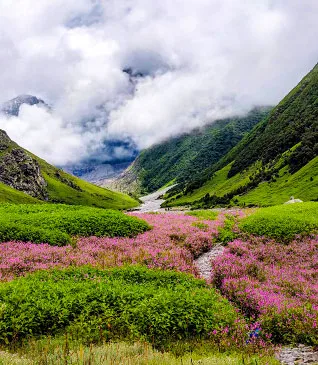
Valley of Flowers Trek
.webp)
Gaumukh Tapovan Trek
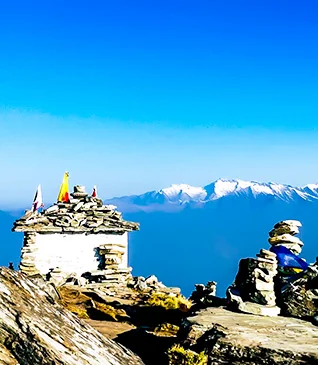
Chopta Chandrashila Tungnath Trek with Deorital
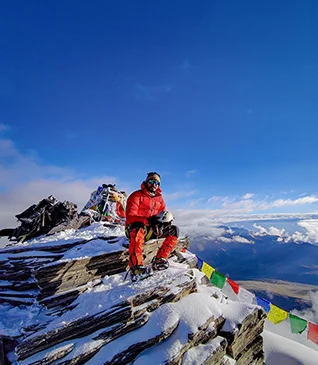
Kang Yatse II Peak Trek Expedition
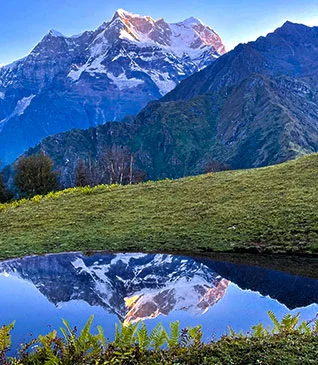
Panchkedar Trek & Drive
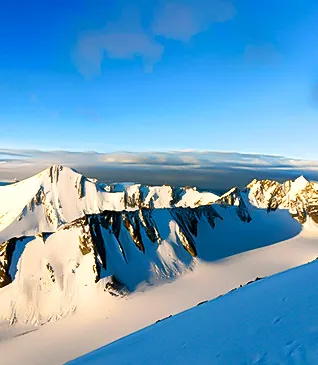
Twin Peak - Kang Yatse II, Dzo Jongo, Markha Valley Trek
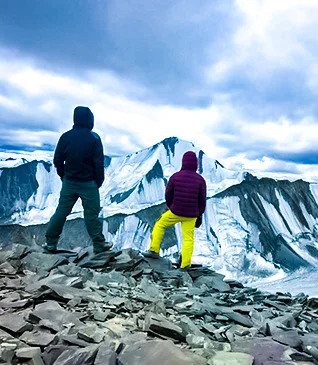
Dzo Jongo Peak Trek Expedition
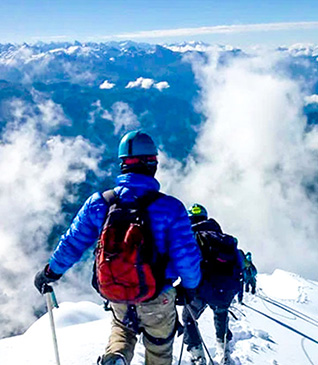
Friendship Peak Expedition
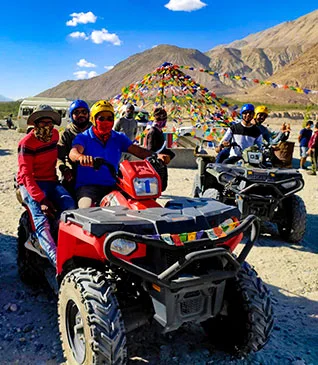
Leh Ladakh Multi-Sports Trip
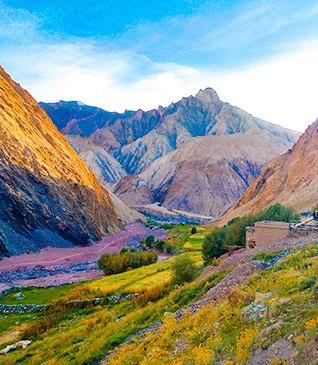
Markha Valley Trek
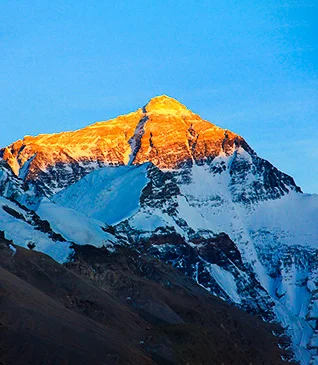
Everest Base Camp Trek
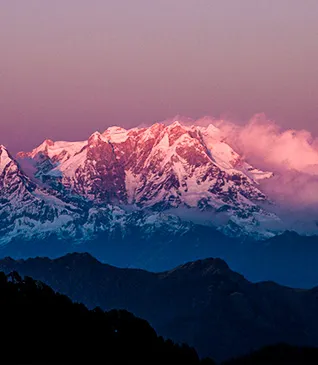
Panwali Kantha Trek
.webp)
Ranthan Kharak Trek
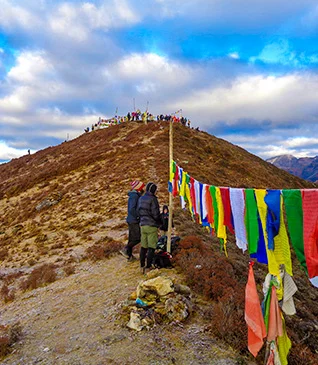
Goechala Trek
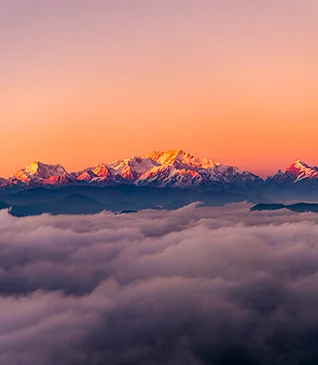
Sandakphu Trek
West Bengal
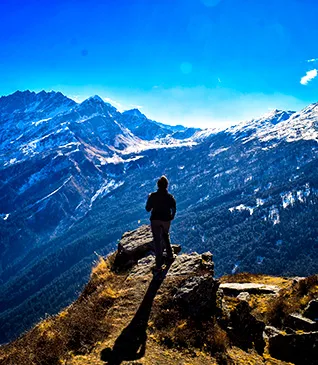
Winter Kuari Pass Trek
.webp)
Dayara Bugyal Trek
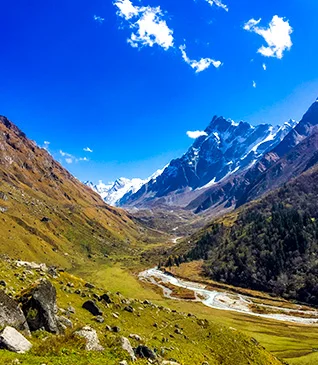
Har Ki Doon Trek
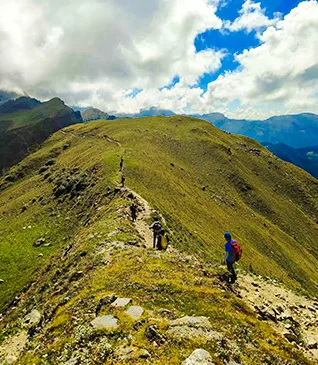
Phulara Ridge Trek
 (1).webp)
Trek Update: Valley of Flowers and Hampta Pass are Fully Accessible for Exploration
.webp)
Har Ki Dun - Best Autumn Trek in Uttarakhand
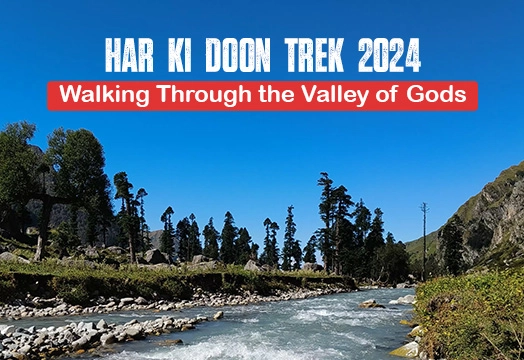
Har Ki Doon Trek 2024 - Walking Through the Valley of Gods
.webp)
Best Time for Kedarkantha Trek in 2024
.webp)
Post-Monsoon Marvel of EBC Trek and Annapurna Circuit Trek
.webp)
Discovering Goechala - A Himalayan Adventure
 (1).webp)
Adi Kailash Yatra : A Spiritual Journey to the Abode of Lord Shiva
.webp)
Know the Hidden Gem- The Brammah Valley Trek
.webp)
Best Time of the Year for Kedarkantha Adventure
.webp)
10 Reasons Why You Should Visit Tarsar Marsar in this Monsoon
Rent A Gear
Trek Articles
Quick Links
Trekking & Hiking
Mountaineering
Multi Sports
Himalayan Pilgrimage
Website Privacy
Terms & Condition
Contact Info
Get in touch with us. E-mail us Monday-Saturday (10 AM to 6 PM)
Address: Trek The Himalayas 7/2/1, Convent road, Near SBI Main Branch Dehradun-248001,Uttarakhand
Phone: 8191004846
Email: [email protected]
2010 Trek The Himalayas. All rights reserved

- Your cart is empty
- Himachal Pradesh
Sar Pass Trek

4 Nights 5 Days
English, Hindi
About this activity
The Sar Pass Trek is a highly popular trekking route in the Parvati Valley of Himachal Pradesh, India, attracting adventure enthusiasts and nature lovers from all over the world. The trek is moderately difficult, making it accessible to those with a reasonable level of fitness and experience. The trek takes you through dense forests of pine, oak, and deodar trees, pristine meadows dotted with colourful wildflowers, and charming villages where you can interact with the locals and learn about their way of life.
The Sar Pass Trek offers breathtaking views of the snow-capped Himalayan range, leaving you spellbound as you trek through some of the most beautiful landscapes in the region, with majestic peaks rising all around you. The trek starts in Kasol and passes through Grahan, a quaint village with apple orchards and wooden houses, a beautiful campsite surrounded by dense forests and towering mountains.
Next, you’ll reach Nagaru, known for its stunning views of snow-capped mountains, and then trek to Biskeri Thatch, a picturesque meadow with rare and exotic flora and fauna. Finally, you’ll cross the Sar Pass at 4,220 metres above sea level to end in Barsheni. Sar Pass Trek takes 4 nights and 5 days to cover approximately 48 km. Best time is from April-June & September-November for comfortable trekking conditions and stunning views of the Himalayas. Avoid the monsoon season – July to August due to risk of landslides and flash floods.
Immerse yourself inside the wealthy cultural tapestry of the Himalayas. Interact with locals, savor scrumptious cuisine, and admire their manner of existence. Embrace camping in the wasteland, stargazing, and reconnecting with nature. In essence, the Sar Pass Trek is an unforgettable adventure.
Quick Facts
Region: kasol, himachal pradesh, sar pass trek start/end point: kasol, sar pass trek duration: 5 days /4 nights, sar pass trek distance: 48 km, sar pass trek altitude: 13,850 ft. (sar pass trek height), sar pass trek temperature: day (15°c to 20°c) & night (5°c to 7°c), sar pass trek best time : april to june (perfect) & september to november, sar pass trek best time :.
Sar pass trek best time is April to June (Sar Pass Trek in Summer) and September to November (Winter Circuit). Spring (April-June): Spring paints the panorama colourful with wildflowers. The climate is excellent, with mild temperatures, making it best for trekking. However, there can be occasional snowstorms at higher altitudes, so bring proper tools. Autumn (September-November) Witness a captivating display of converting foliage colorations. Cooler than spring, the autumn months provide comfortable trekking situations.
Avoid the monsoon rains (July-August) due to the risk of landslides.
What is the Sar Pass Trek?
A1: The Sar Pass Trek is a popular trekking route in the Parvati Valley of Himachal Pradesh, India. The Sar Pass Trek offers breathtaking views of the snow-capped Himalayan range, leaving you spellbound as you trek through some of the most beautiful landscapes in the region, with majestic peaks rising all around you.
Where is Sar Pass located?
Sar Pass is located in the Parvati Valley of the Kullu district in Himachal Pradesh, India.
How long is the Sar Pass Trek?
The Sar Pass Trek typically covers around 48 Kilometres and takes about 5 D/4N to complete.
What is the altitude of Sar Pass Trek?
The highest point of the Sar Pass Trek is at an altitude of approximately 13,800 feet (4,200 meters) above sea level.
What is the best time to do the Sar Pass Trek?
The best time for the Sar Pass Trek is April to June (Sar Pass Trek in Summer) and September to November (Winter Circuit). Spring (April-June): Spring paints the panorama colourful with wildflowers.
What kind of physical fitness is required for the Sar Pass Trek?
Moderate physical fitness is required as the trek involves long walks, steep ascents, and descents. Regular cardiovascular exercise and stamina-building activities are recommended.
What gear is essential for the Sar Pass Trek?
Essential gear includes sturdy trekking shoes, warm clothing, a good quality backpack, sleeping bag, trekking poles, a rain jacket, and basic medical supplies.
How difficult is the Sar Pass Trek?
The Sar Pass Trek is considered to be of moderate difficulty. It is suitable for both beginners and experienced trekkers, although some prior trekking experience is beneficial.
Is it safe to do the Sar Pass Trek?
Yes, the Sar Pass Trek is generally safe if proper precautions are taken. It’s advisable to trek with a guide or a reputed trekking group, especially if you are a beginner.
Are there any permits required for the Sar Pass Trek?
Yes, permits are required for trekking in the Himachal Pradesh region. These can usually be obtained from local authorities or trekking organizers.
How much does the Sar Pass Trek cost?
The cost can depending on the trekking company, duration, and services provided. On average, it can range from INR 8,000 to 15,000 per person, including food, accommodation, permits, and guide fees.
What kind of accommodation is available during the trek?
Accommodation during the Sar Pass Trek is usually in tents. Some base camps may offer basic guesthouse facilities.
Are there toilet facilities on the Sar Pass Trek?
A13: Toilet facilities are basic and usually consist of makeshift toilets in campsites. It’s advisable to be prepared for basic sanitation conditions.
Can the Sar Pass Trek be done solo?
A14: While it is possible to do the trek solo, it is highly recommended to go with a guide or a group, especially for safety reasons and to navigate the trail more efficiently.

What is the nearest town to the starting point of the Sar Pass Trek?
A15: The nearest town is Kasol, which is well-connected by road from major cities like Delhi and Chandigarh.
How Difficult is the Sar Pass Trek?
Sar Pass Trek is rated as reasonably hard. Covering 48 km over 5 days, the trail gives a whole lot of landscapes to overcome. Prepare for steep ascents, descents that will test your patience, serene forest walks, and ability to handle glacier crossings. The maximum factor is Sar Pass at 13,800 ft. Proper guidance is fundamental for a successful and enjoyable Sar Pass Trek.
Acclimatization is essential for adjusting to better altitudes. Spend a few days in Kasol before hiking. Additionally, proper equipment like strong trekking shoes, layers, and a high-quality napping bag is vital. Experienced courses enhance the Sar Pass Trek revel in. Their know-how, navigation skills, and emergency handling provide peace of thoughts. Furthermore, porters are available to hold bags, allowing you to completely immerse yourself in the trekking enjoyment.
Renting Equipment for the Trek?
Don’t fear about lacking trekking tools! Himtrek presents the right of entry to rental equipment. An extensive range of satisfactory items, along with tents, napping baggage, and gaiters, are to be had at reasonable costs. Notify earlier for availability for the Sar Pass Trek in May.
How is the Weather at some stage in the Sar Pass Trek?
Sar Pass Trek weather varies by season. The best hiking season is April to June (Sar Pass Trek in Summer). Expect a quality climate, clear skies, and moderate to chill temperatures. However, temperatures can drop underneath freezing at higher altitudes.
Avoid the monsoon season (July to August) due to heavy rainfall and the opportunity of landslides. Check the weather forecast and pack appropriately, staying hydrated throughout the adventure.
Unveiling the Enchanting Journey: The Sar Pass Trek Route
Sar Pass Trek unfolds its magic through a charming route and numerous landscapes.
Day 1: Kasol to Grahan Village (5-6 hours trek)
Day 2: Grahan Village to Min Thach (4-5 hours trek)
Day 3: Min Thach to Nagaru (3-4 hours trek)
Day 4: Nagaru to Biskeri Thatch via Sar Pass (8-9 hours trek)
Day 5: Biskeri Thatch to Barsheni and Return to Kasol (3-4 hours trek)
Beyond the Himalayas: Exploring the Best Trekking Places in India
India gives various panorama and a plethora of trekking destinations for each adventure.
Hampta Pass Trek : A mild trek traversing the Pir Panjal variety, from lush valleys to high-altitude meadows. The spotlight is conquering Hampta Pass, with perspectives of Chandra Valley and the Dhauladhar variety.
Pin Parvati Pass Trek : A tough epic adventure through dramatic landscapes, glaciers, meadows, and excessive-altitude passes. It culminates in accomplishing the scenic Spiti Valley.
Bhrigu Lake Trek : A slight trek searching for scenic beauty and quietness. Explore wildflower meadows, alpine lakes, the turquoise Bhrigu Lake, and a sacred Hindu mythology spot.
Triund Trek: A clean to mild trek with breathtaking views of the Dhauladhar range. Camp underneath starry skies and explore wildflower meadows. A famous desire for novices and households.
Beas Kund Trek: A moderate trek through villages, lush valleys, and ultimately to the supply of the Beas River, the glacial Beas Kund lake amidst stunning mountain scenery.
These extremely good treks exhibit that Himachal Pradesh is a trekker’s paradise, with numerous landscapes starting from snow-capped peaks to verdant valleys.
Sar Pass Trek Height: Reaching for Breathtaking Views
Sar Pass Trek boasts a peak of about 4200 meters (13,799 ft). It gives trekkers stunning panoramic views of the Himalayan landscape, along with the Parvati Valley, Tosh Valley, and peaks of the Greater Himalayas.
Reaching the summit affords a feeling of accomplishment and awe as you are walking within the vastness of the mountains. However, it is crucial to acclimatize nicely for higher altitudes.
How to Reach Sar Pass Base Camp (Kasol)
By Air: The nearest airport is Bhuntar (31 km), with taxis/buses to Kasol.
By Train: Joginder Nagar Railway Station (144km), with taxis/buses to Kasol.
By Bus: From Delhi and Chandigarh, there are bus connections to Kasol. From the nearby Bhuntar, you may take local shipping to Kasol.
Packing List for a snug and secure Sar Pass Trek:
Clothing: Sturdy hiking shoes, thermals, jackets, trousers, t-shirts, hats, shades, and gloves.
Backpack: 40-50 liter capability is appropriate.
Trekking essentials: Poles, headlamps, water bottles, purification tablets, whistle, sunscreen, insect repellent.
Optional: Camera, strength bank, gambling playing cards, notebooks.
Treks in Himachal Beyond the Sar Pass Trek
Triund Trek: A mild trek presenting perspectives of the Dhauladhar variety. A scenic choice after the Sar Pass Trek.
Hampta Pass Trek : A moderate venture traversing various landscapes from forests to moonscapes, culminating at a high-altitude pass.
Beas Kund Trek : A religious journey to the supply of the Beas River, surrounded by peaks and serene meadows.
Bhrigu Lake Trek: A distinctly smooth trek to the scenic Bhrigu Lake, nestled amidst wildflower meadows, imparting a picturesque breakout.
Himachal Camping Adventure Awaits After the Trek
Extend your leave and discover the camping beauty around Kasol after concluding the Sar Pass Trek. Numerous campsites amidst nature provide the proper opportunity to unwind after the challenging trek. Wake up to the sound of gushing rivers, and chirping birds, and find yourself surrounded through the majestic Himalayas.
Kasol Adventure Camps like Himtrek Riverside Camps Kasol provide cushy tents and cottage accommodations. Savor clean nearby delicacies and spend evenings around the bonfire, sharing stories under the starry sky.
Ready for a lifetime adventure? Camp within the Himalayas with Himtrek and enjoy Himachal’s splendor. Contact them for your dream trekking in the Himalayas or Himachal camping revel in!
- Panoramic Vistas: Breathtaking snow-capped peaks, emerald valleys, and densely wooded area views at the Sar Pass Trek.
- Moderate Challenge: Gear up for the journey! Steep ascents, descents, narrow paths, and low snow.
- Cultural Immersion: Explore remote villages and the wealthy Himalayan culture. Interact with locals and get pleasure from delectable delicacies.
- Camping Adventure: Embrace the desert of Himachal camping on the Sar Pass Trek. Stargaze and reconnect with nature.
- Unforgettable Camaraderie: Build lasting memories and forge new friendships with fellow trekkers. Share demanding situations, triumphs, and breathtaking splendor.
Included/Excluded
- Transportation from Barsheni to Kasol.
- Shared accommodation throughout the trek.
- All vegetarian meals, including a packed lunch on Day 1 and breakfast on Day 5.
- Services of a qualified and experienced trek leader.
- Supporting staff like a cook.
- Forest area entry permits.
- Basic medical aid kit.
- A combination of tent stays and homestay accommodation.
- Camping and trekking equipment (tent, sleeping bags, gaiters, etc.) rental on an optional basis.
- Expenses that are not mentioned in the inclusions.
- Porters/mules for luggage carrying.
- Personal expenses during the trek.
- Personal medications.
Pickup Point
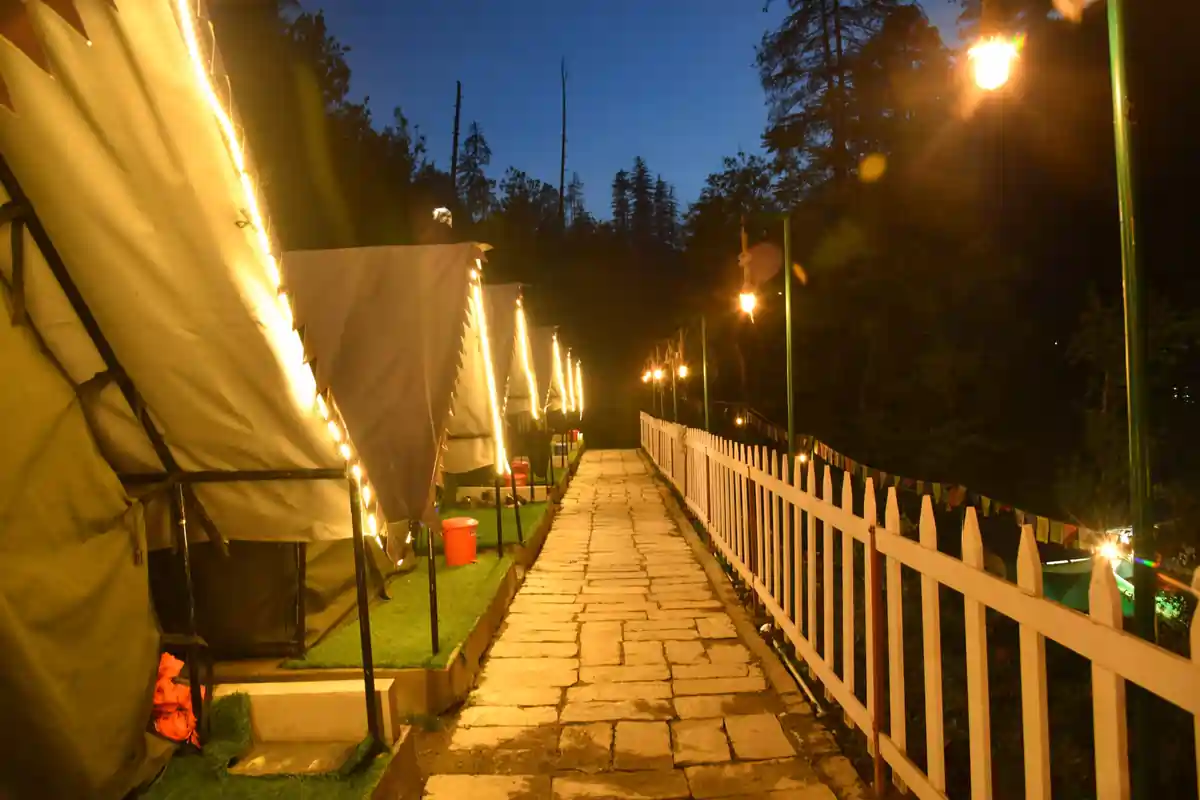
Himtrek Riverside Camps, Kasol, Himachal Pradesh.
Day 1: Kasol and Trek to Grahan village | 5-6 Hours Trek
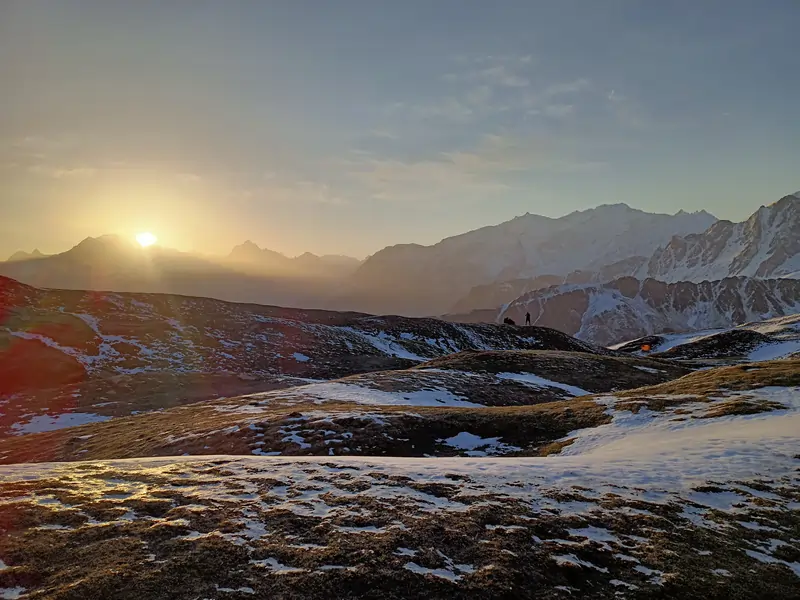
- Commence your journey in Kasol, nestled inside the Parvati Valley. Check-in at Himtrek Riverside Camps Kasol, the trek's starting point.
- Receive a briefing and packed lunch from the trek leader. Embark on the trail from Kasol to Grahan village, winding through dense forests.
- Encounter cascading waterfalls and gurgling streams in a tranquil atmosphere. Face a steeper trail, trying out your patience.
- By past due afternoon, attain Grahan village, a picturesque hamlet nestled in the heart of the mountains.
Day 2: Grahan Village to Min Thatch | 4-5 Hours Trek

- Traverse captivating pine and okay forests as you leave Grahan village.
- Ascend to better elevations at the Kasol trek. Encounter serene streams along the fascinating path.
- Arrive at the Min Thatch campsite in the afternoon. Pitch camp and unwind in the tranquil surroundings.
- Prepare for the next day after today's journey.
Day 3: Min Thatch to Nagaru | 3-4 Hours Trek

- Embark on a challenging trek, ascending in the direction of Nagaru at 12,500 Ft. Navigate the steeper, probably snow-included path with a warning.
- Reach Nagaru by using past due afternoon underneath professional steering.
- Set up camp, surrounded by breathtaking mountain vistas.
Day 4: Nagaru to Biskeri Thatch via Sar Pass | 8-9 Hours Trek
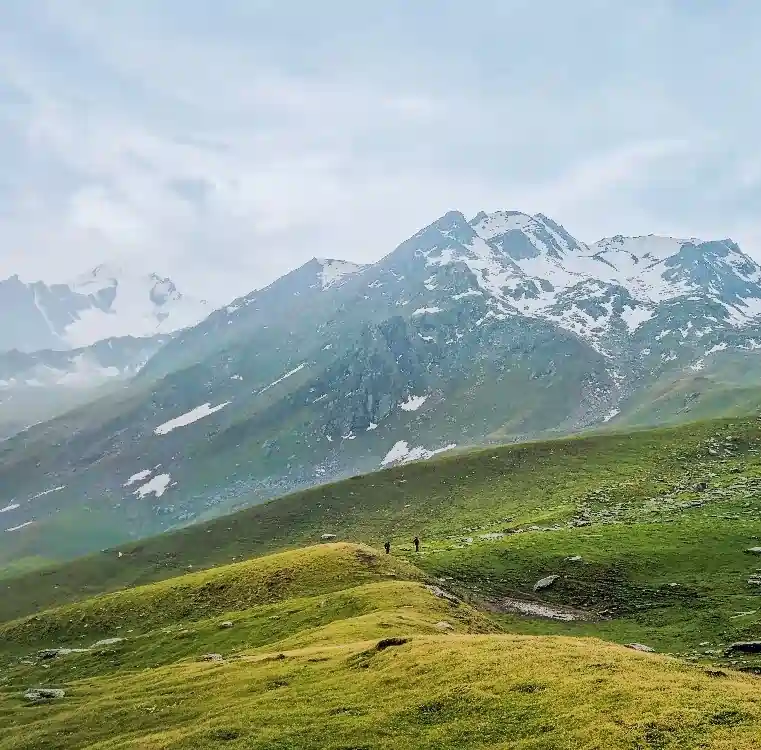
- This Himalayan trek begins at 2:00 AM with a climb to the Sar Pass summit at 13,800 feet.
- The journey involves crossing a snowfield and traversing crevasses, amidst the crisp mountain air.
- The summit offers breathtaking 360-degree vistas of the Pir Panjal and Great Himalayan degrees. The descent leads to the Biskeri Thatch meadow, where the terrain transitions from snow to wildflowers.
- By late afternoon, camp and share reports, enjoying the accomplishment and camaraderie.
Day 5: Biskeri Thach to Barsheni and Return to Kasol | 3-4 Hours Trek
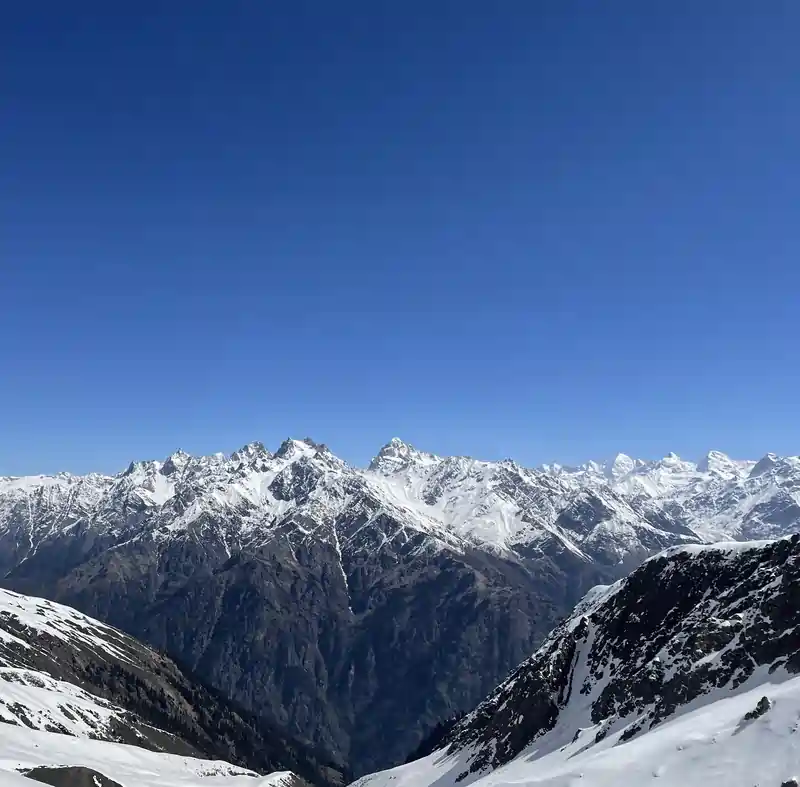
- The very last day of the Sar Pass Trek with a triumphant spirit. Enjoy breakfast and put together for the descent.
- Trek to Barsheni village, marking the completion of your adventure. Unwind on the foot of the mountains in Barsheni.
- Encounter streams and waterfalls, as serenity envelops you. Upon accomplishing Barsheni, you may have a while to discover the village. B
- rowse neighborhood stores for souvenirs and connect to villagers, experiencing their heat hospitality. From Barsheni, you'll go back to the Kasol Basecamp, in which the trek ends.
Activity's Location
Sar pass trek "}}' data-lat="32.0093328" data-lng="77.2942616" data-icon="https://himtrek.co.in/wp-content/themes/traveler/v2/images/markers/ico_mapker_activity.png" data-zoom="16" data-disablecontrol="true" data-street_views="off" data-showcustomcontrol="true" data-style="normal"> from: ₹ 5,699 owner.
Member Since 2023
Explore other options
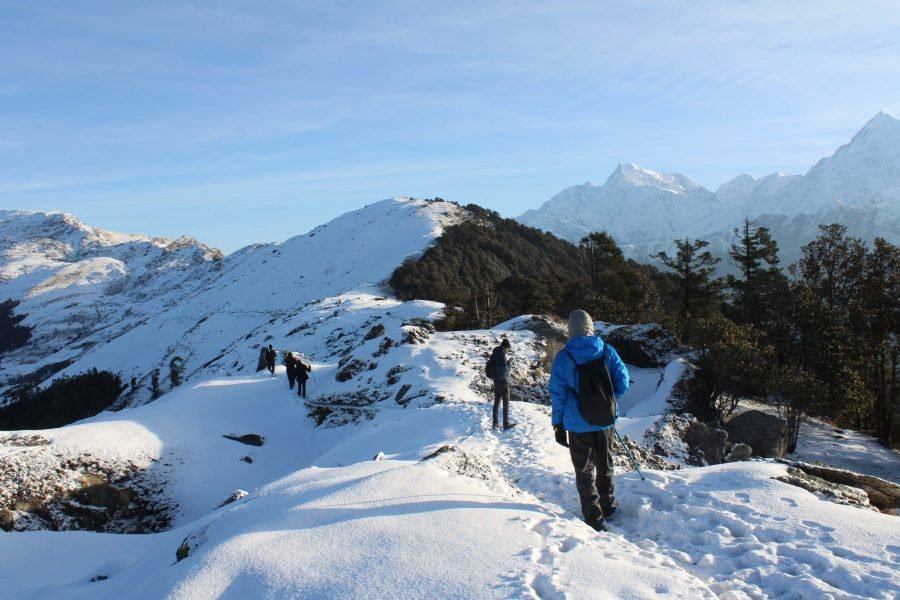
Brahmatal Trek, Uttarakhand 2023
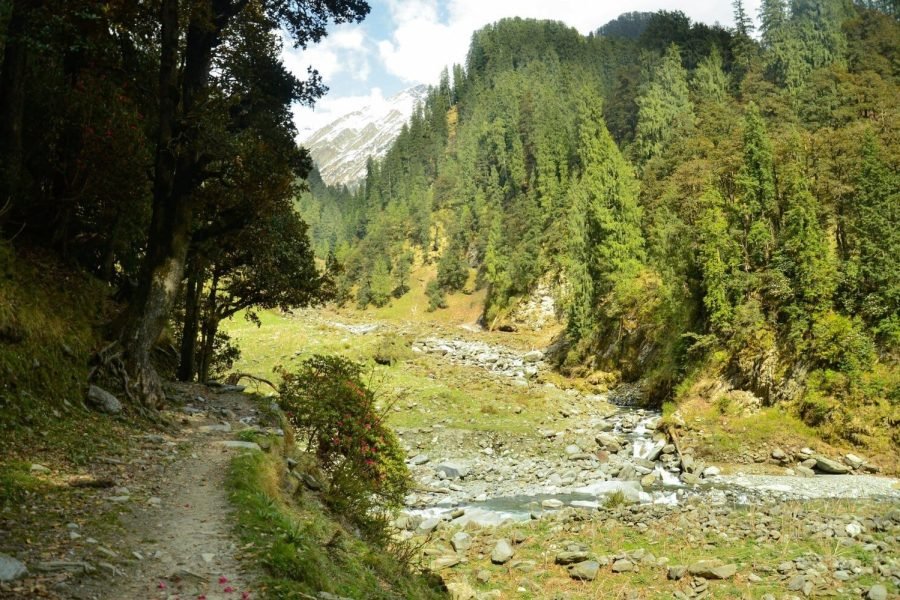
Thamsar Pass Trek
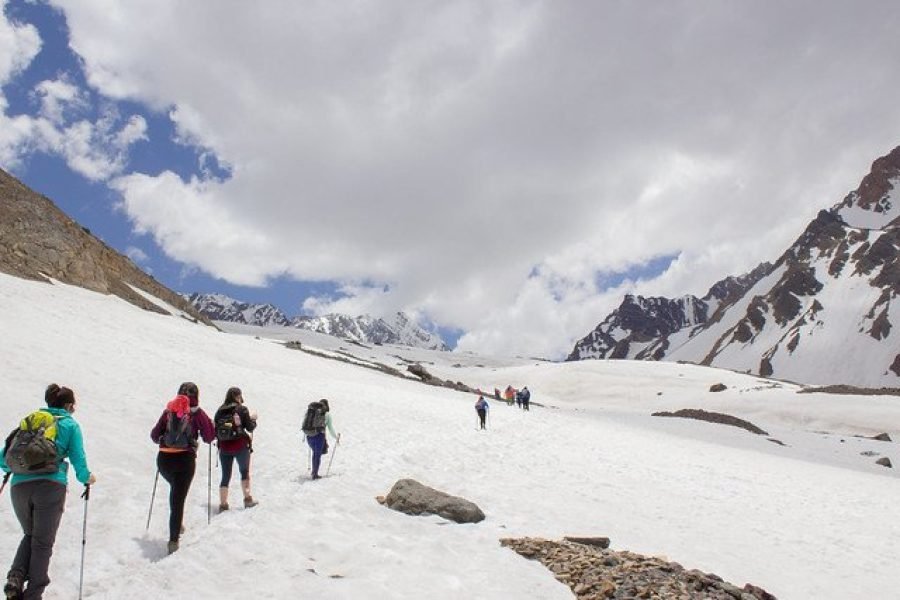
Minkiani Pass Trek, Himachal Pradesh
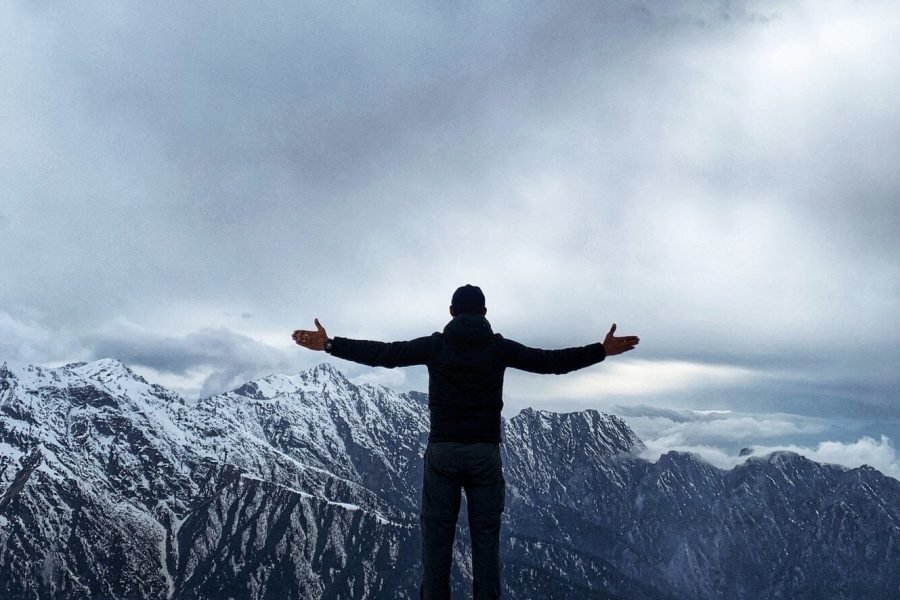
Deo Tibba Base Camp Trek
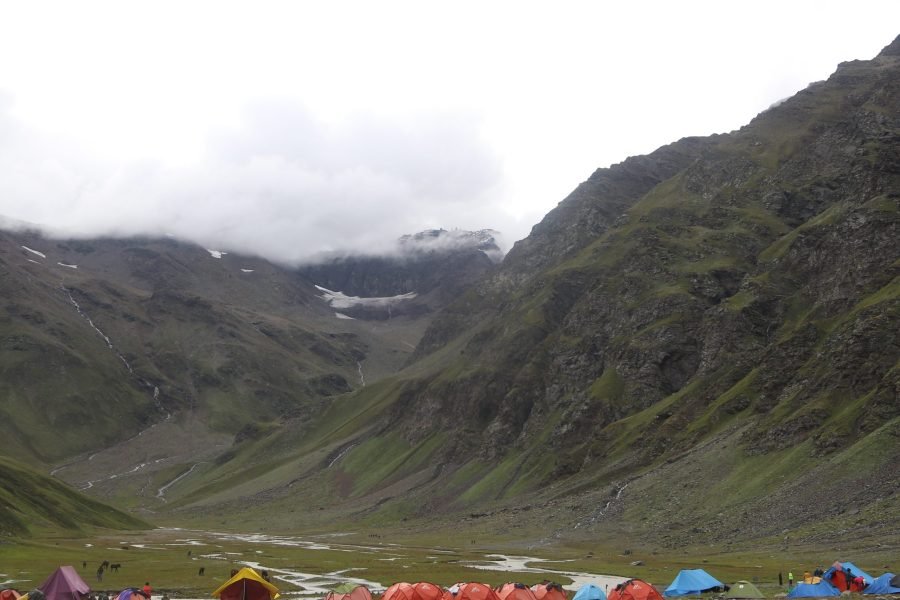
Pin Bhaba Pass Trek
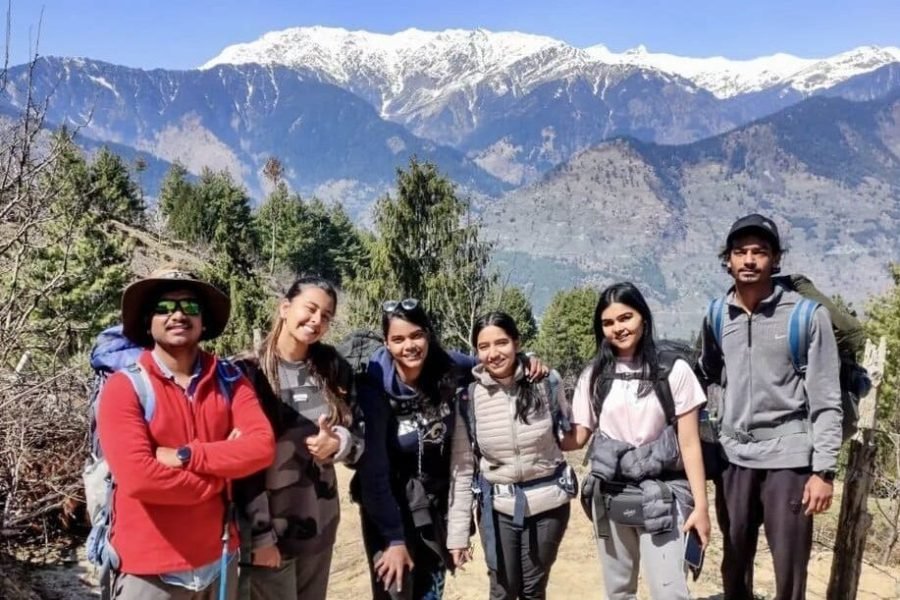
Chandrakhani Pass Trek
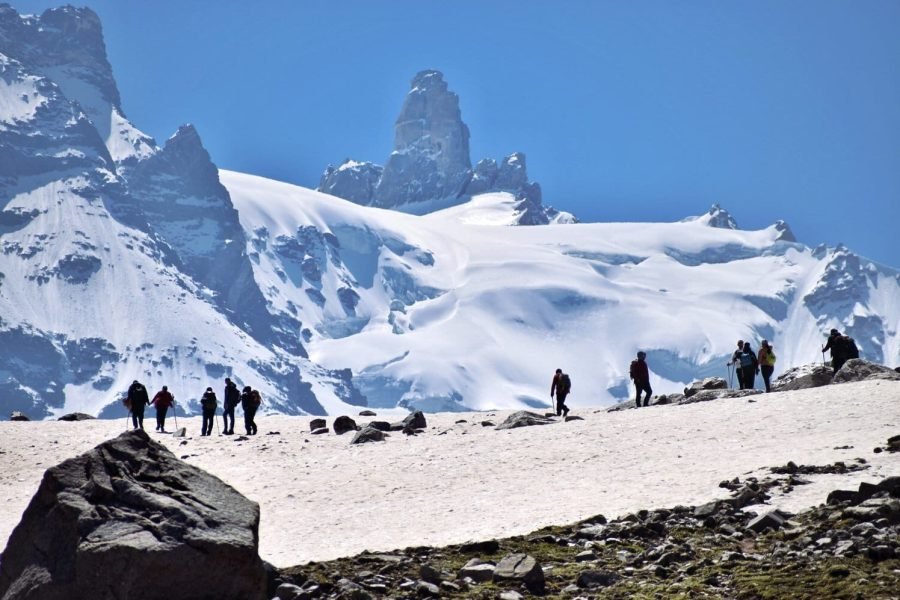
Hampta Valley Snow Trek
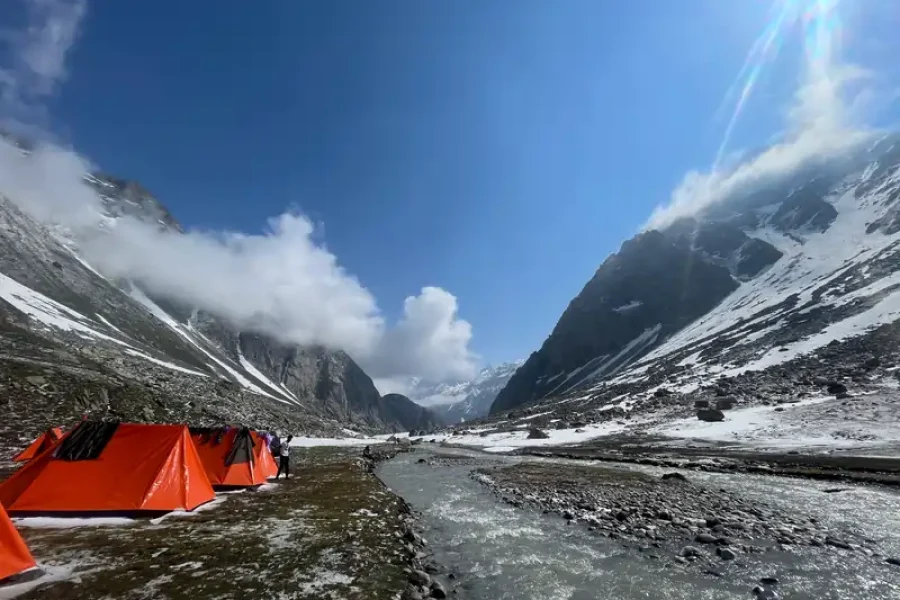
Hampta Pass Trek With Chandratal
or continue with
Select User Type
Enter the e-mail address associated with the account. We'll e-mail a link to reset your password.
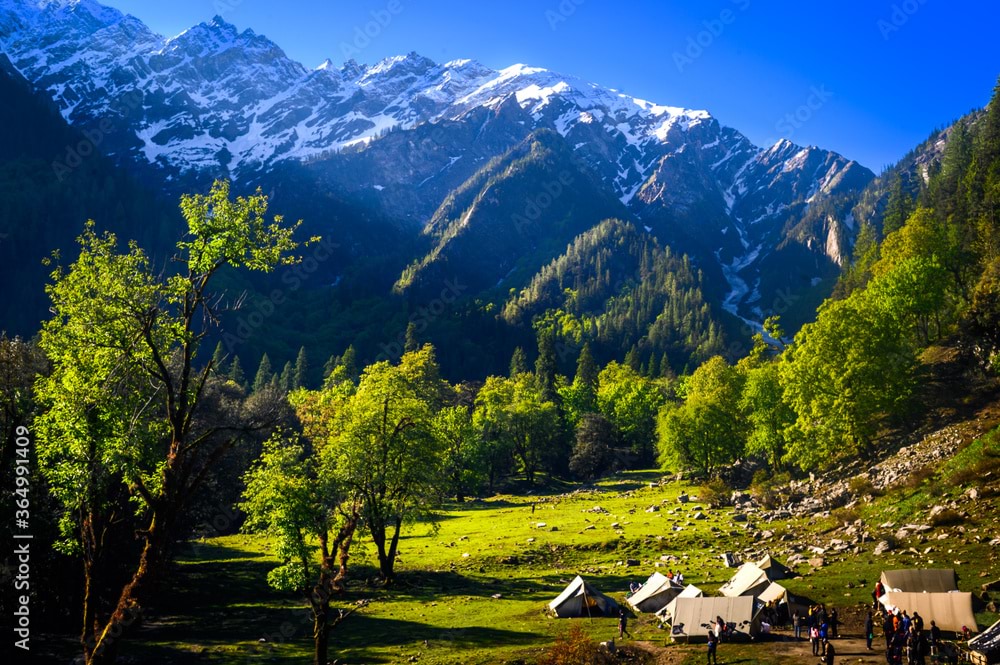
Our soul is outdoors
Some representative placeholder content for the first slide.
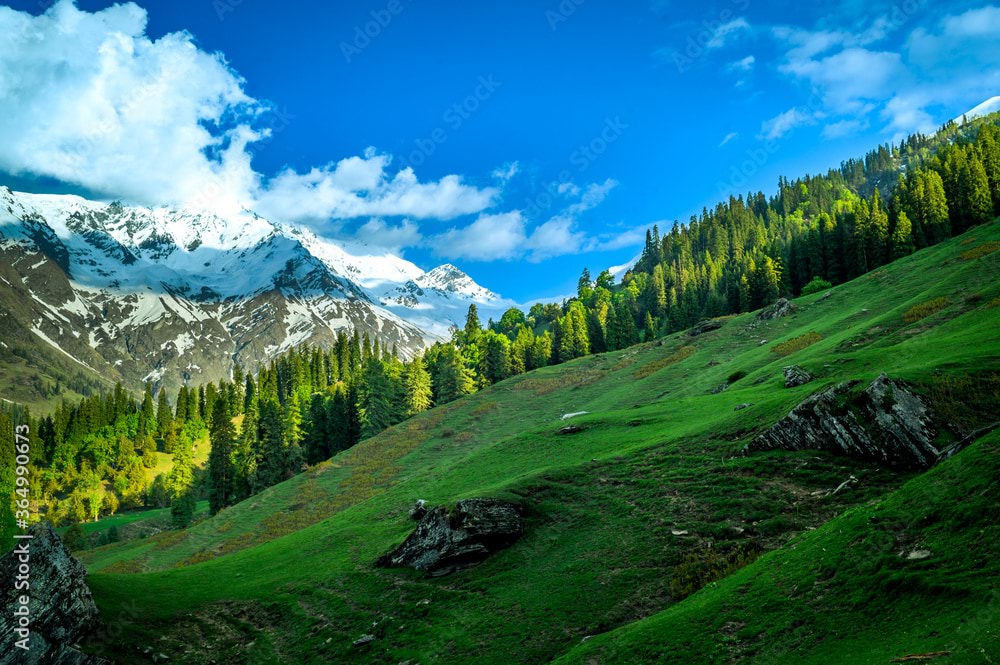
Sar pass Trek 2023
- Trip Nature: Trekking
- Activities: Adventure
- Group Size: 20
- Left Size: 9
- Departure Date: ["2023-04-01","2023-04-02","2023-04-03","2023-04-04","2023-04-05","2023-04-06","2023-04-07","2023-04-08","2023-04-09","2023-04-11","2023-04-13","2023-04-15","2023-04-16","2023-04-17","2023-04-18","2023-04-19","2023-04-20","2023-04-21","2023-04-22","2023-04-23","2023-04-24","2023-04-25","2023-04-26","2023-04-27","2023-04-28","2023-04-29","2023-04-30","2023-05-01"]
Filling Fast
Trip highlights.
The Sar Pass Trek offers a wide range of experiences, from trekking through dense forests and meadows to crossing gushing streams and camping under the stars. Some of the highlights of the trek include:
Kasol Kasol ,also called Mini Israel of India is a small village in the Parvati Valley and the starting point of the Sar Pass Trek. The village is known for its scenic beauty, hippie culture, vibrant markets, tasty cafes, and much more. Grahan Village Grahan Village is a beautiful hamlet situated at an altitude of 7,700 feet above sea level. The village offers picturesque views of the Parvati Valley and is known for its apple orchards and traditional architecture. Min Thach Min Thach is a serene meadow situated at an altitude of 11,500 feet above sea level. The meadow is surrounded by snow-capped mountains and is an ideal place to camp for the night. Nagaru Nagaru is a high altitude campsite situated at an altitude of 12,500 feet above sea level. The campsite offers stunning views of the Himalayan ranges and is a perfect place to witness the sunrise and sunset. Sar Pass Sar Pass is the highest point of the trek, situated at an altitude of 13,800 feet above sea level. The pass offers panoramic views of the Himalayan ranges and is covered with snow throughout the year. Biskeri Thach Biskeri Thach is a beautiful campsite situated at an altitude of 11,000 feet above sea level. The campsite is surrounded by snow-capped mountains and offers stunning views of the Parvati Valley. Tips for Trekking in Sar Pass Trek Trekking in the Sar Pass Trek requires proper preparation and planning. Here are some tips to keep in mind: Carry sufficient warm clothing and trekking gear. Stay hydrated and carry enough water bottles
Experience Which you will Get on Sar Pass Trek :-
Trekking through the serene forests of pine, oak, and deodar, offer breathtaking views of the surrounding mountains and valleys.
Crossing the raging Parvati river and its tributaries on foot over makeshift bridges, which requires careful navigation and offers an adrenaline rush.
Camping in scenic locations like Grahan, Min Thach and Nagaru, where you can witness stunning sunsets and starry skies.
Reaching the summit of Sar Pass, which offers panoramic views of the snow-clad Himalayan peaks and valleys.
Scenic Trail: The trek takes you through some of the most scenic trails in the Himalayas, offering stunning views of the snow-covered mountains, valleys, and waterfalls.
Charming Villages: The trek takes you through charming villages, where you can interact with the locals and learn about their way of life.
Snow-Covered Mountains: The trek takes you through snow-covered mountains, where you can enjoy the thrill of walking on snow.
Campsites: The trek offers several campsites where you can spend the night, enjoying the beauty of the Himalayas under the stars.
Adventure: The trek offers several adventure activities such as river crossing, rappelling, and rock climbing, which add to the thrill of the trek.
Trek Overview
Sar pass trek: a mesmerizing himalayan adventure.
Are you an adventure lover looking for a thrilling trekking experience in the Himalayas? If so, the Sar Pass Trek is the perfect destination for you. The Sar Pass Trek is a popular trek in the Parvati Valley of Himachal Pradesh, India, which offers breathtaking views of the snow-clad Himalayan ranges. This article is your ultimate guide to exploring the beauty of the Sar Pass Trek.
The Sar Pass trek is a moderate to difficult level trek, spanning over 5-6 days, and covering a distance of approximately 35 kilometers. The trek starts from the quaint village of Kasol and takes you through the dense forests, gushing streams, and lush green meadows of the Parvati Valley. The highlight of the trek is the Sar Pass, located at an altitude of 13,800 feet, which offers a panoramic view of the snow-capped Himalayan peaks.
The best time to visit Sar Pass is from April to June and September to November when the weather is pleasant, and the skies are clear.
To make the most of your Sar Pass trekking experience, it is essential to pack appropriately, carry sufficient water and food supplies, and wear comfortable trekking shoes. It is also crucial to respect the local culture and environment and leave no trace behind.
Best Time to Visit Sar Pass Trek The best time to visit the Sar Pass Trek is from the month of April to Month of June and then from September to November. During these months, the weather is pleasant, and the skies are clear, offering a clear view of the snow-capped mountains. However, if you want to witness the snowfall, December to February is the ideal time to visit. Difficulty Level of Sar Pass Trek The Sar Pass Trek is considered a moderate to challenging trek. The trail includes steep climbs, slippery slopes, and narrow ridges, making it a challenging trek even for experienced trekkers. However, with proper physical fitness and mental preparation, anyone can complete this trek. The trek can be done by both novice and experienced trekkers, with proper preparation and guidance from a professional trekking agency. Short Itinerary for Sar Pass Trek Day 1: Kasol to Grahan Village Day 2: Grahan Village to Min Thach Day 3: Min Thach to Nagaru Day 4: Nagaru Campsite to Biskeri Thach Camp Site via Sar Pass Day 5: Biskeri Thach to Barshaini.
In conclusion, the Sar Pass trek is an exhilarating experience that should not be missed by anyone seeking adventure in the lap of nature. With its stunning landscapes, challenging trails, and unique culture, Sar Pass trek is sure to leave you with memories that will last a lifetime
Select Package Option
Day 1 : kasol to grahan village.
Altitude: 1,700 m to 2,350 m
Distance: 10 km
Time taken: 4-5 hours
Follow the marked trail through forests and along the Grahan nalah
Look for makeshift stalls selling refreshments like tea, omelets, and rhododendron syrup
Climb uphill away from the right bank of the river
After a steep climb of about an hour, arrive at the village of Grahan
Accommodation available in guest houses and camping ground
Day 2: Grahan to Min Thach
Altitude: 2,350 m to 3,400 m
Distance: 7 km
Follow the trail north from Grahan, which climbs up gently
Enter a dense forest with little sunlight
The trail becomes steeper and confusing in places
The forest opens up to a grassy patch on a ridge called Min Thach
Enjoy the view of Chanderkhani and other ranges to the north-west
To the south-east, find a seasonal vendor’s hut and a tap with potable water
Camp for the night, protected from strong winds by the ridge
Dig a trench around the tents to allow natural drainage of water in case of rain, hail, or snow
Day 3: Min Thach to Nagaru
Altitude: 3,400 m to 3,800 m
Distance: 8 km
Time taken: 4-6 hours
Start early to avoid slippery snow later in the day
Follow the trail that veers up to the south and goes into the woods
Depending on the weather, watch out for snow
Come to a rocky ridge overlooking a grassy meadow down in the distance
The path goes up the ridge to the cliffs atop which Nagaru sits
After a hundred meters, the tree-line ends and gives way to patches of grass and shrubs
Exercise caution while trekking in snow and rely on a guide and a trekking pole
Proper technique: dig into the snow with your toes, establish a firm foothold, and then put the other foot ahead in the same fashion
After a couple of hours, reach a welcoming patch for camping
Day 4: Nagaru to Sar Pass and Biskeri Thach
Altitude: 3,800 m to 4,220 m to 3,500 m
Distance: 14 km
Time taken: 10-11 hours
Start early to reach Sar Pass before the snow gets too soft
Climb up the ridge-line, and follow the markers
Keep left of the pass, for the right side is very steep and may be slippery
After crossing the pass, descend to Biskeri Thach
Camp near the forest guest house or in the open, depending on the weather
Day 5: Biskeri Thach to Barshaini
Altitude: 3,500 m to 2,500 m
Distance: 12 km
Time taken: 6-7 hours
Follow the trail through the forest, and cross the stream
Reach Pulga, a village with a temple and a waterfall nearby
Trek along the left bank of the Parvati River, through Nakthan and from Barshaini, Then Drive back to Kasol
Trip Policies
- Cancellation Policy
If the user wishes to cancel any booking due to any reason whatsoever, the same shall be only valid if SAR OUTDOORS is notified of the cancellation in writing on its official address or via e-mail, at least 15 days before the commencement of the trip or adventure activity. Any refund due to the user, natural calamity, road blocks will be subject to cancellation charges by SAR OUTDOORS... Read More
Refunds Policy
- If the cancellation request is received before 30 days from the commencement of the trip, the whole amount paid for the trip will be refunded.
- If the cancellation request is received between 15 to 30 days from the commencement of the trip, 50% of the trip cost shall be refunded.
- In cases where the cancellation request is not received before 15 days from the commencement of the trip SAR OUTDOORS shall not be liable to pay any refund.
What is the level of Difficulty in Sar Pass Trek?
When is the best time to do the sar pass trek, what is the duration of the sar pass trek, what is the maximum altitude reached during the sar pass trek, what is the accommodation like during the sar pass trek, what should i pack for the sar pass trek, can i do the sar pass trek solo, is there mobile network coverage during the sar pass trek, what is the package cost of sar pass trek.
Read More...
What is the Kedarkantha trek height?
The Kedarkantha trek height is about 3,810 meters, which is approximately 12,500 ft. high. The trek is a perfect 20 KM long trail where you can witness the beguiling beauties of the Himalayas and feast the eyes with snow-covered pathways. The route is arched with the alpine thickets and the wide array of fauna and fauna are a plus to its beauty.
As the trek height is quite high it gets cold as soon as the altitude increases and the oxygen supply also drops. If you are planning a visit to this high altitude make sure that you are not suffering from any breathing problems!
Trip Review
Is there any safety issue in sar pass trek .
Our Destination expert will be happy to help you resolve your queries for this tour.
- +91-6395358521, 6395272924,
info@saroutdoors
- Verified Reviews --> Expertise in organizing and managing travel adventures in India.
- 10000+ Tours and Activities --> Diverse range of activities tailored to your preferences.
- Customer Delight --> Experienced and knowledgeable guides for a safe and enriching experience.
- Customer Delight --> Emphasis on safety and security with strict standards and trained guides.
- Customer Delight --> Customized itineraries to match your interests.
- Customer Delight --> Commitment to sustainable and responsible tourism practices.
- Customer Delight --> Excellent customer service from start to finish.
- Customer Delight --> Competitive pricing without compromising on quality.
Choose SAR Outdoors for an unforgettable adventure in India
Select Package Options
Please select a tour date
Please select a tour package
Total Travellers
0 adults - 0 children
Select Passengers
Ages 0 - 17
Complete all required fields to continue
Variant Description
The inclusions in the Sar Pass Trek package are as follows:
- Accommodation in tents or guesthouses during the trek.
- Meals (breakfast, lunch, and dinner) during the trek.
- Experienced trekking guide and support staff.
- Camping equipment such as tents, sleeping bags, and mattresses.
- Kitchen equipment and utensils.
- All necessary permits and fees.
- Transportation from the starting point to the base camp and back.
- Medical kit with basic first-aid supplies.
- Briefing and orientation session before the trek.
It is important to carefully review the inclusion and exclusion of the package before booking to ensure that you have a comfortable and hassle-free trekking experience.
- --> Verified Reviews --> 10000+ Tours and Activities --> Diverse range of activities tailored to your preferences. --> Customer Delight --> Experienced and knowledgeable guides for a safe and enriching experience. --> Customer Delight --> Emphasis on safety and security with strict standards and trained guides. --> Customer Delight --> Customized itineraries to match your interests. --> Customer Delight --> Commitment to sustainable and responsible tourism practices. --> Verified Reviews --> Expertise in organizing and managing travel adventures in India. --> Customer Delight --> Excellent customer service from start to finish. --> Customer Delight --> Competitive pricing without compromising on quality. -->